zieloczek100
Newly Enlightened
- Joined
- Nov 13, 2016
- Messages
- 68
Hello,
My name is Eryk. I am writing reviews in Polish.
Reviews I translate – google translator.

Some time ago, an old Nitecore model joined my collection, a torch with MT-G2 diode with a beautiful neutral color - Nitecore P36. A colleague from the forum and administrator Miotacze Fotonow - https://www.facebook.com/Miotacze.Fotonow/ , ie nobody else like @Krul-Mateusz lent me for Nitecore SRT9 tests and today we will try to compare the old and much younger model of one of the more well-known flashlight manufacturers.
Technical specification available on the Nitecore website:
P36 - http://flashlight.nitecore.com/product/p36
SRT9 - http://flashlight.nitecore.com/product/srt9
P36 and SRT9 are obtained in very similar packaging, Nitecore consistently does not change the appearance of packaging, it is obviously a better recognition of their products - pure marketing
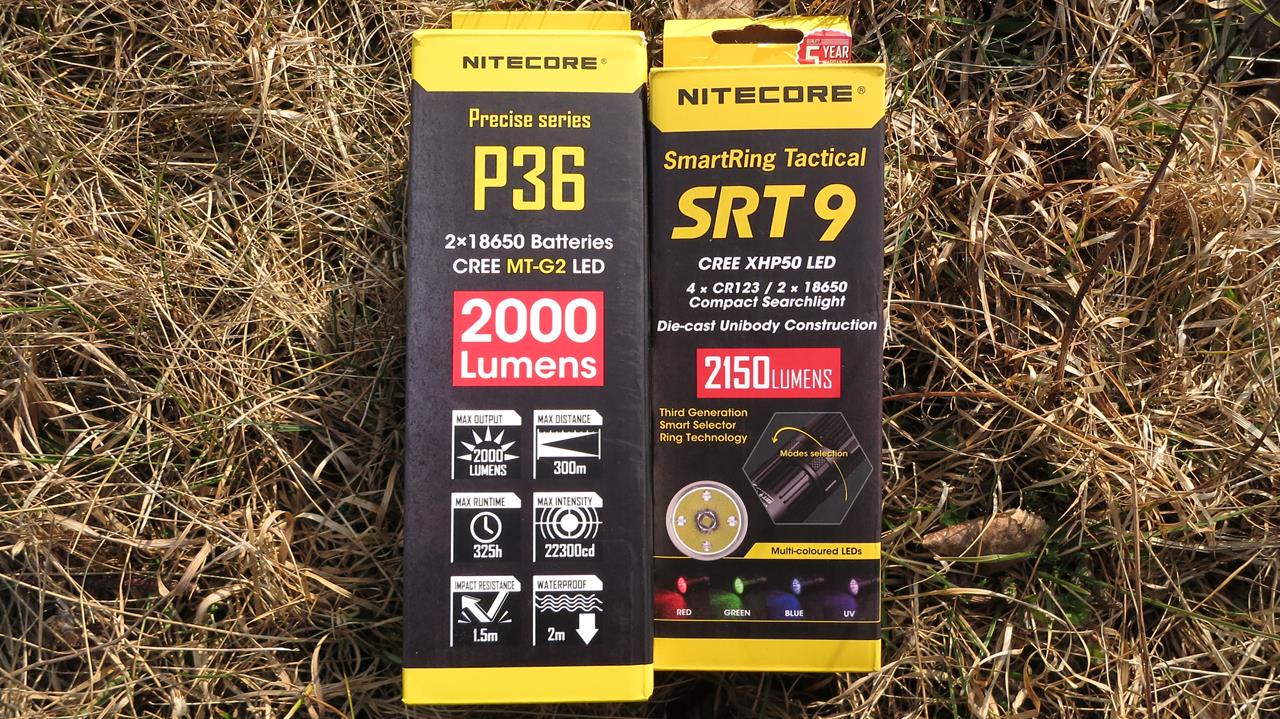
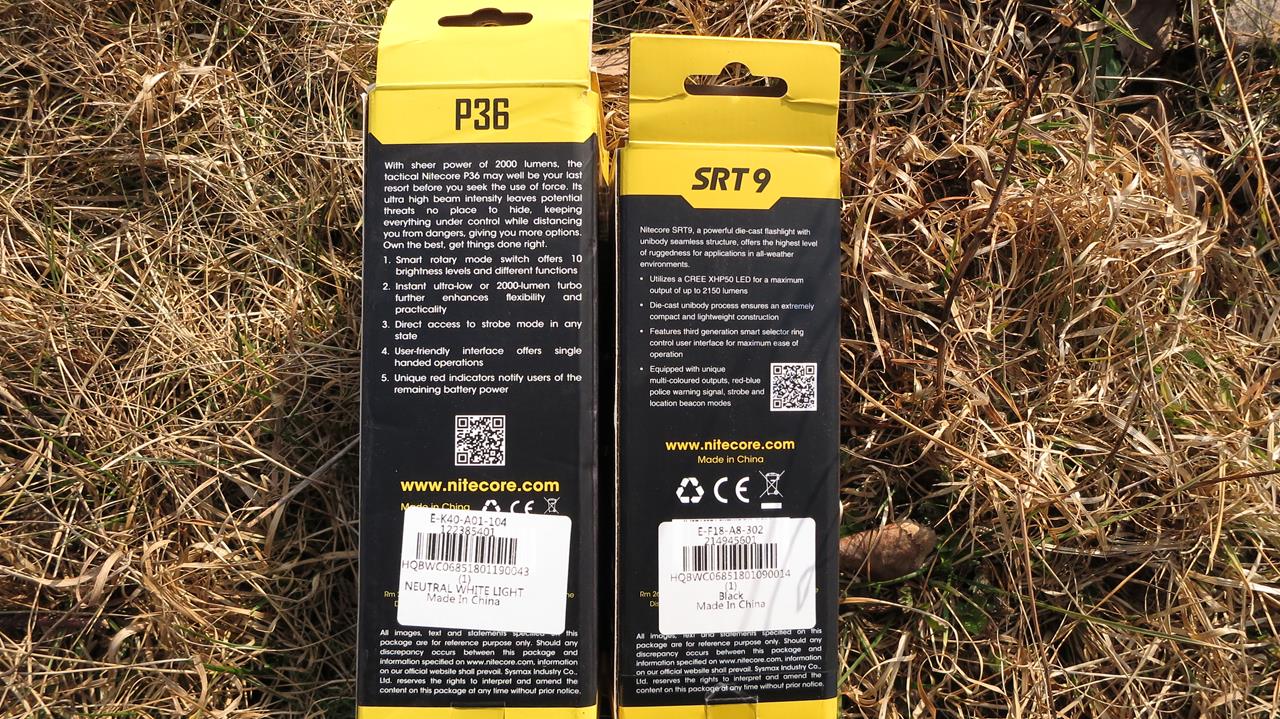
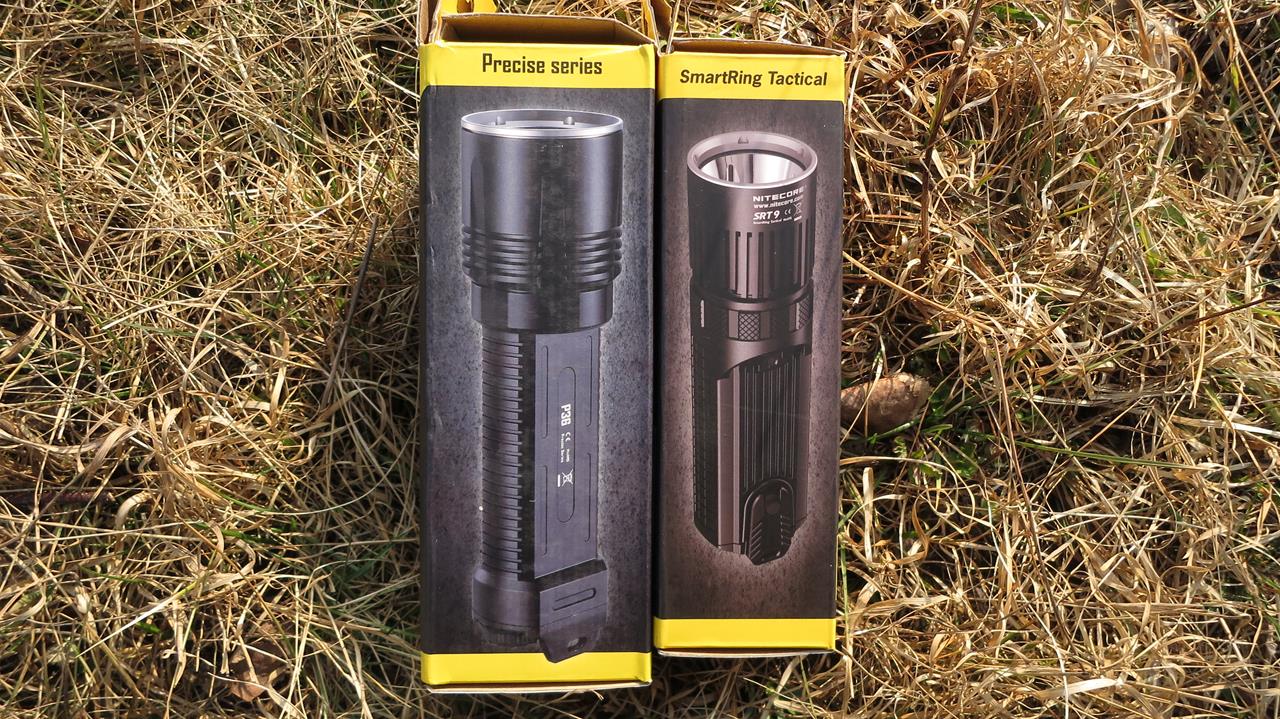
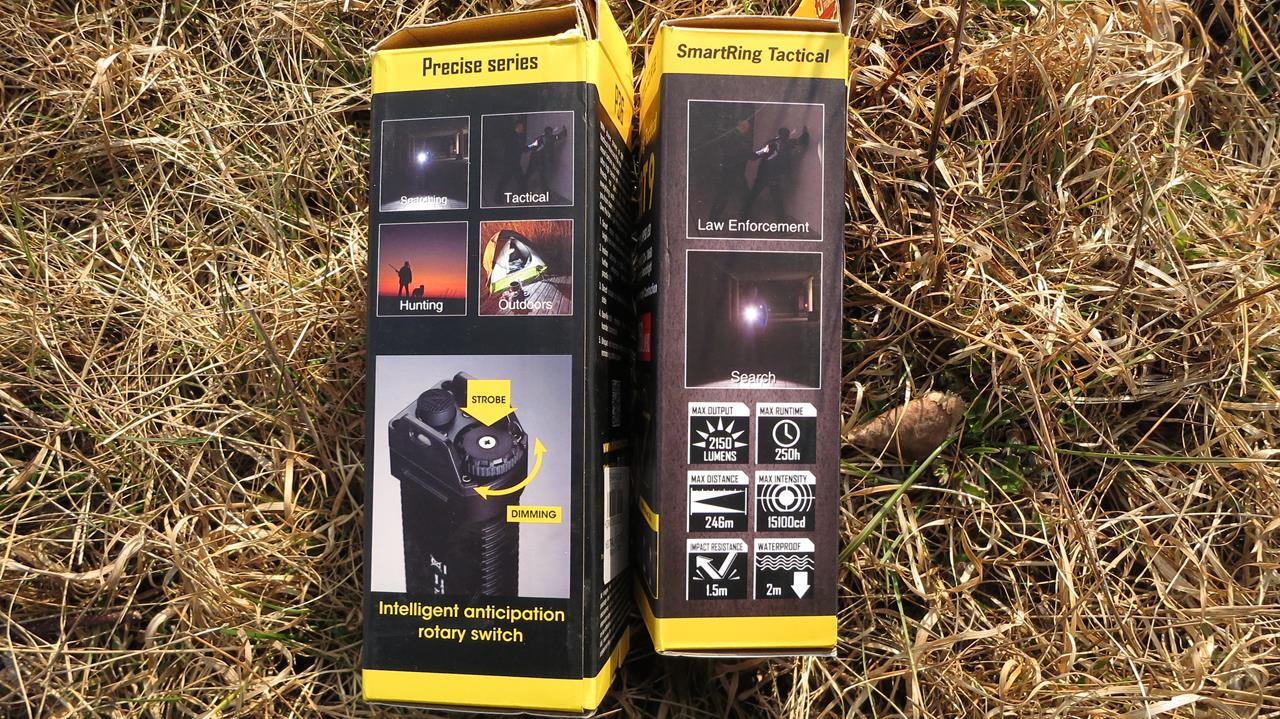
The sets that we receive with the flashlight are very similar, even identical
SRT9:
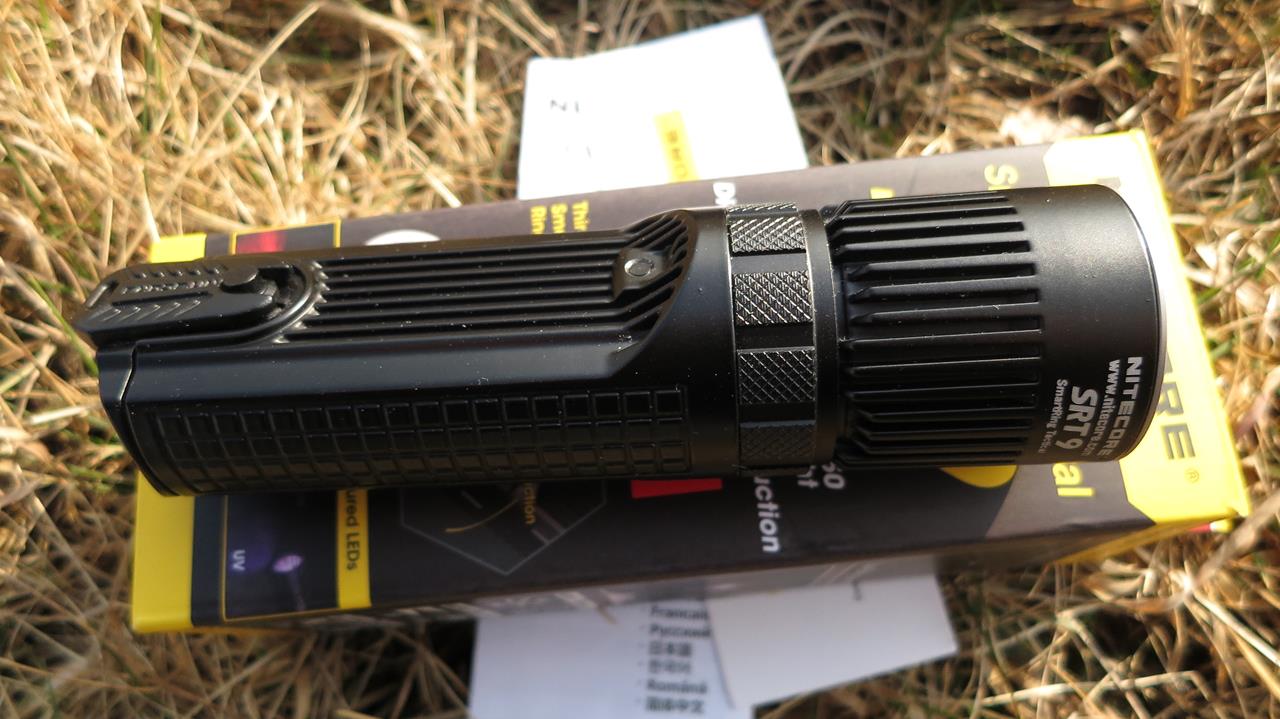
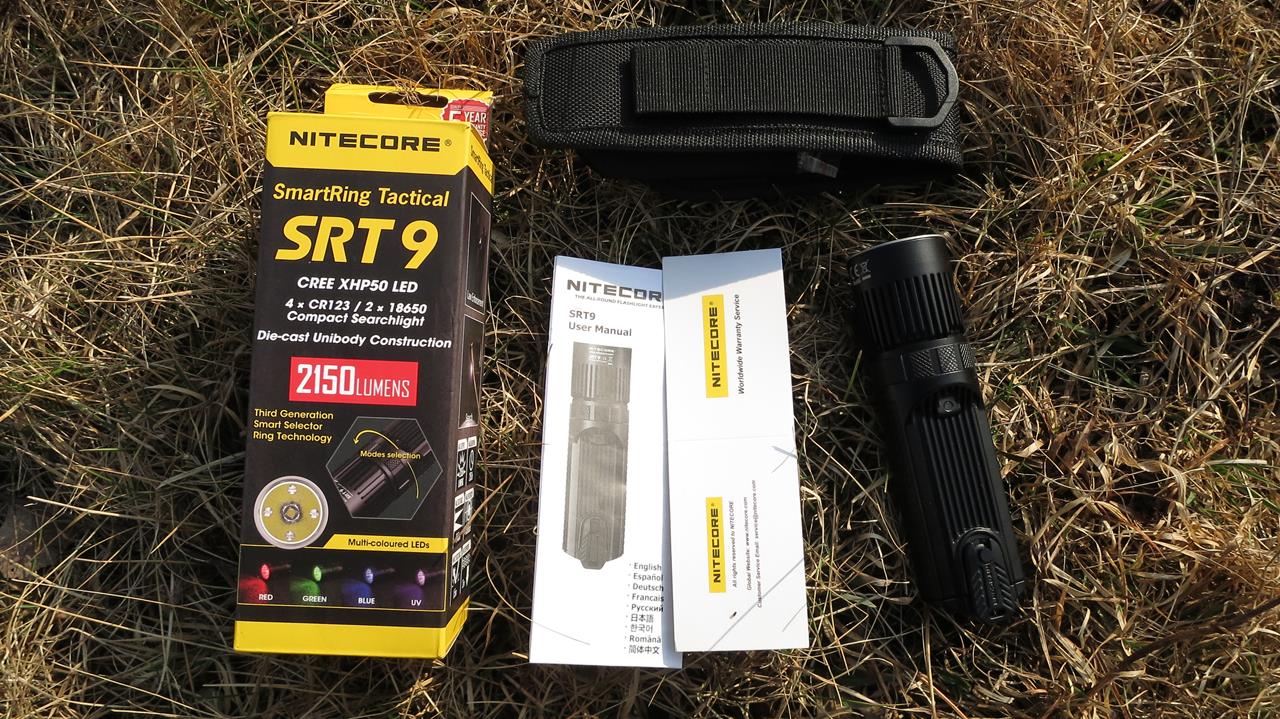
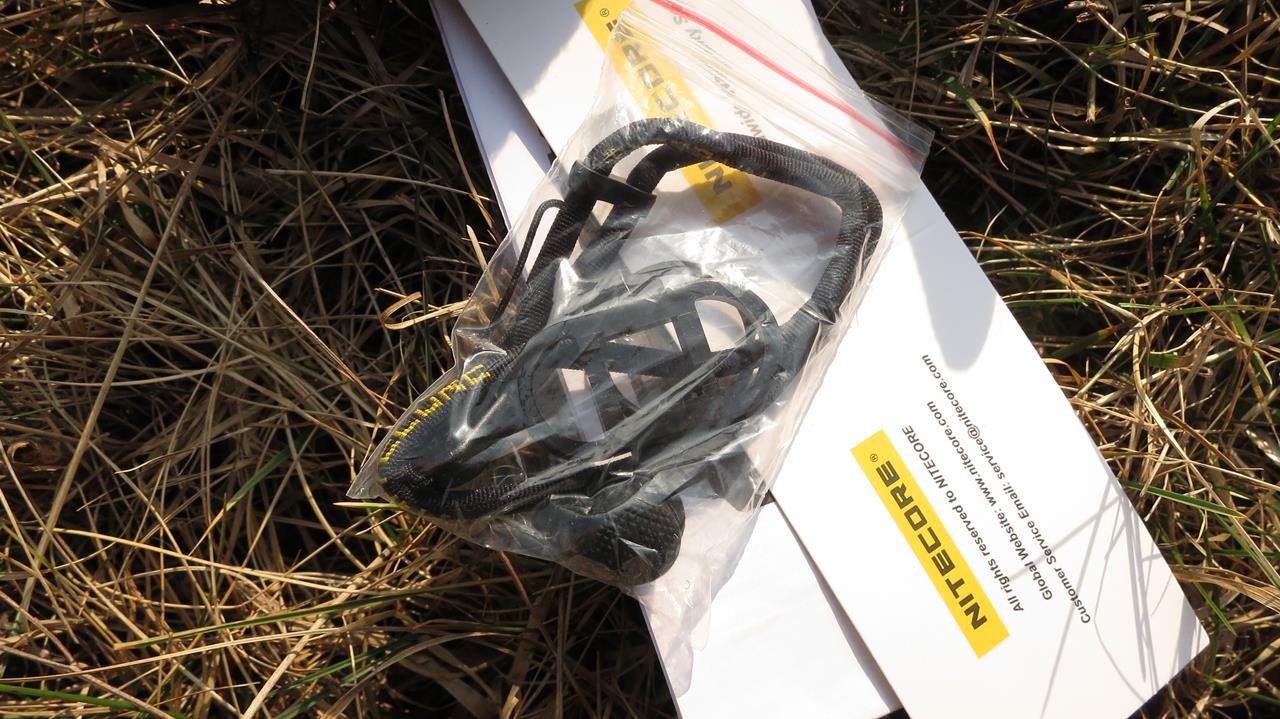
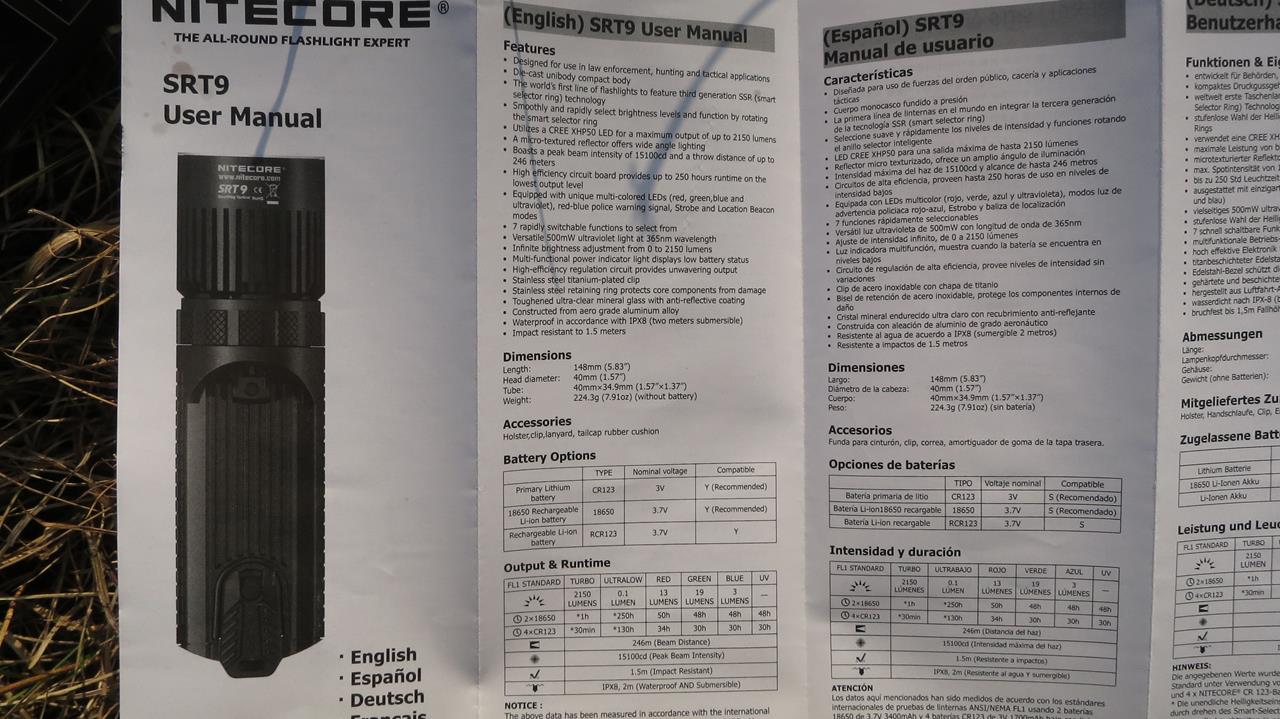
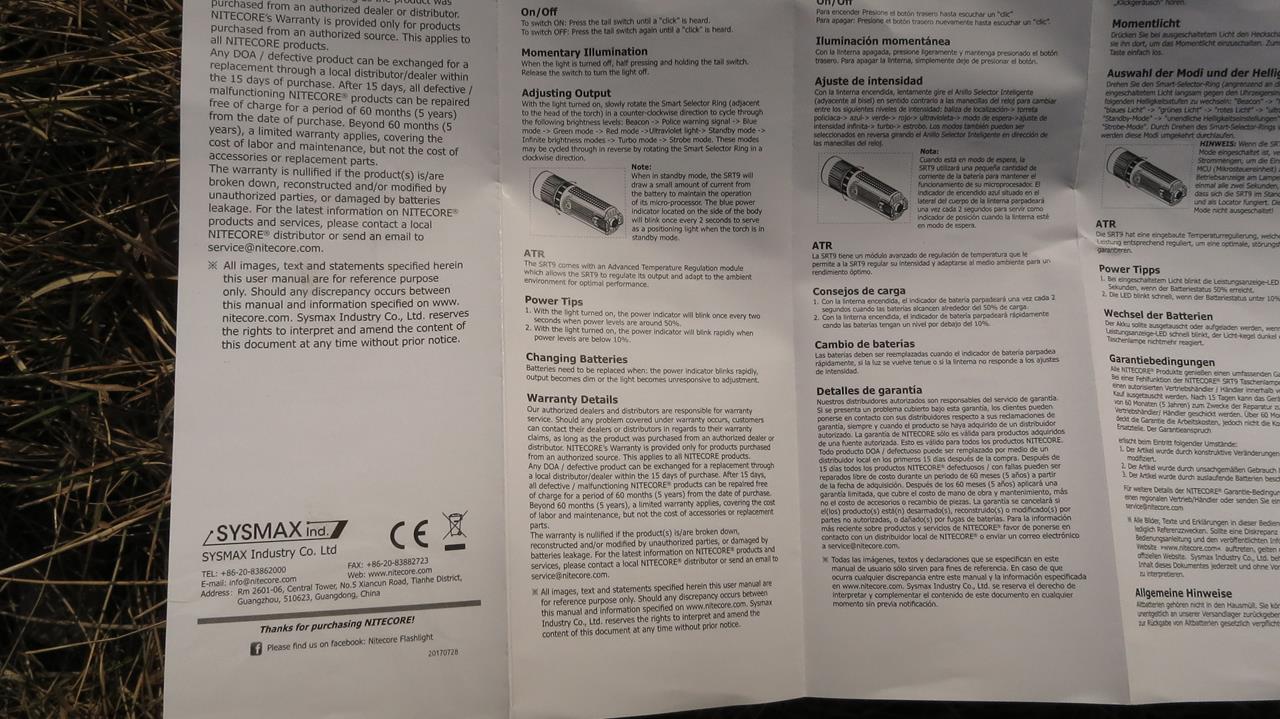
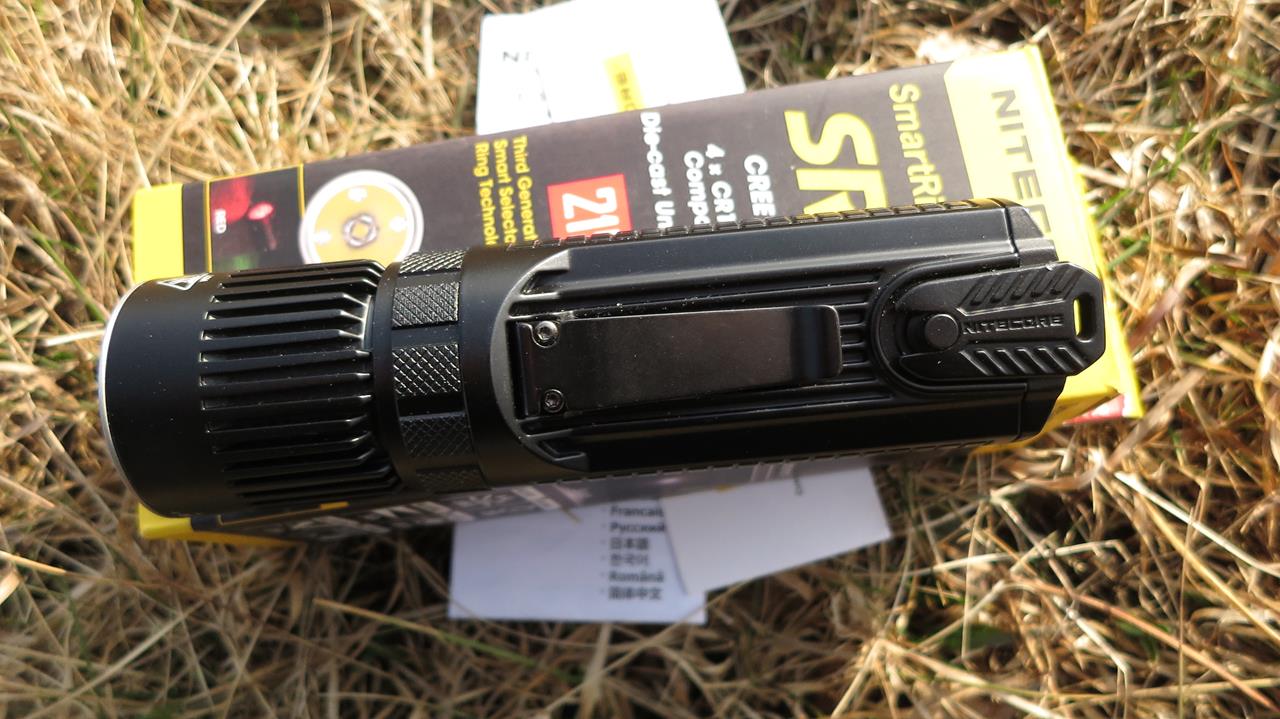
P36:
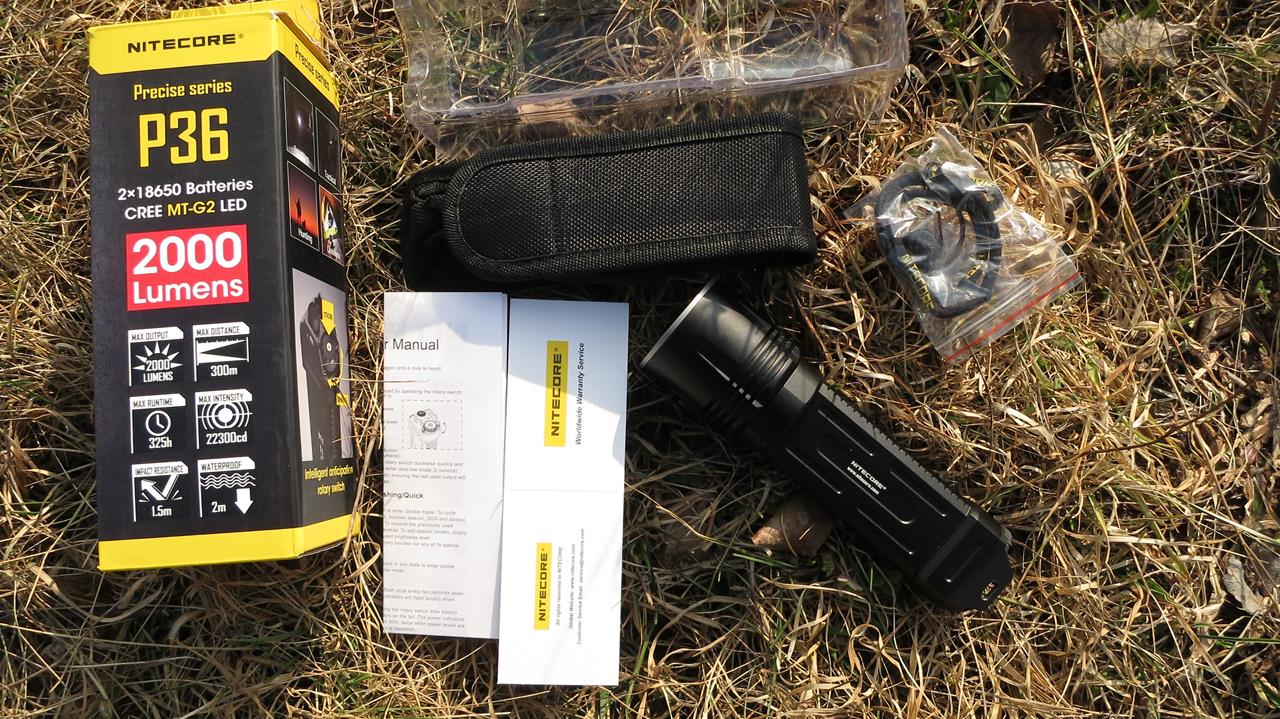
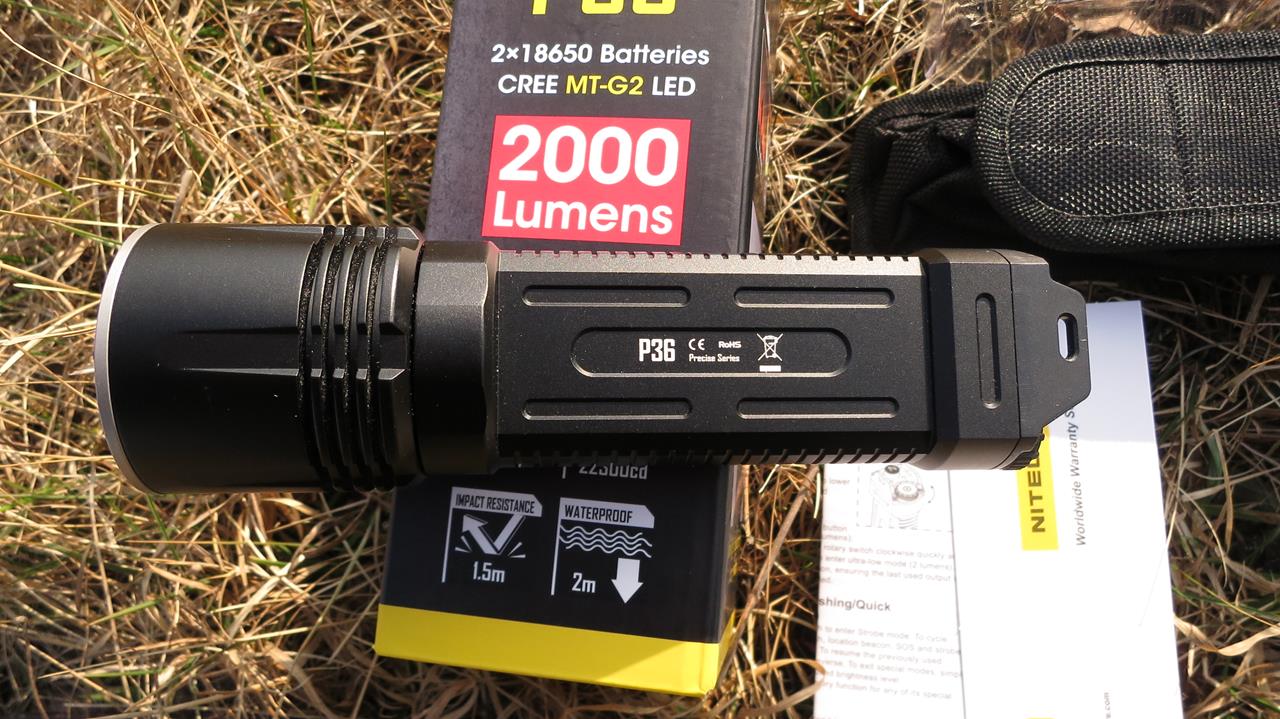
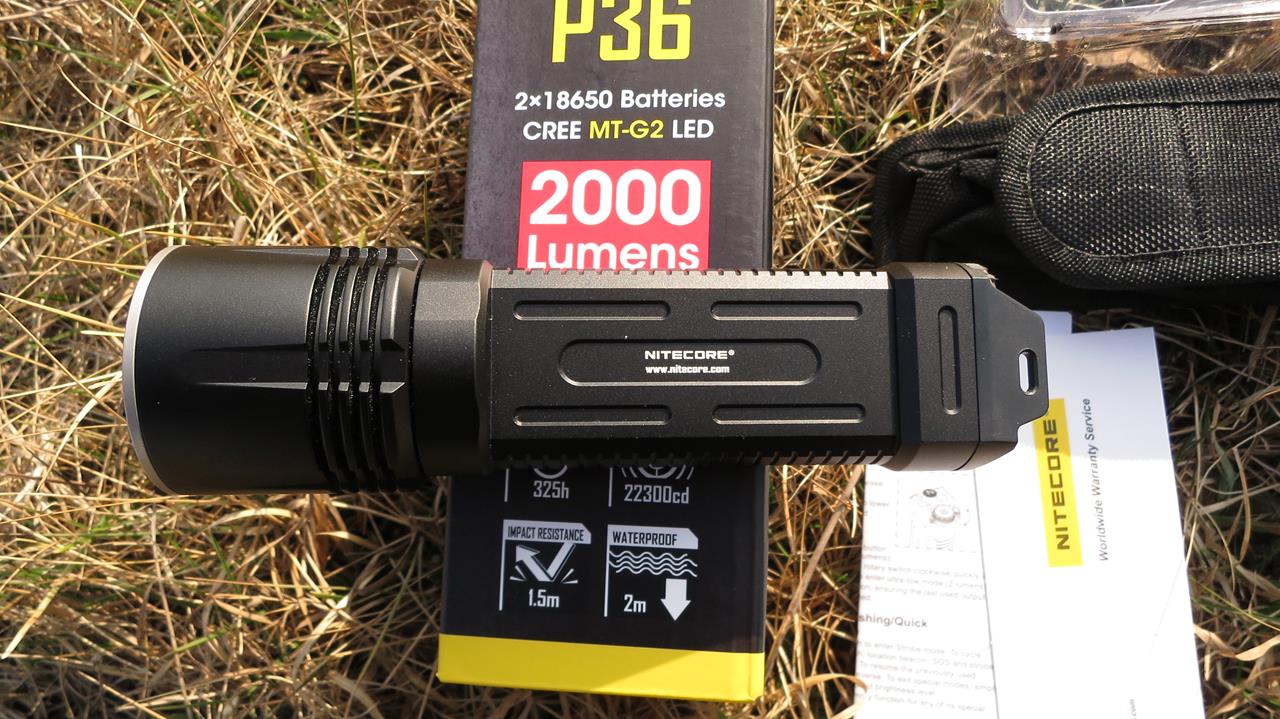
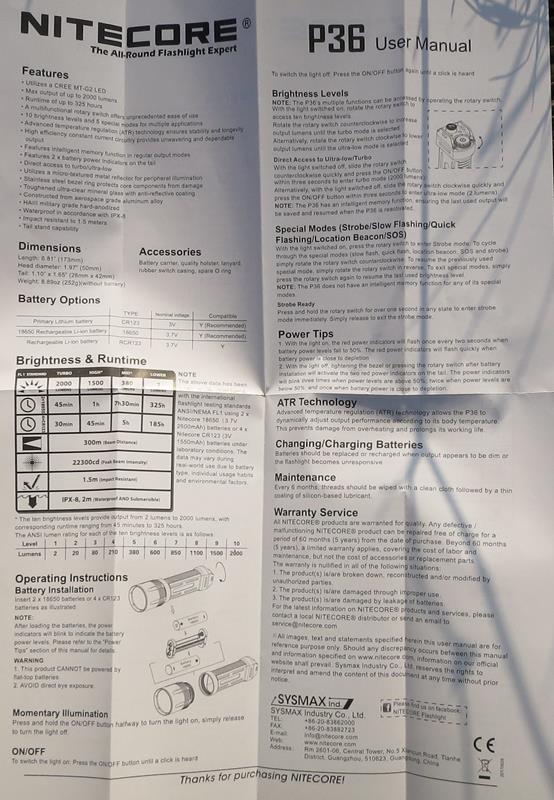
Fast with AR coatings, frosted glass protecting rings (I've always liked it ...)
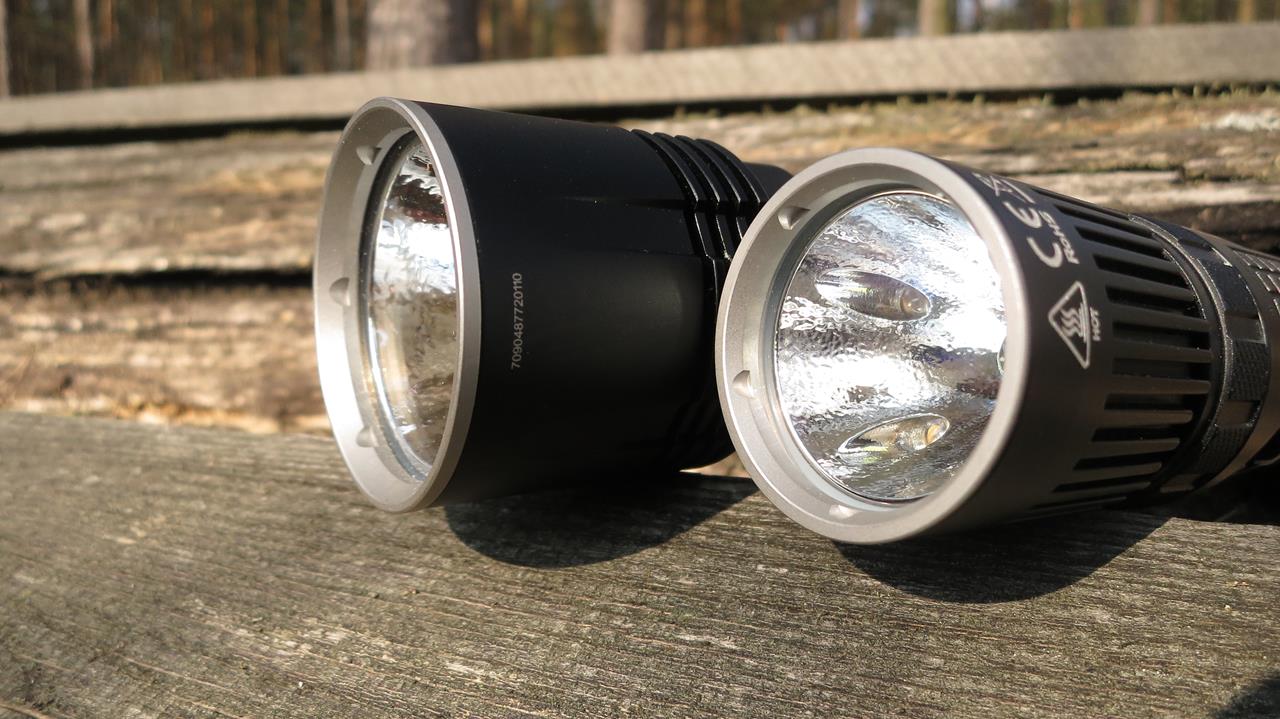
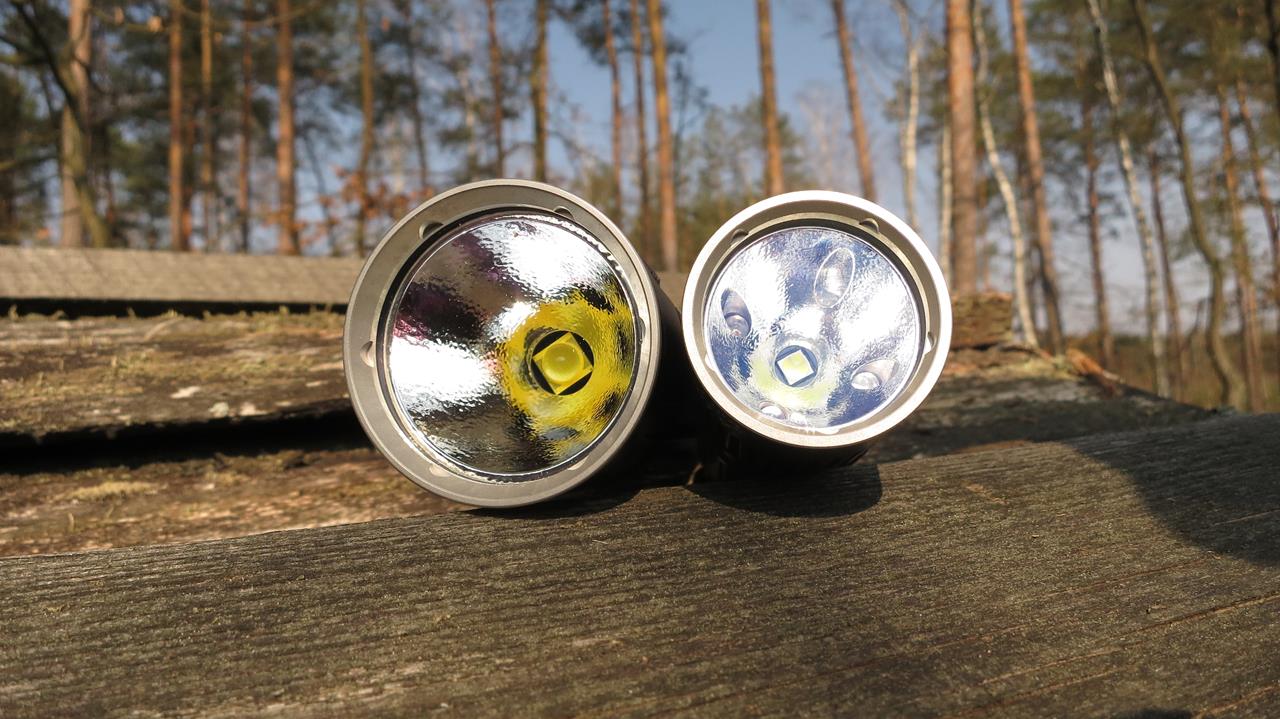
Nitecore SRT9 equipped with XHP50 diode, red, green, blue diodes and UV diode. OP headlamp without peels and other dirt, Nitecore quality

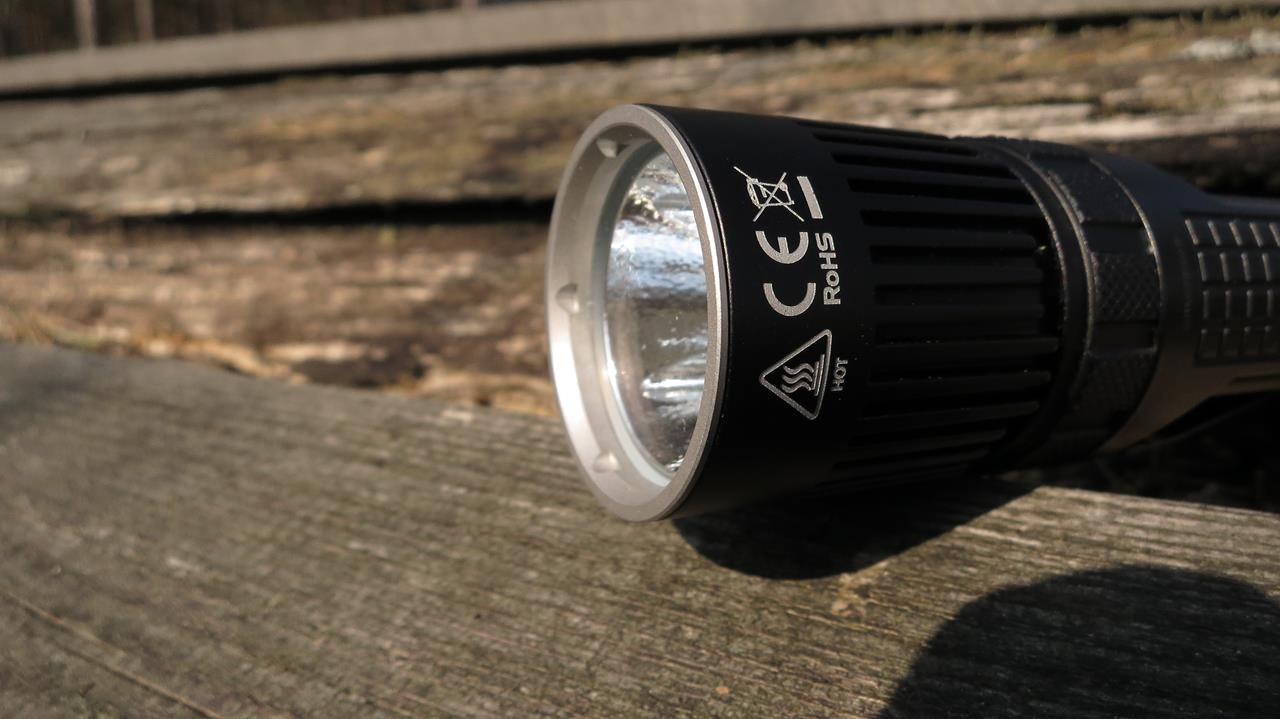
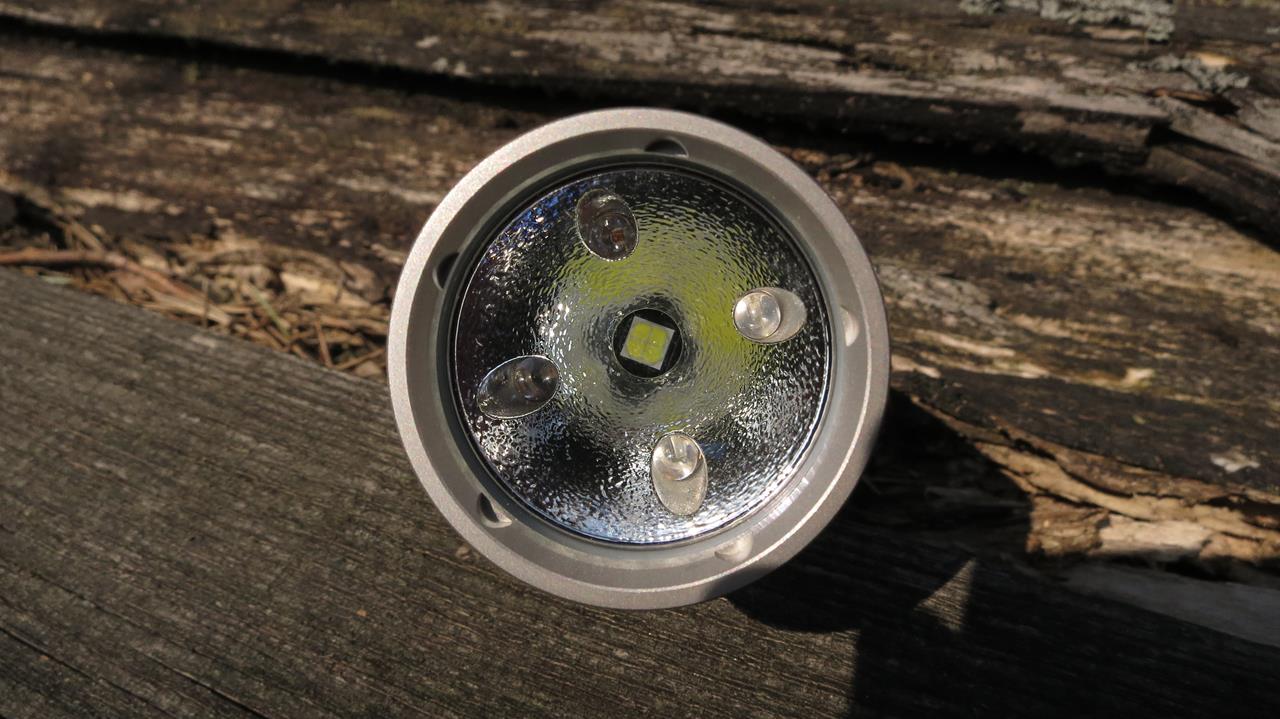
On the head a large inscription Nitecore SRT9, and the manufacturer's website and the development of the abbreviation SRT - SmartRing Tactical. Head with notches for better heat dissipation, and TURBO can warm up well.
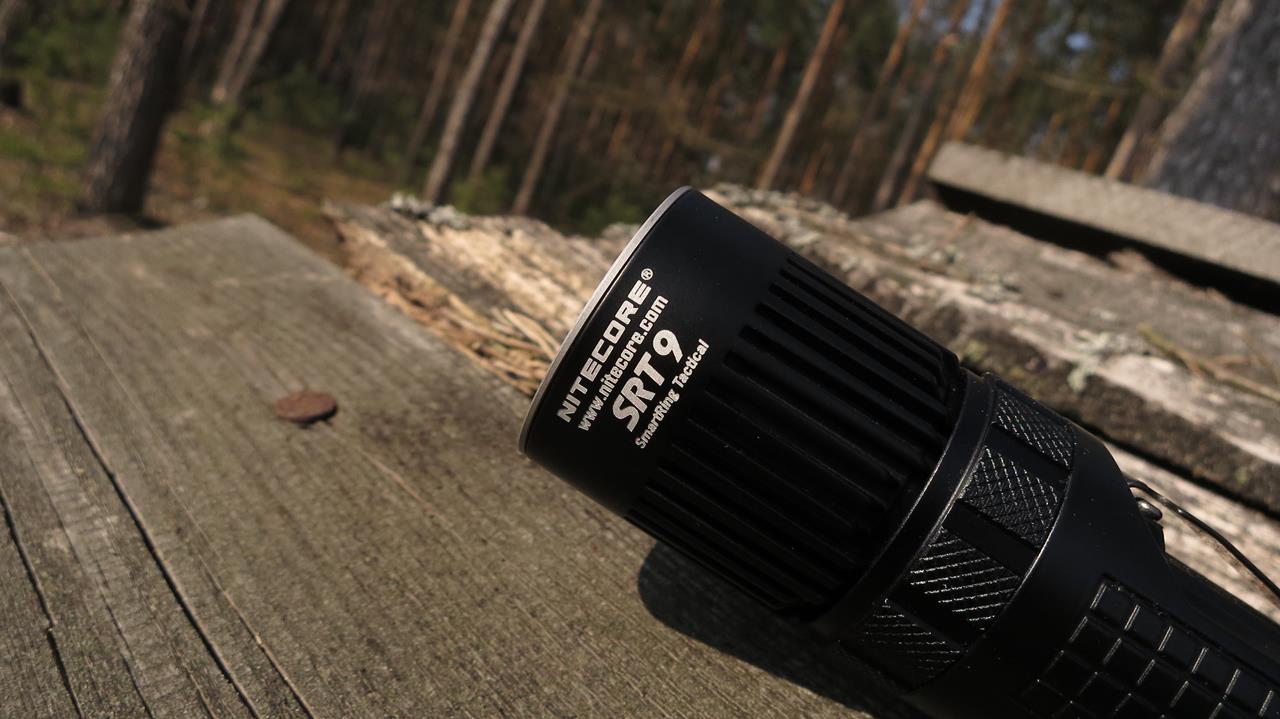
In my opinion, one of the nicer Nitecore models
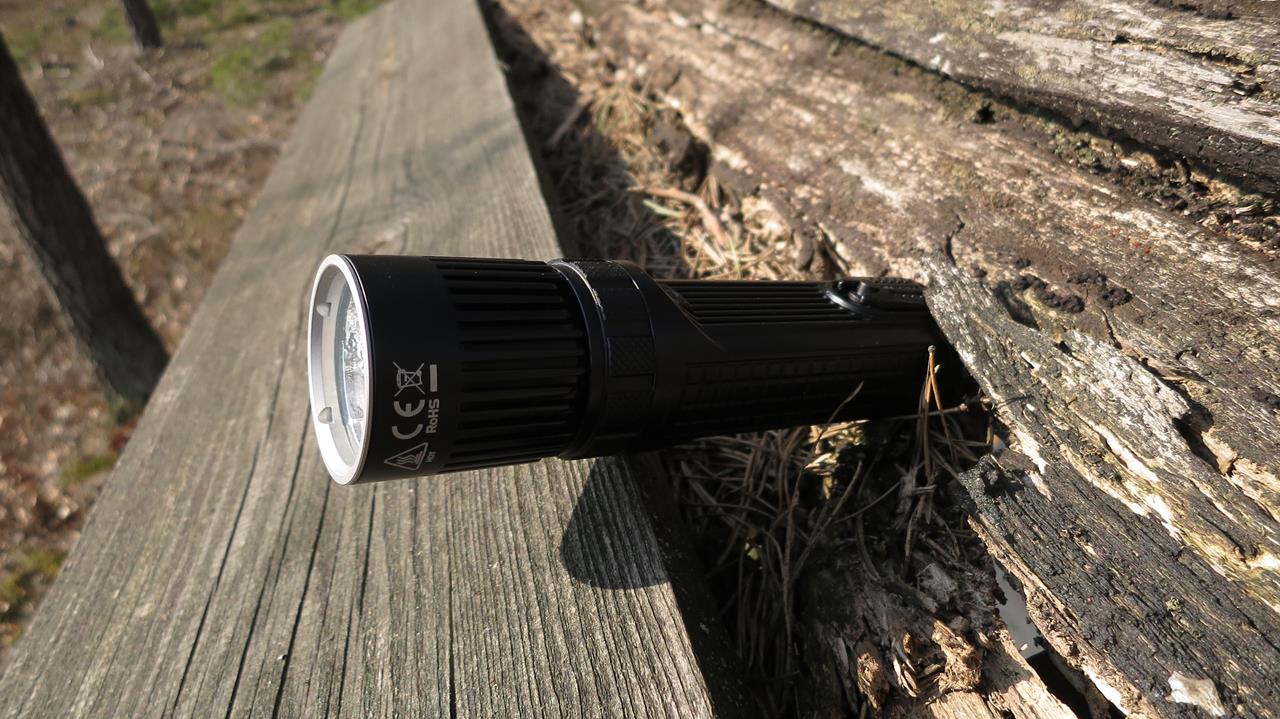
And the mentioned SRT ring, that is the ring for changing modes. Works the same as in SRT7GT, which I tested with considerable resistance, each mode change is marked with a characteristic click
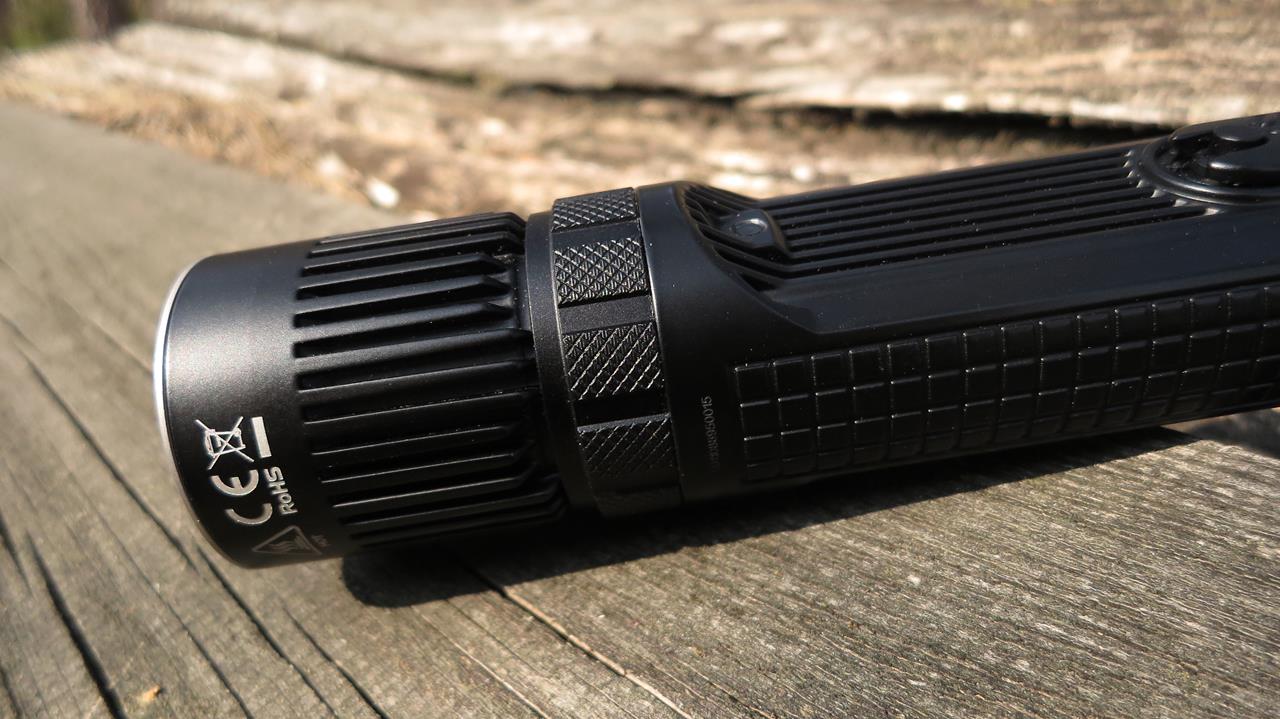
Under the ring the diode, which serves as the flashlight locator (one of the SRT options), and flashes when the cells are discharged and need replacing
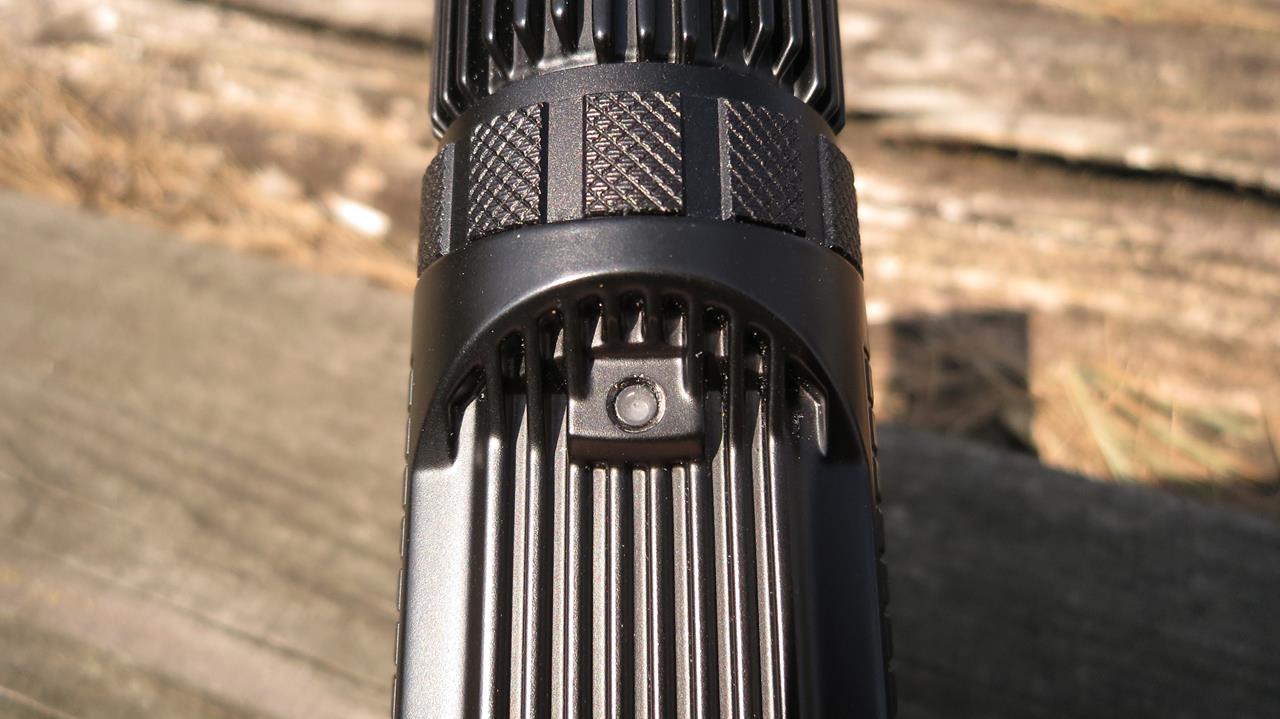
Comes with a clip. The middle tube with notches along, and the ankle on the sides, it's cool in the hand and looks great:
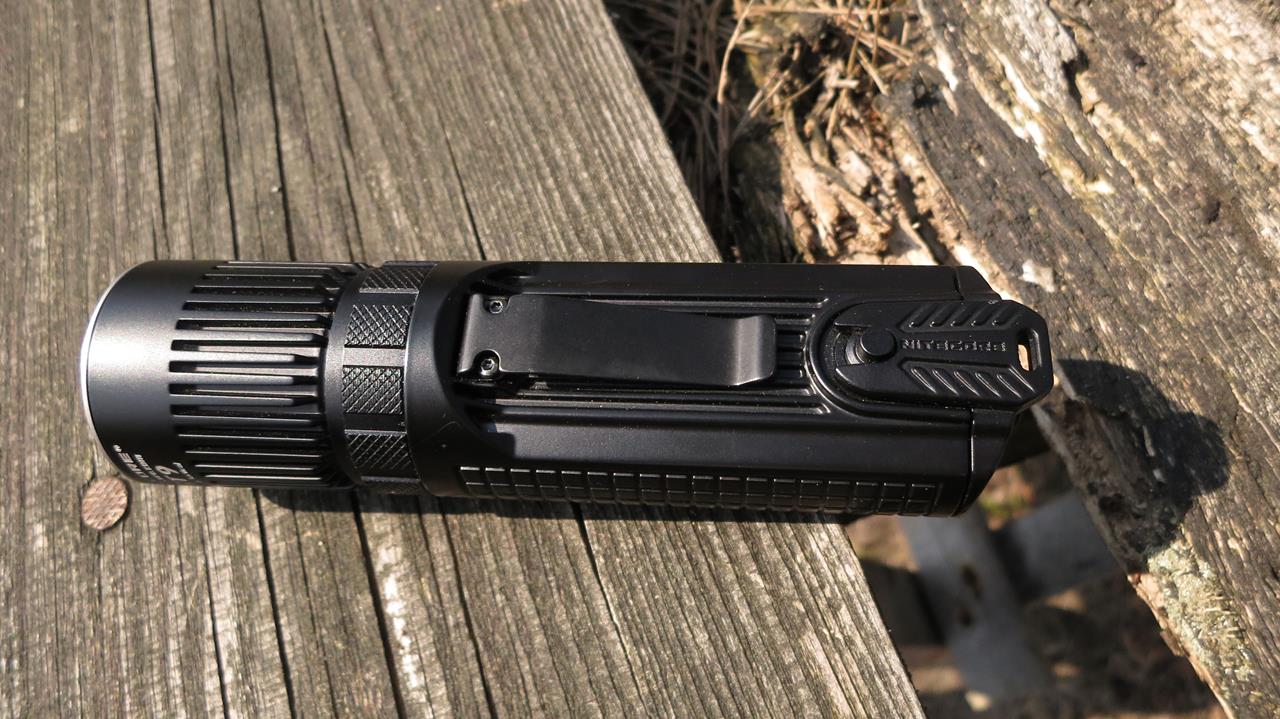
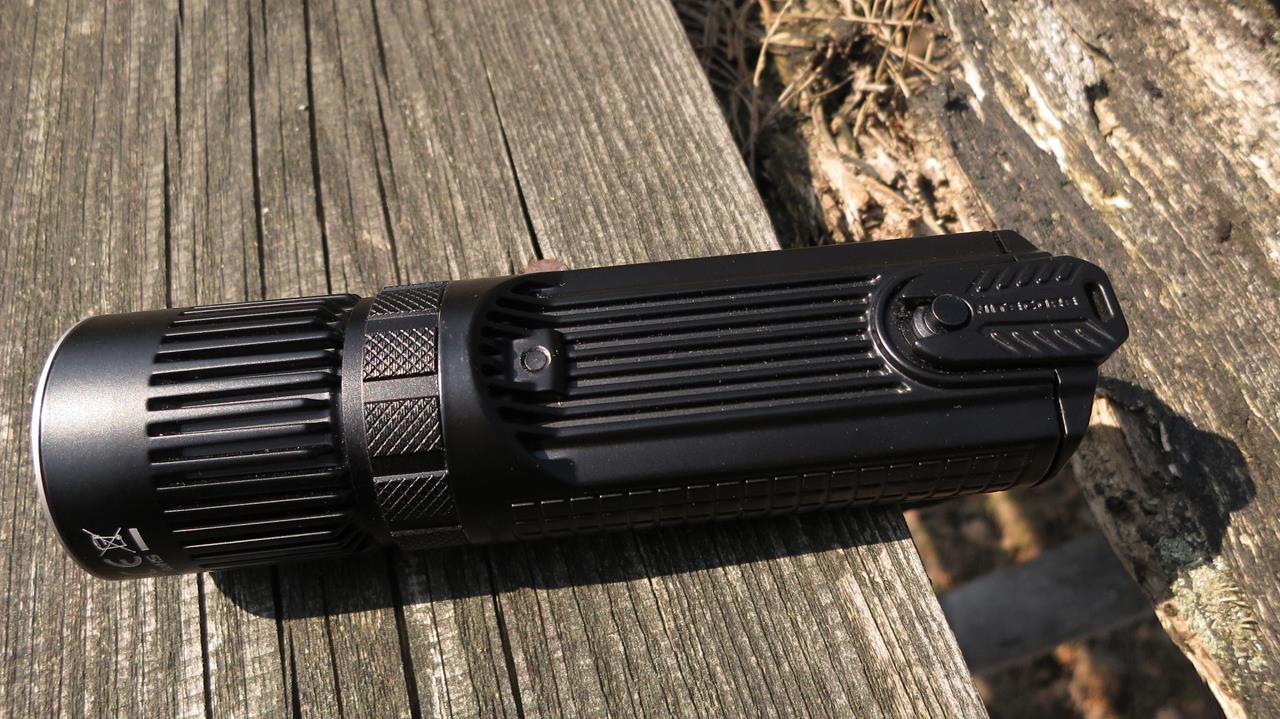
We do not have a classic cap here. The rear part of the housing is plugged. To do this, press the two protruding buttons to get to the links. To re-close the housing, press it again and push the back of the housing. I tested, a few hours spent in the water did not make a big impression on the torch.
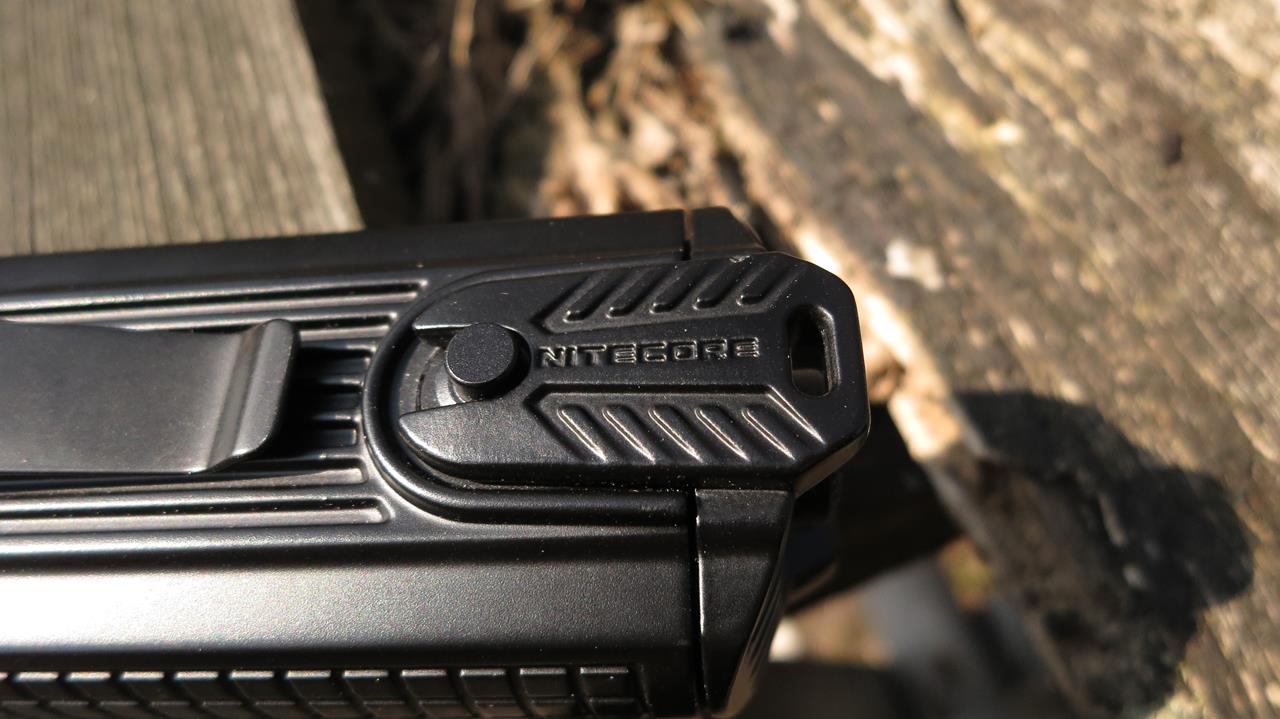
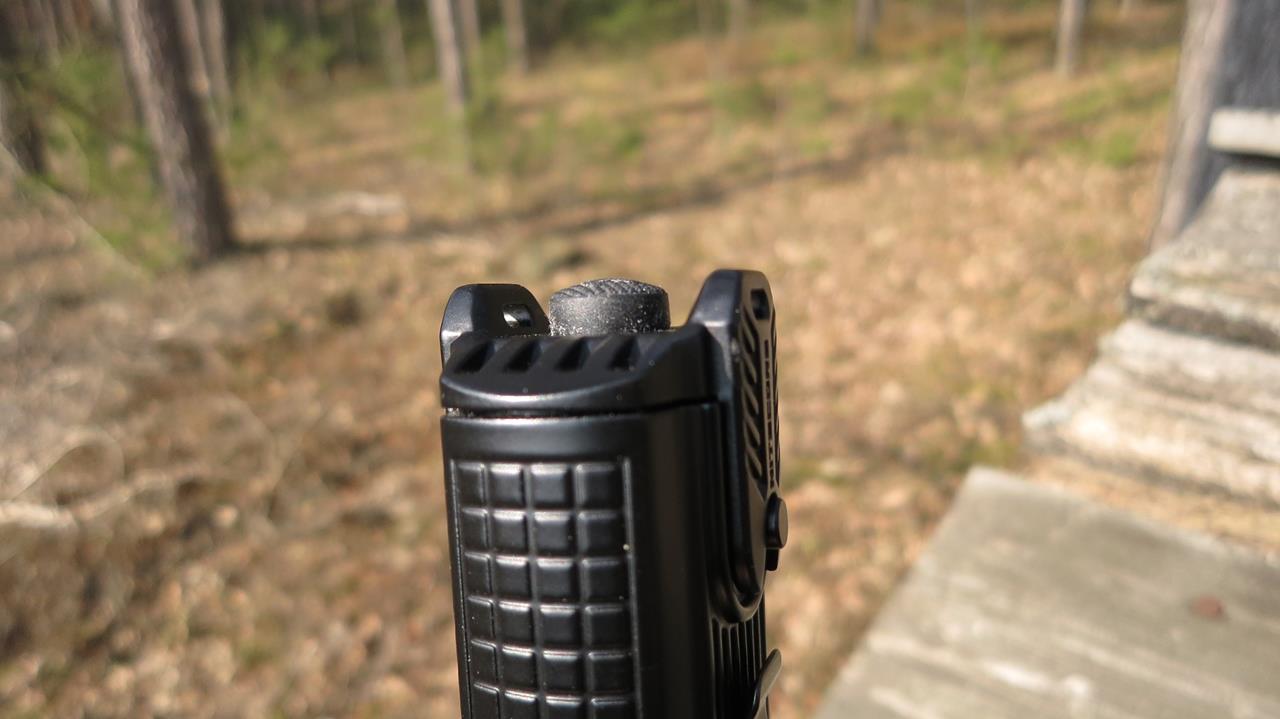
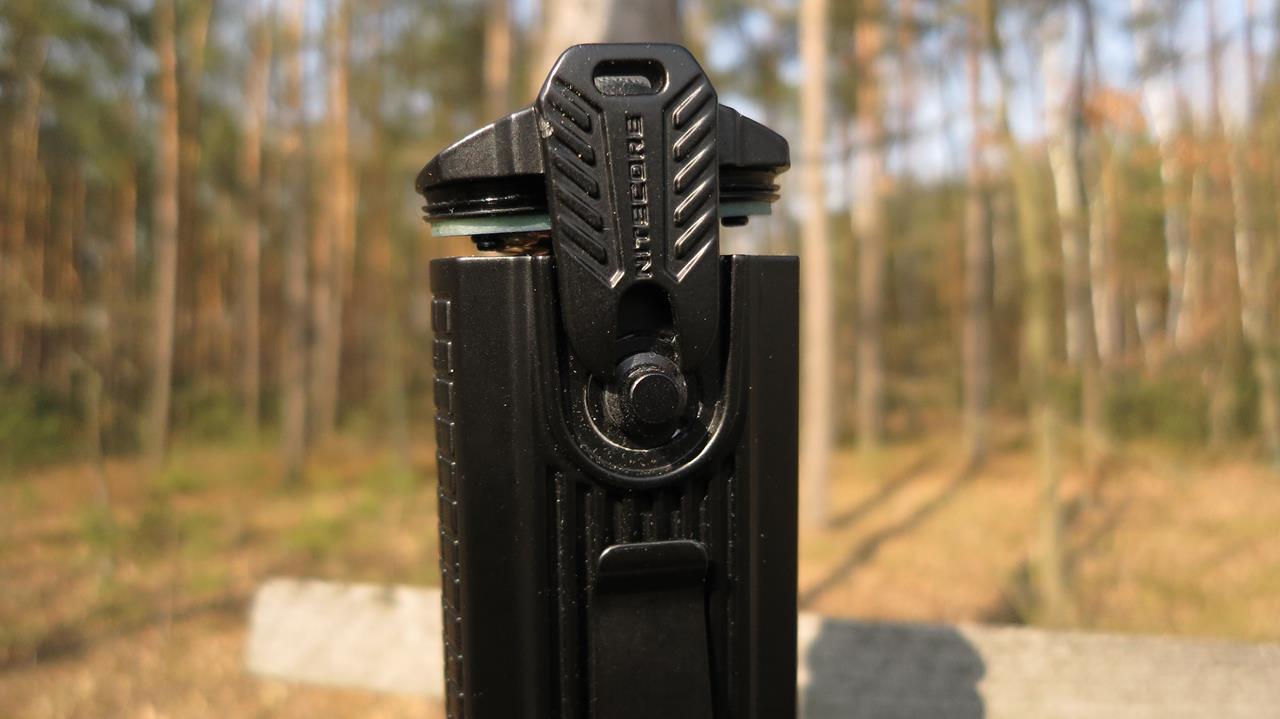
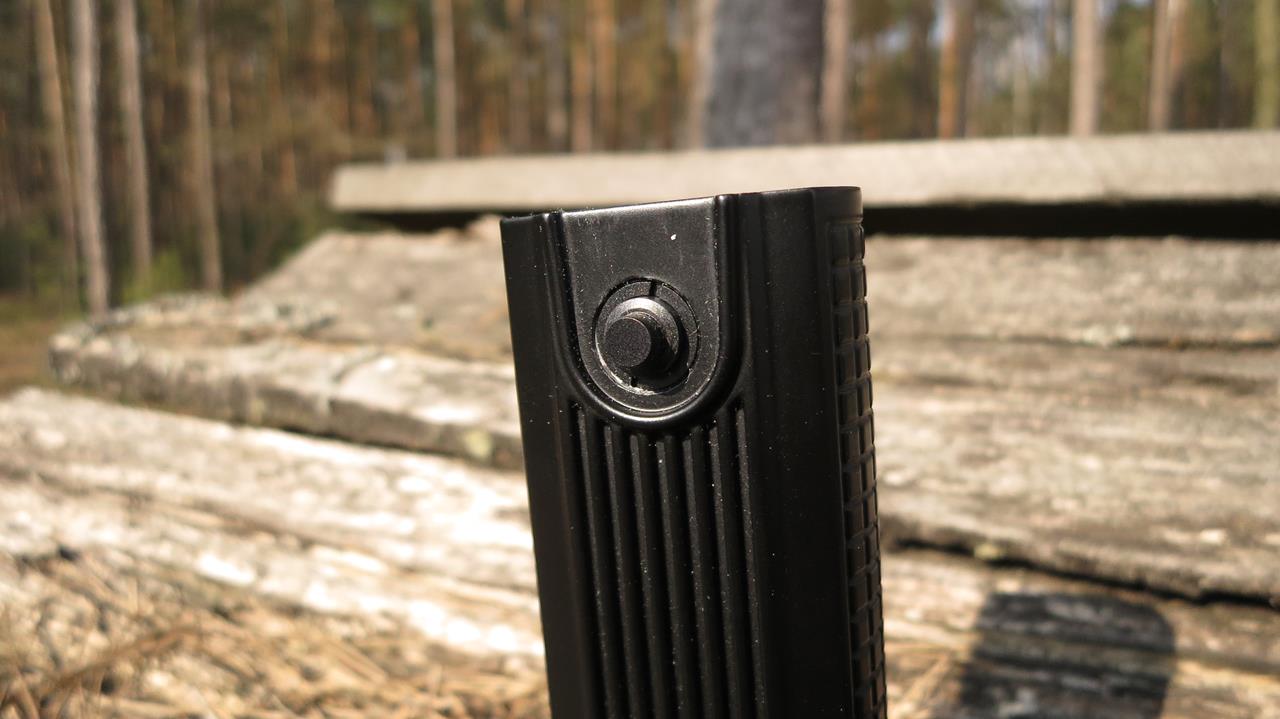
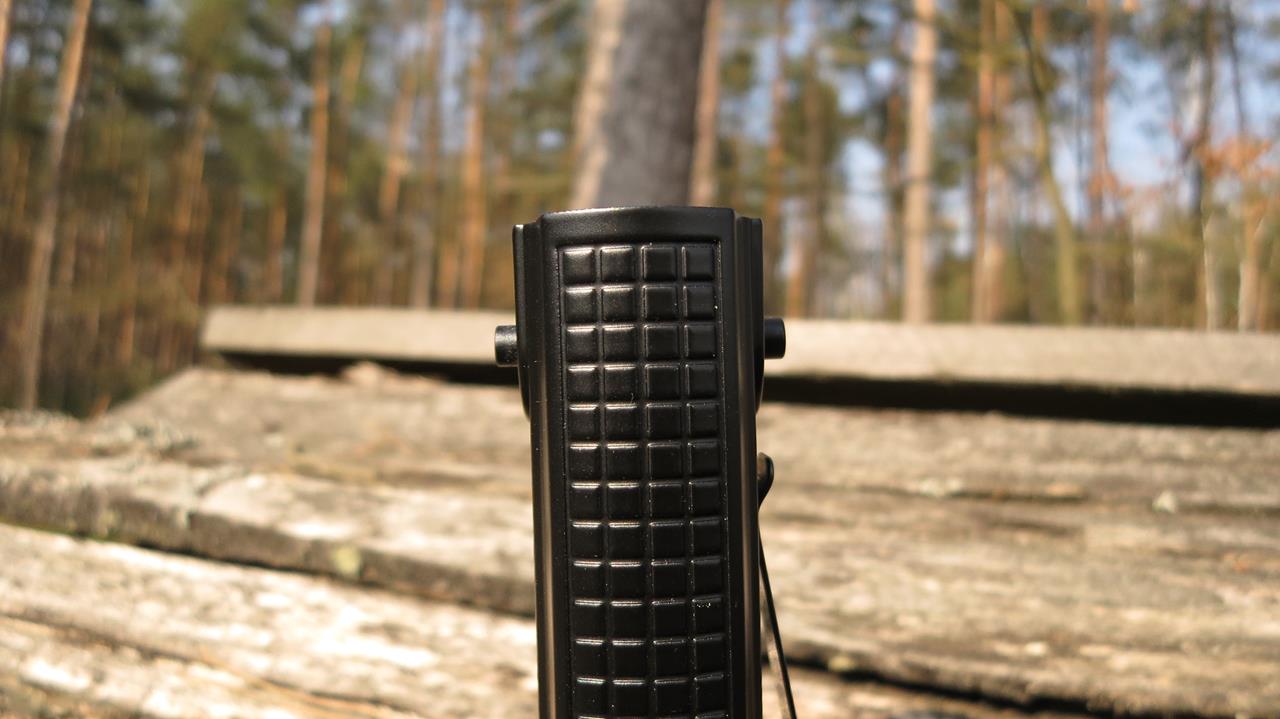
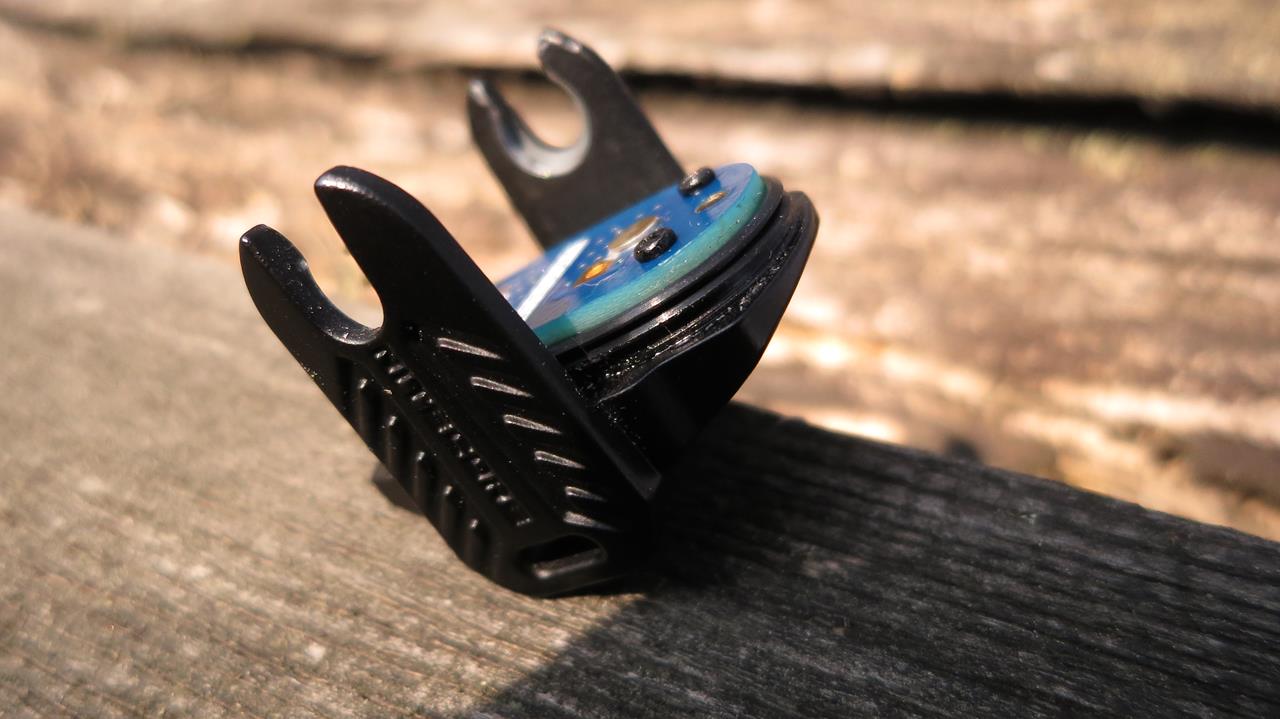
As always with Nitecore, a double spraycar
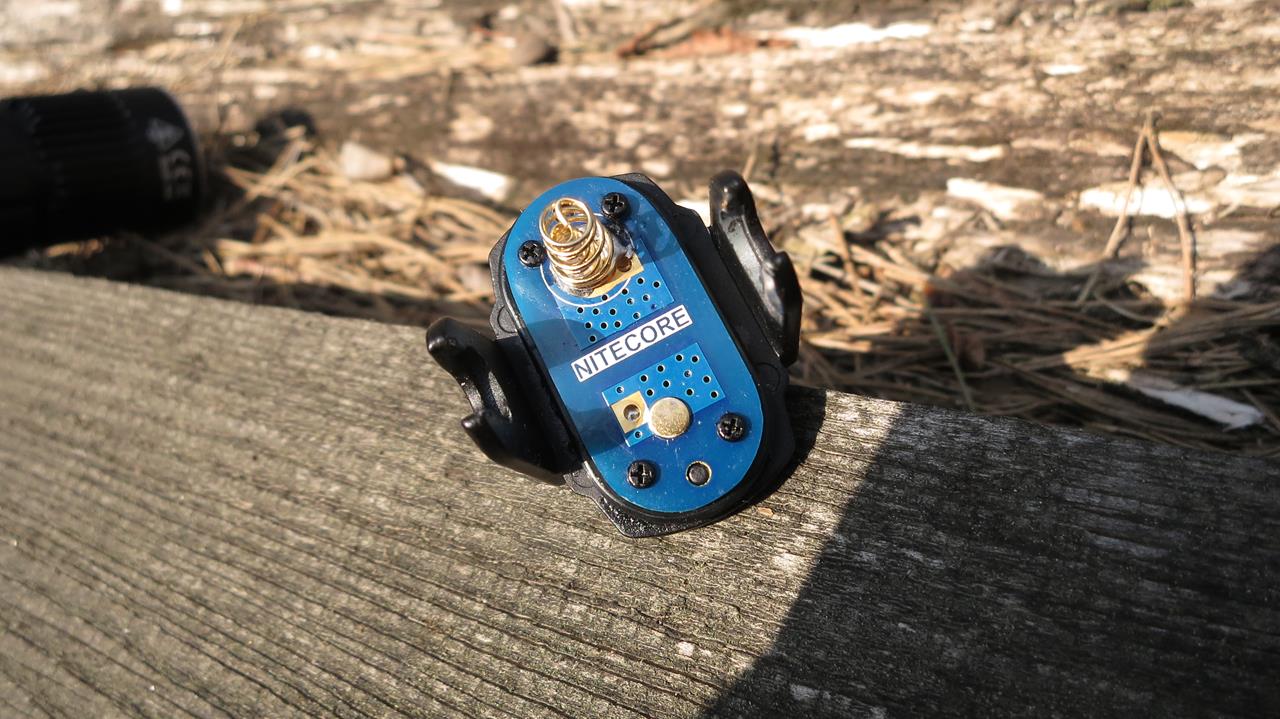
On the back of the housing, a button to turn on the flashlight
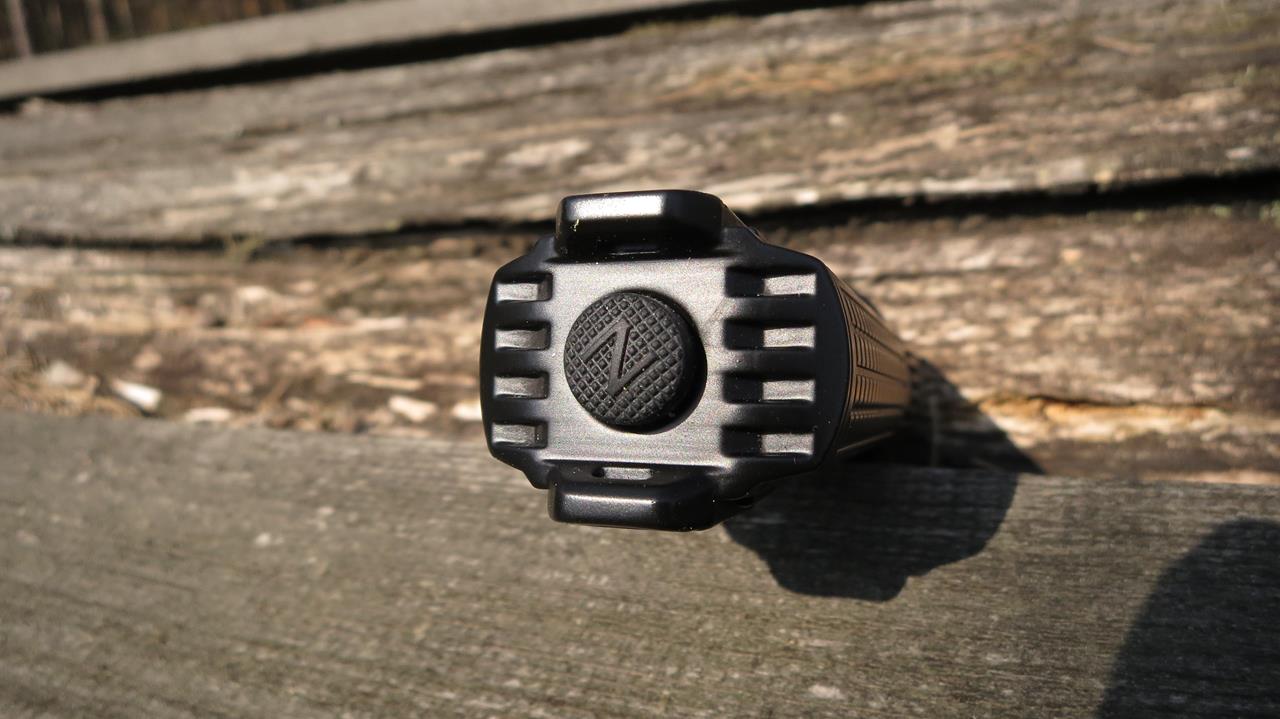
The middle tube has a sticker, suggesting the direction of inserting the links,
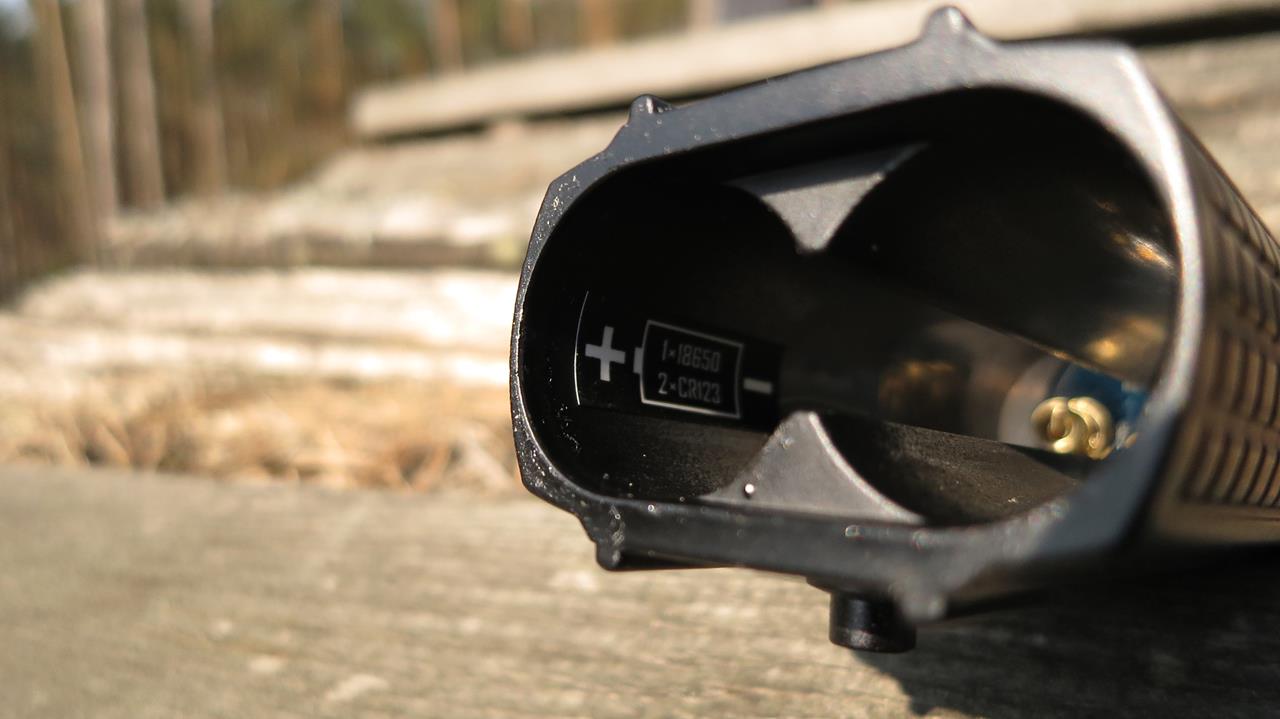
The control is identical to the SRT7GT tested in the past
And the most important part, or the controller,
To turn on the flashlight we need to use a tactical switch located in the back part of the flashlight, to operate the controller we will use the "intelligent ring".
The controller has a memory of the last mode, but here the memory of the last mode works on the principle if we do not change the position of the ring to change modes until the next flashlight, protect against reverse polarity, too high temperature (the flashlight can really get solid), no it picks up modes even at high temperatures - my favorite, and has no protection against too low voltage, i.e. it does not cut off power, it only signals (description in advance).
controlling
We have no mark on the rotating ring, it's a pity, because without turning the ring we can not determine in which mode the flashlight will be turned on (assuming that we do not have to remember in which setting we left the flashlight).
The ring makes a characteristic, pleasant to the ear, quite quiet "click" at each change of the mode, so that it can be felt not only for the hand, but also signaled a change in sound.
Let's assume that the flashlight is set in "locator" mode, which means more or less in the middle (I mean setting the mode ring), so:
- locator, works on the principle that the diode placed in the head of the flashlight makes one flash every two seconds
- we turn the ring (top to the right) and we have a white light mode at the beginning, it works in the range of 0.1-2150
- move further to the right and we have the Strobe TURBO mode
We return to the position of the locator and shoot from top to left
- the first click is the UV mode
- the next mode is red (13lm)
- then green (19lm)
- blue (3lm)
- signaling of police lights (ie several times red, blue etc ...)
- at the end the lighthouse mode or "BEACON"
The simple driver and arrivals for the user. The most important element here will be control. Each mode change is signaled by a characteristic "click", if we want to set the torch to work in medium mode, the rotating ring works with appropriate resistance and this should not pose any problem.
From my point of view, if the control with a knob is quite pleasant, and you can get used to it, I prefer the traditional solution, or click-control.
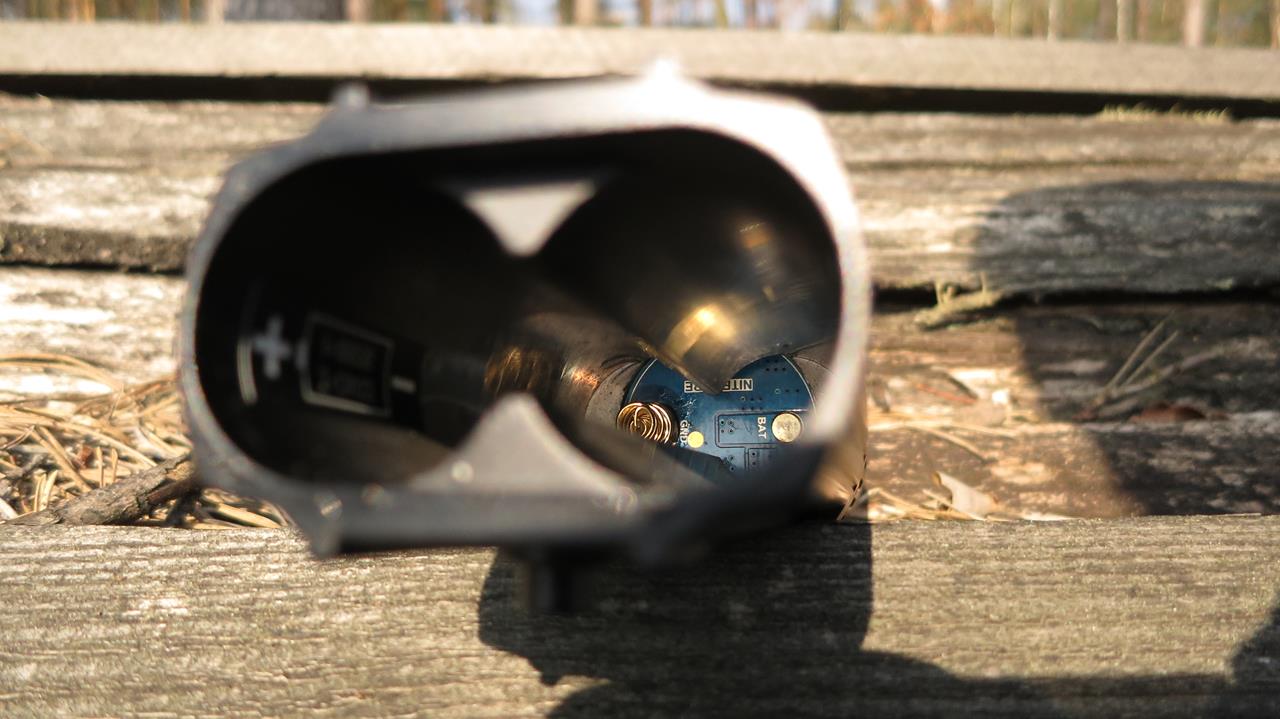
Elder Nitecore or P36 is a larger size OP reflector, MT-G2 diode with a beautiful neutral color, without any artifacts, color changes, etc ...
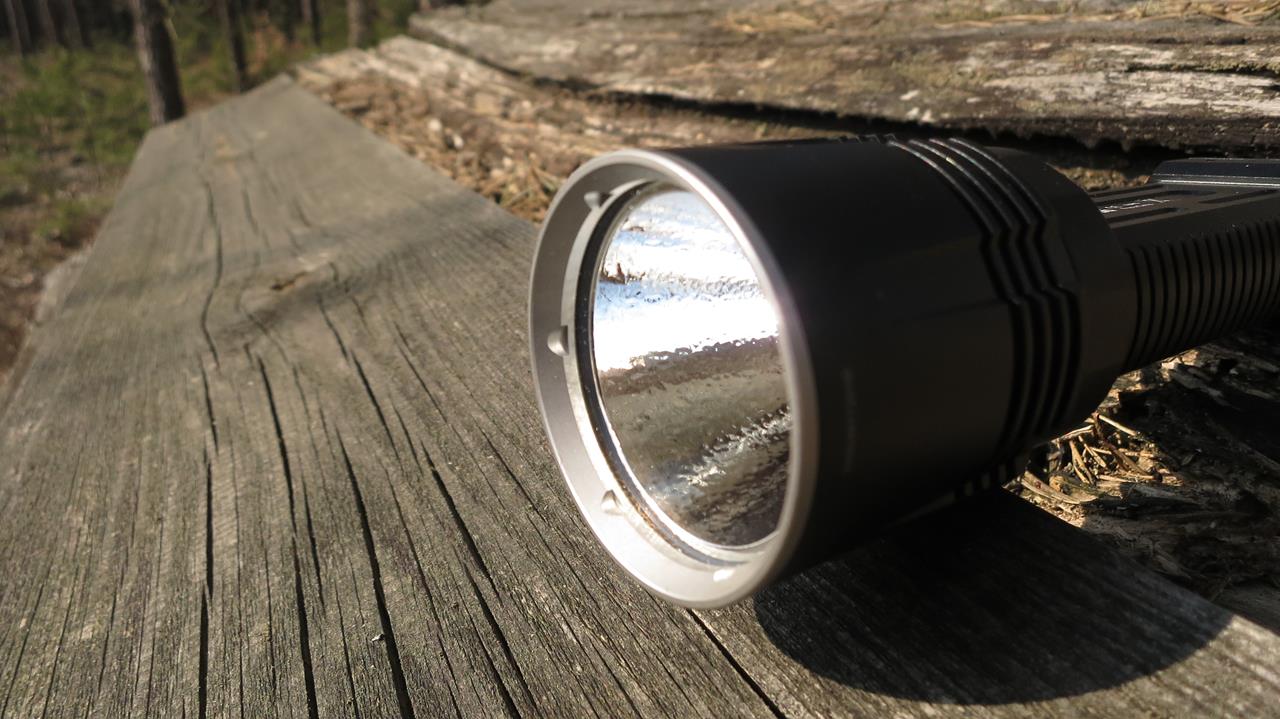
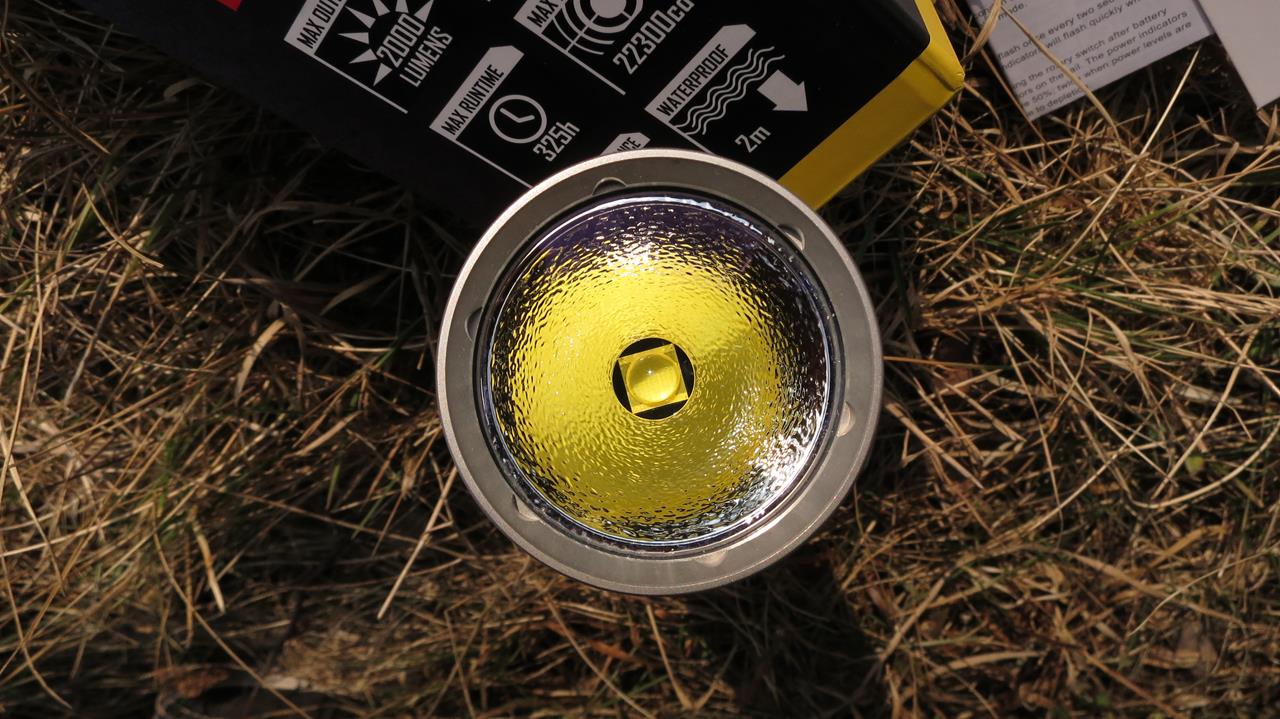
Massive head, clear notches and ribbing, all this is to allow faster transfer of heat to the environment
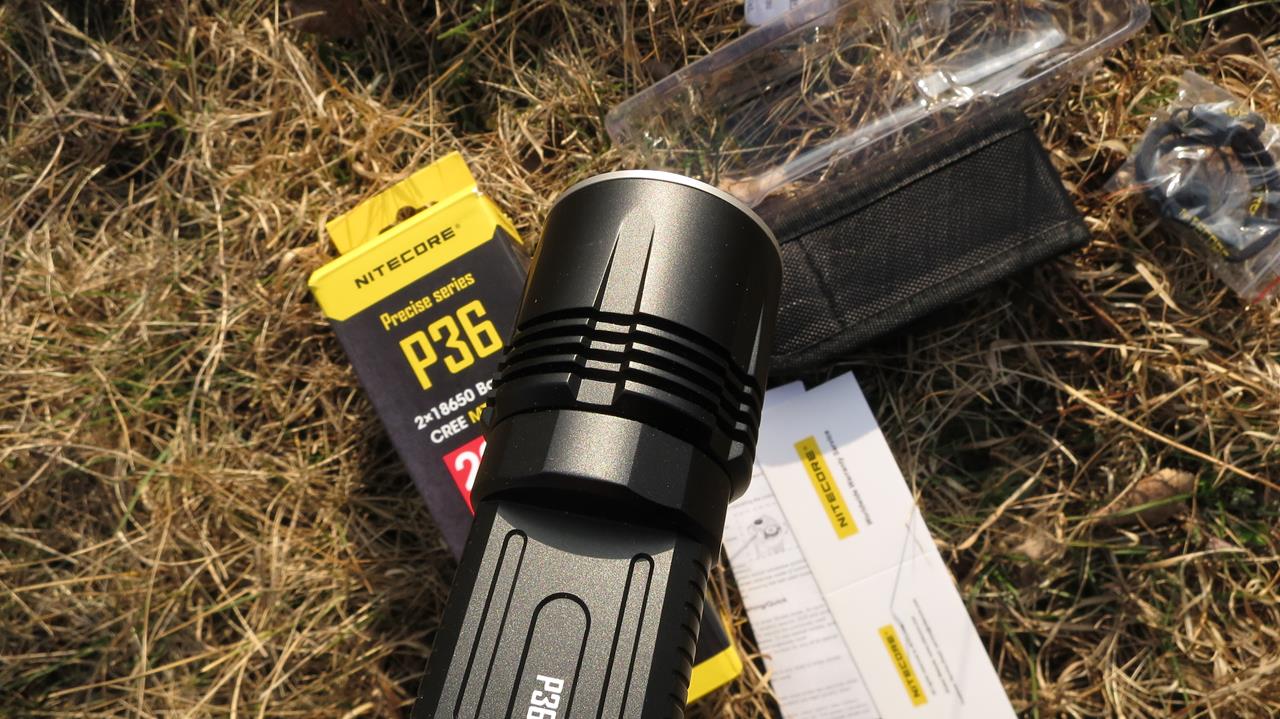
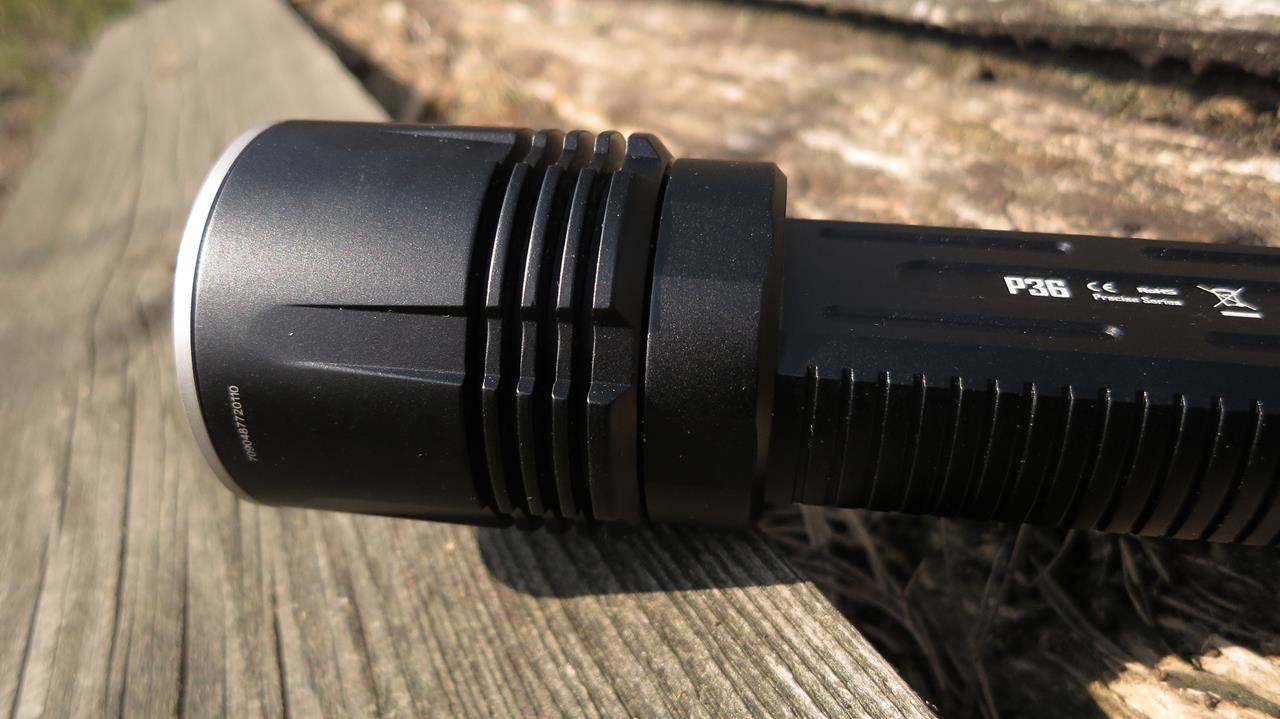
The middle part in the middle part is very simple, while on the "sides", without knurling with the characteristic stripes.
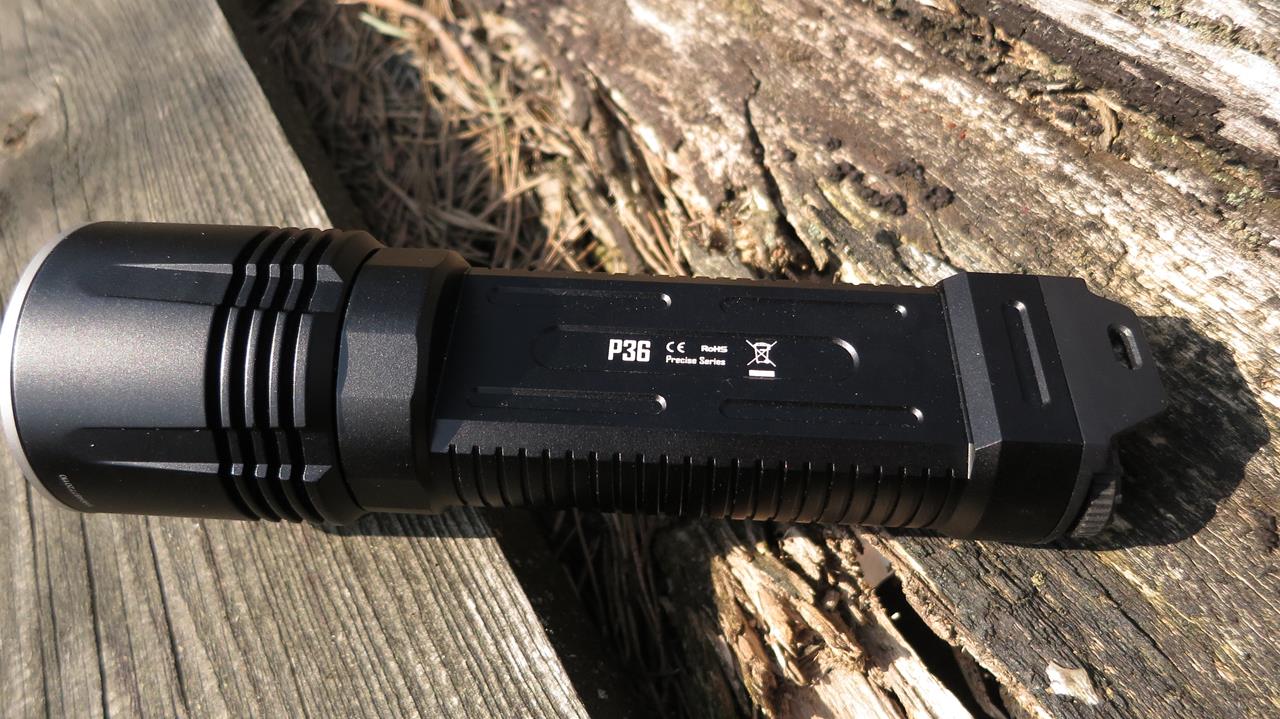
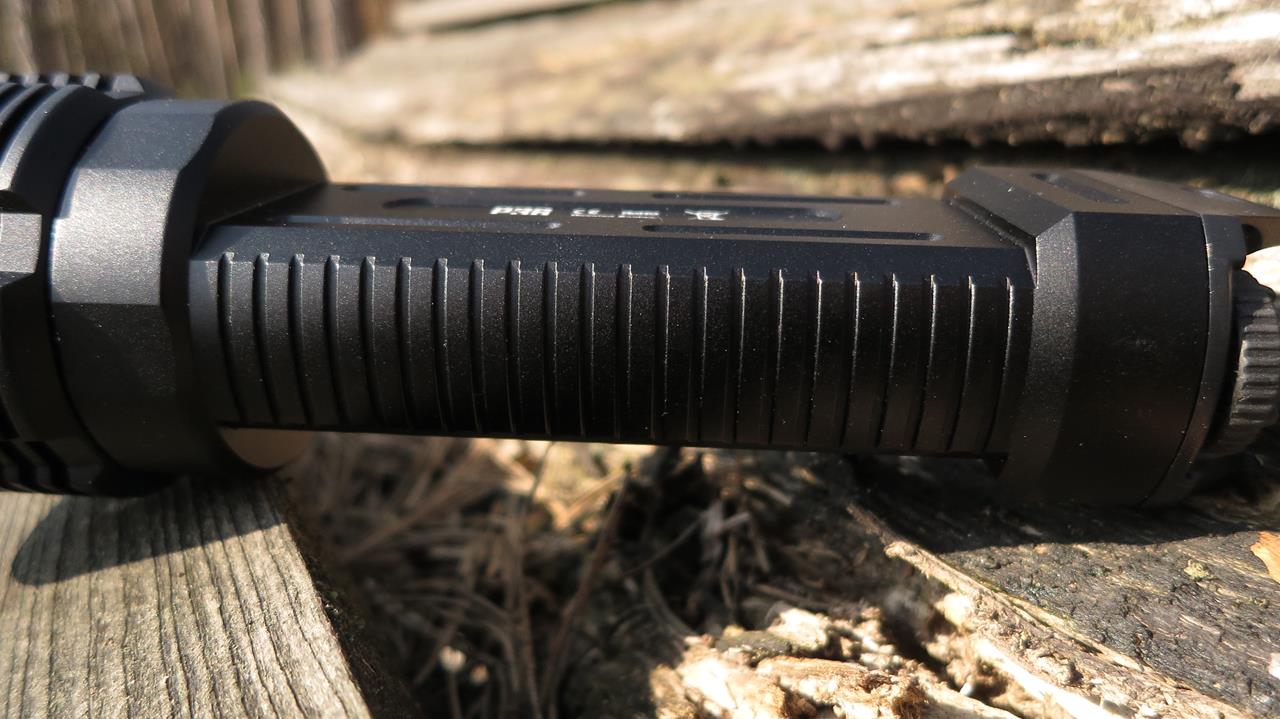
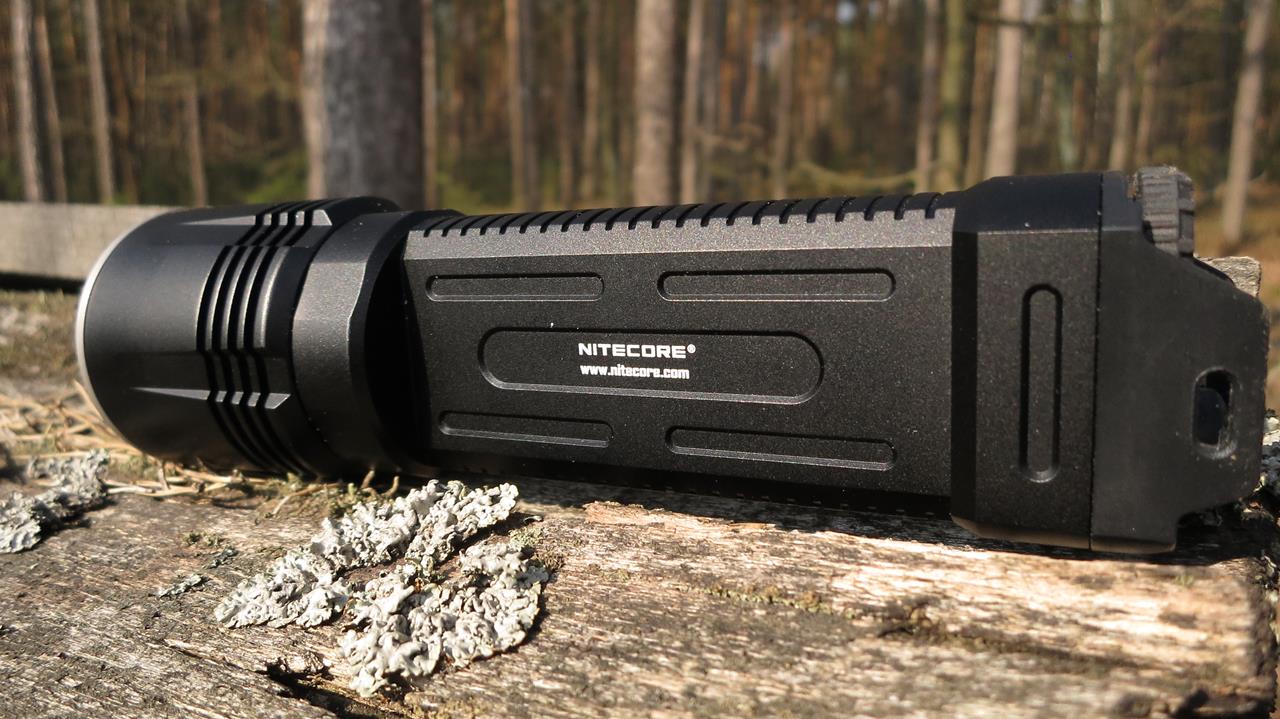
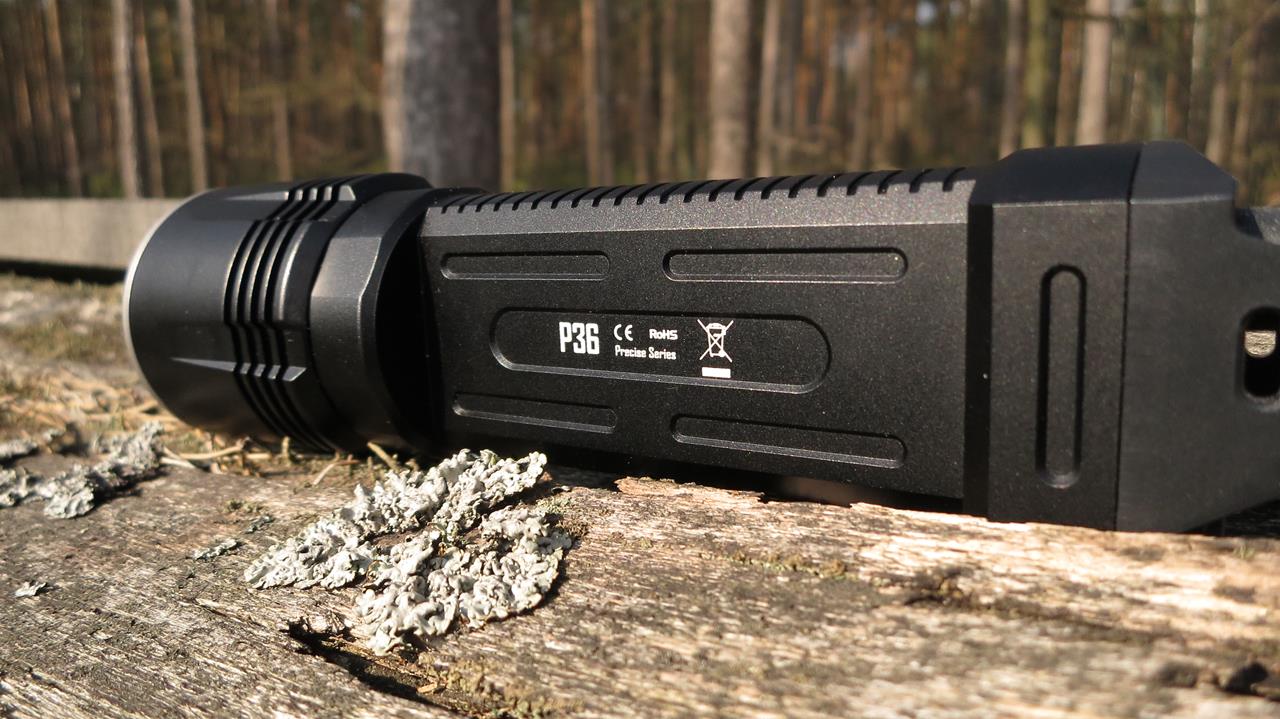
The back part has a button to turn on the flashlight, and a mode dial. The knob is made of rubber, and even with wet hands there is no problem with the change of modes, and two red LEDs that start flashing when the cell voltage is approaching the need to replace them with a charged one
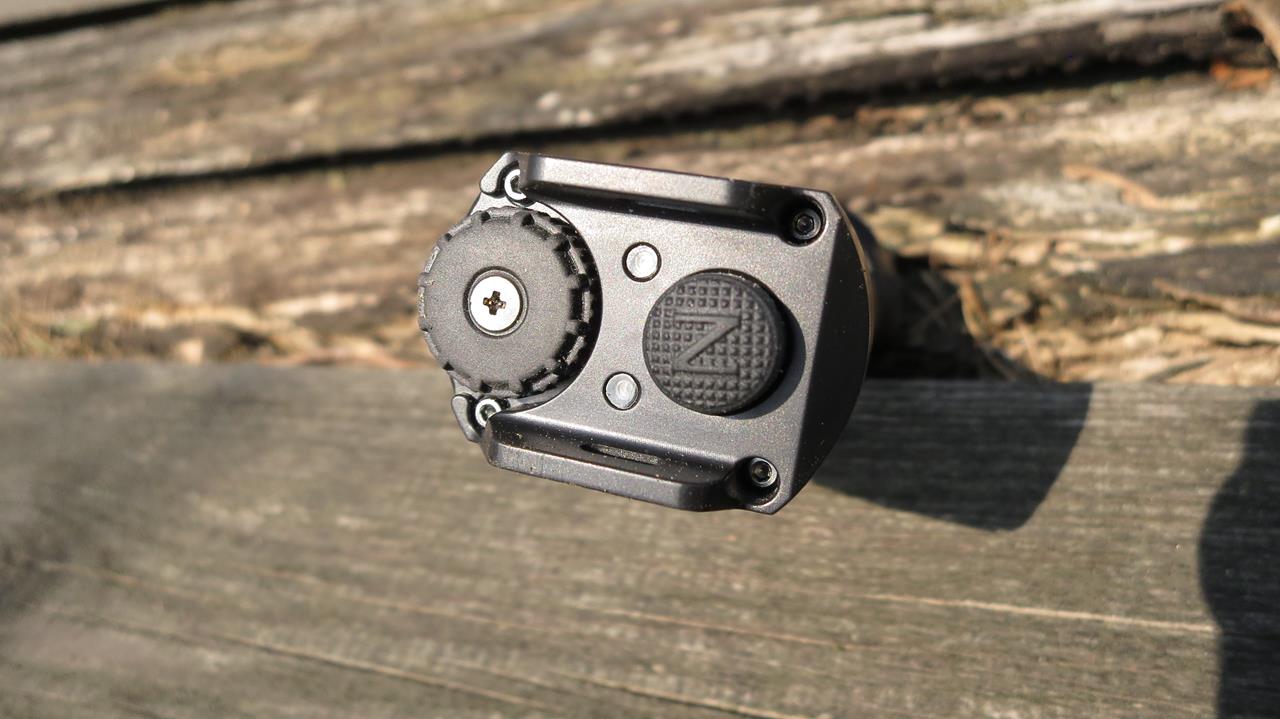
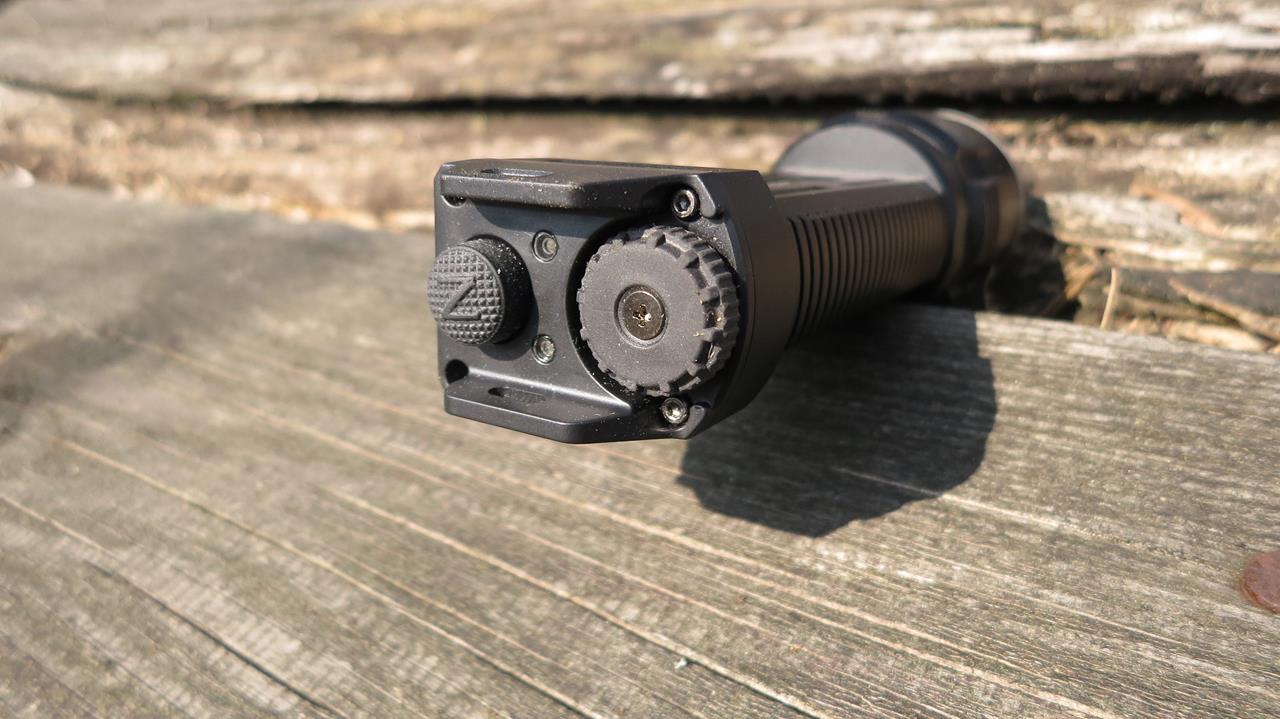
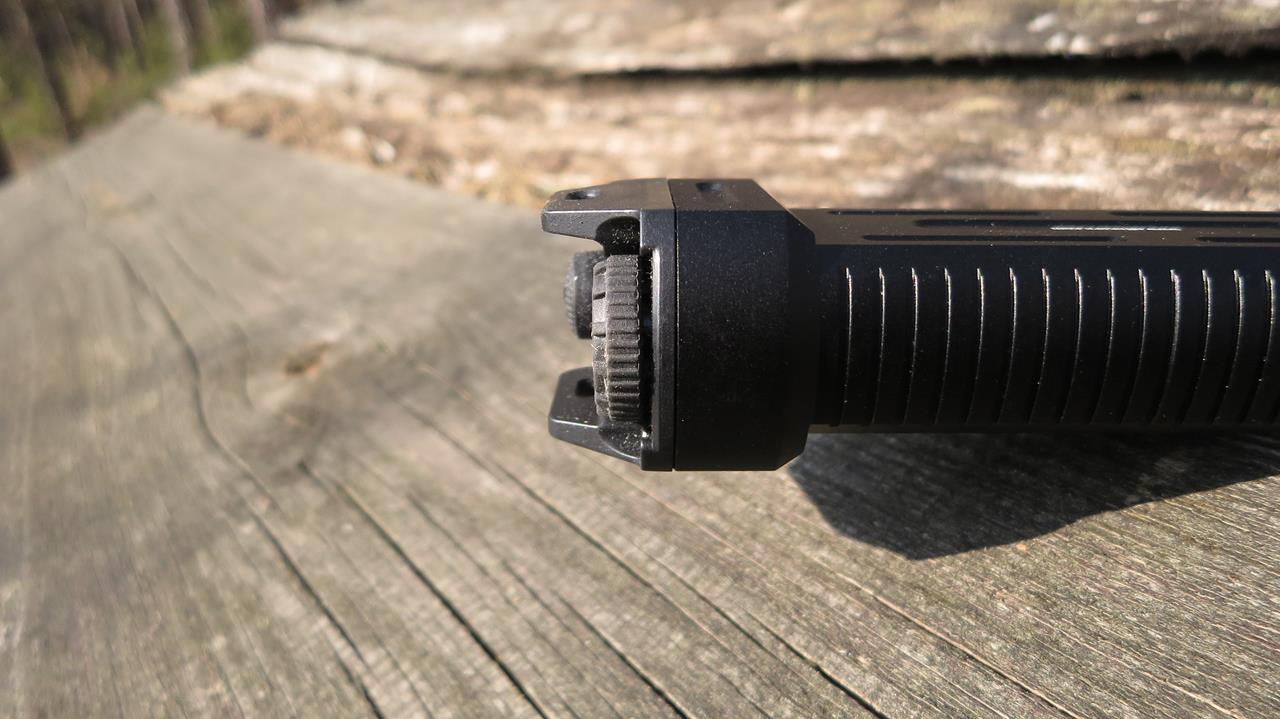
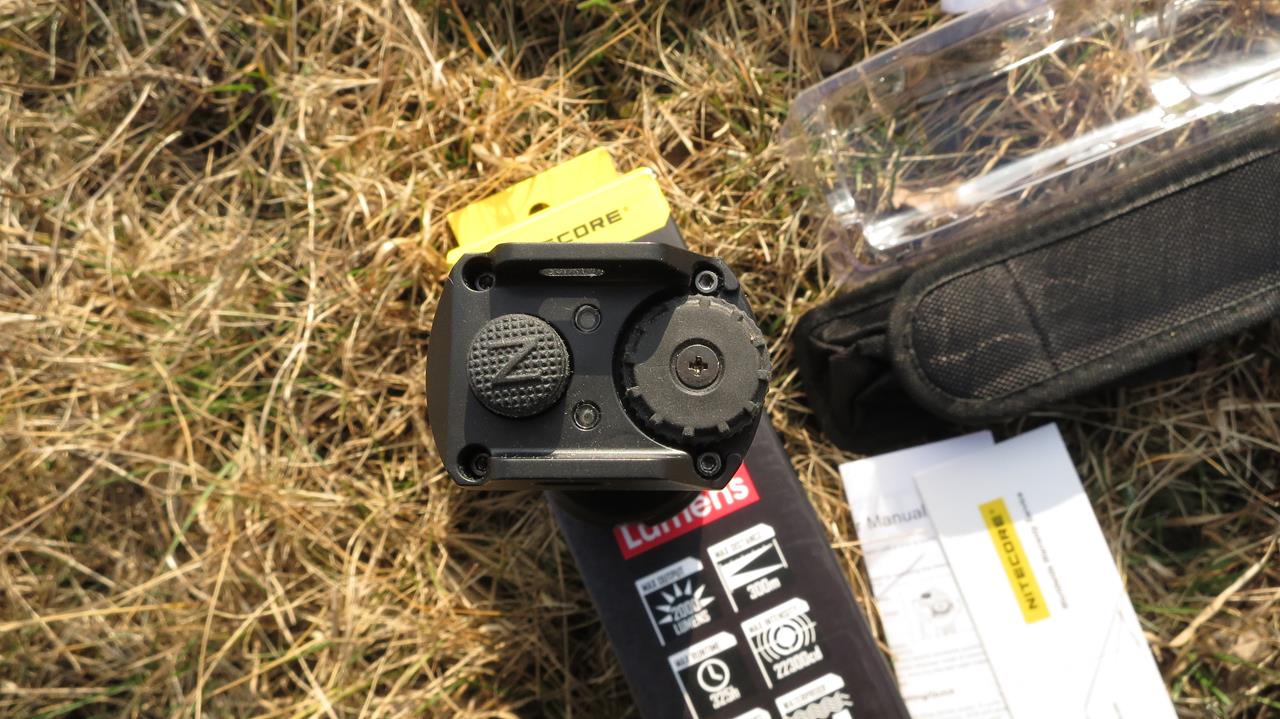
In P36, to get to the links we have to turn the head, and remove the cell basket from the inside. The threads are well made, and factory-well lubricated (standard nitecore). Unfortunately, the links fit only those with protruding plusik and preferably with security.
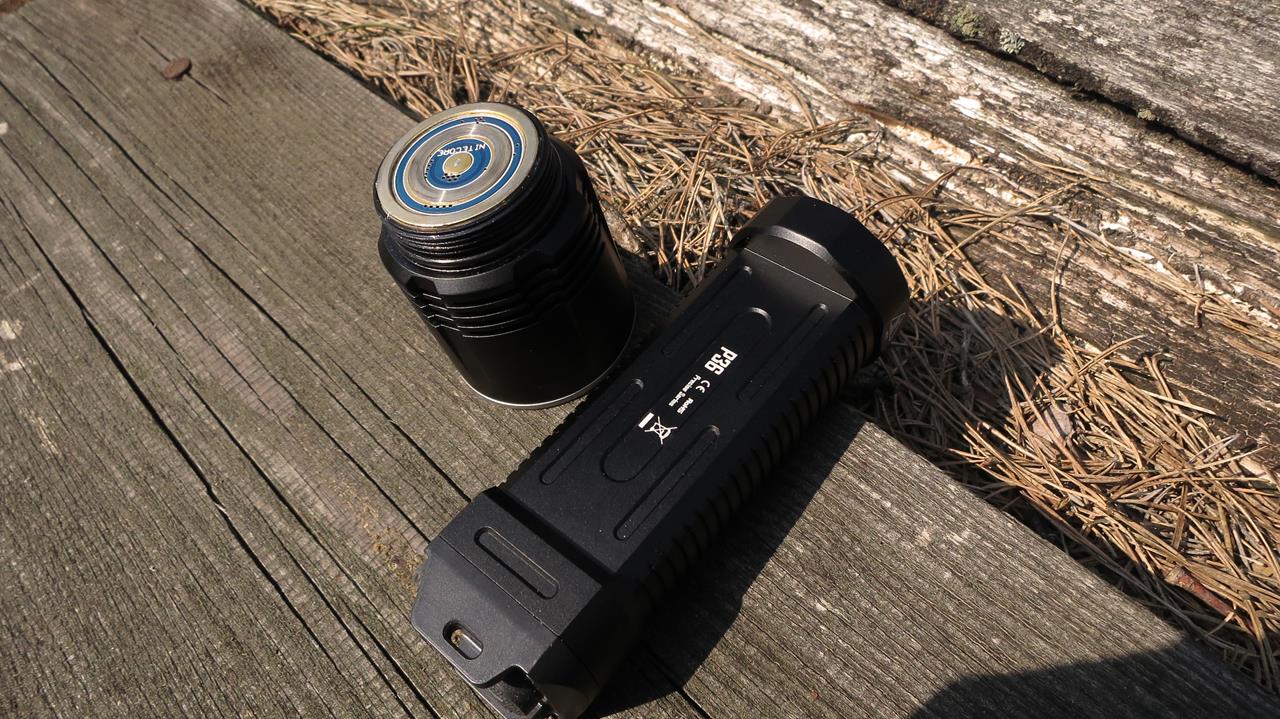
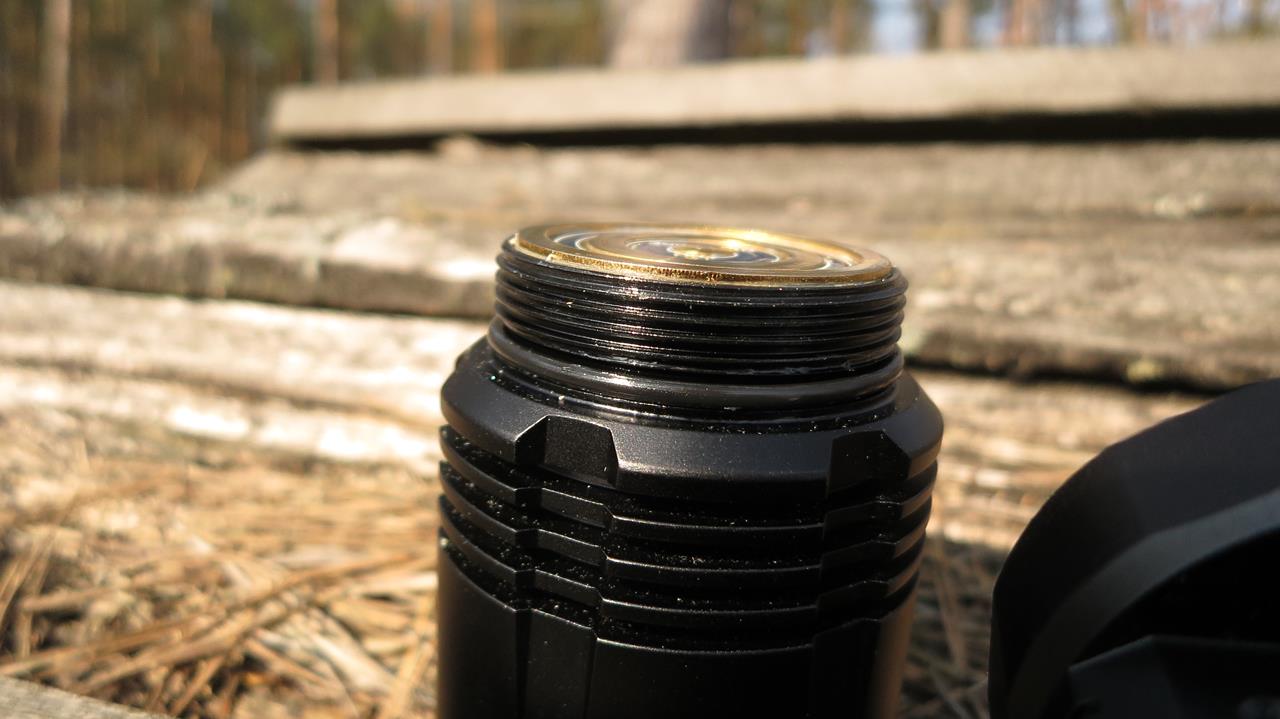
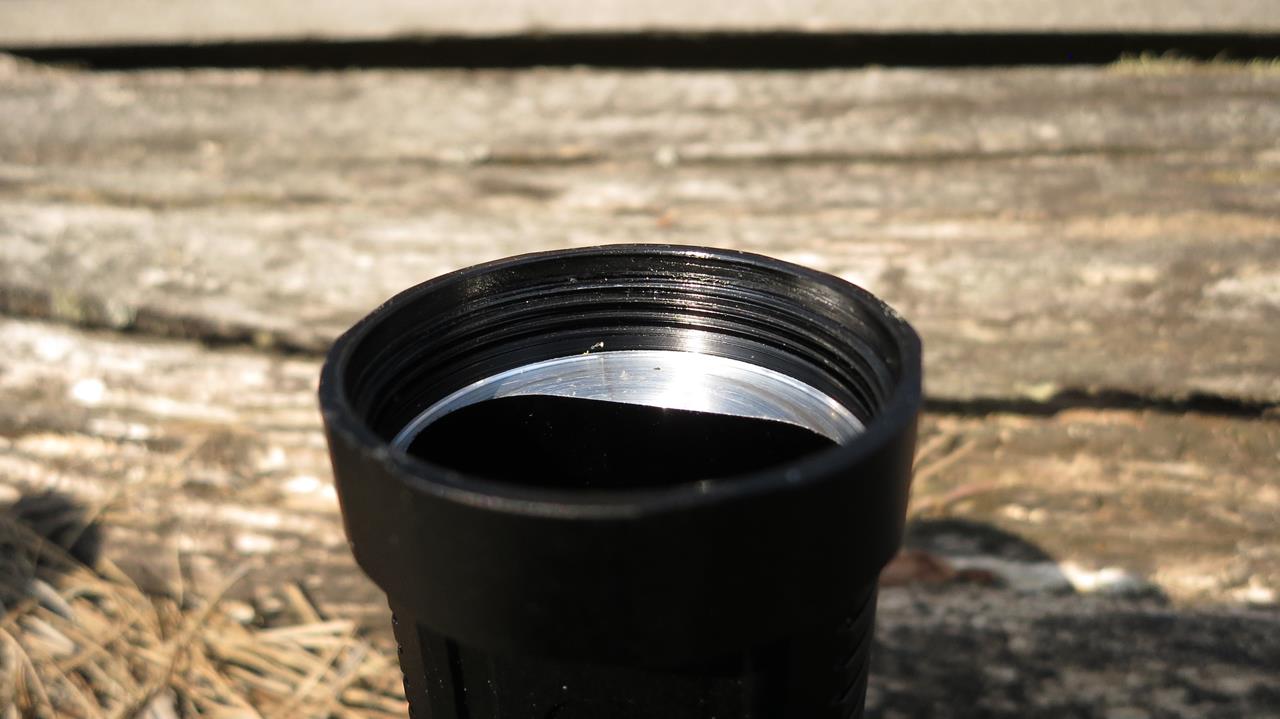
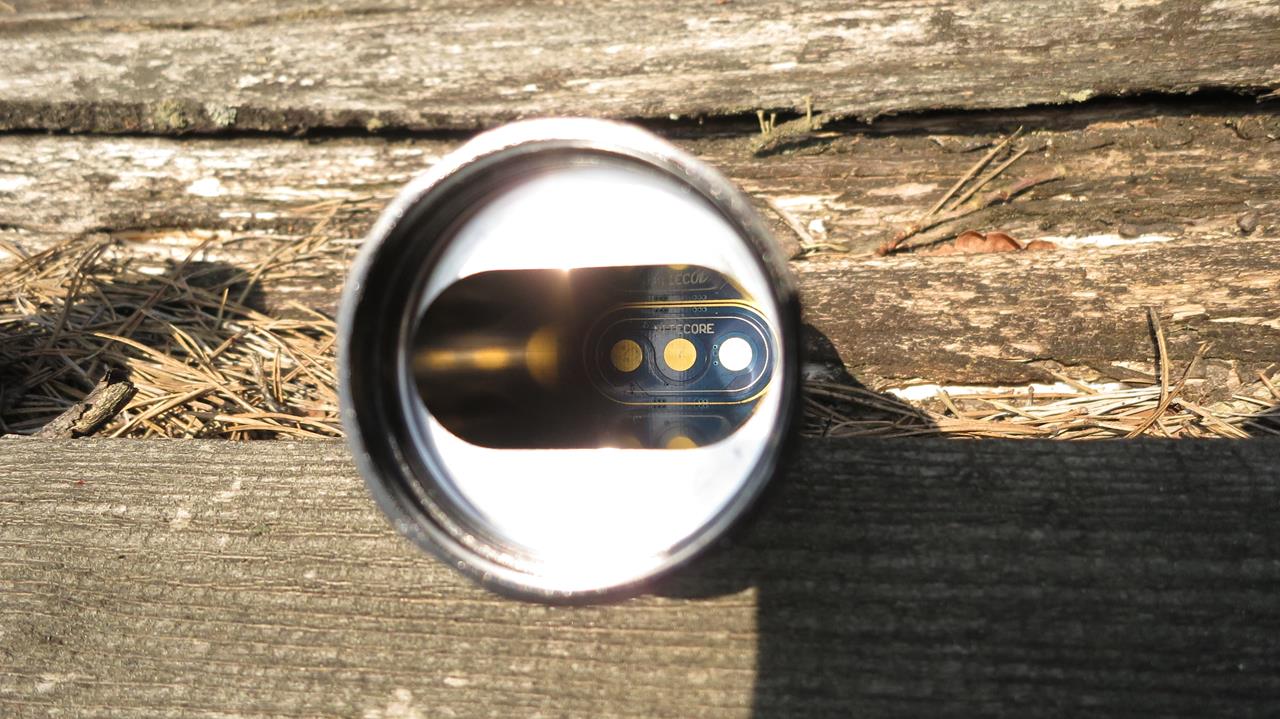
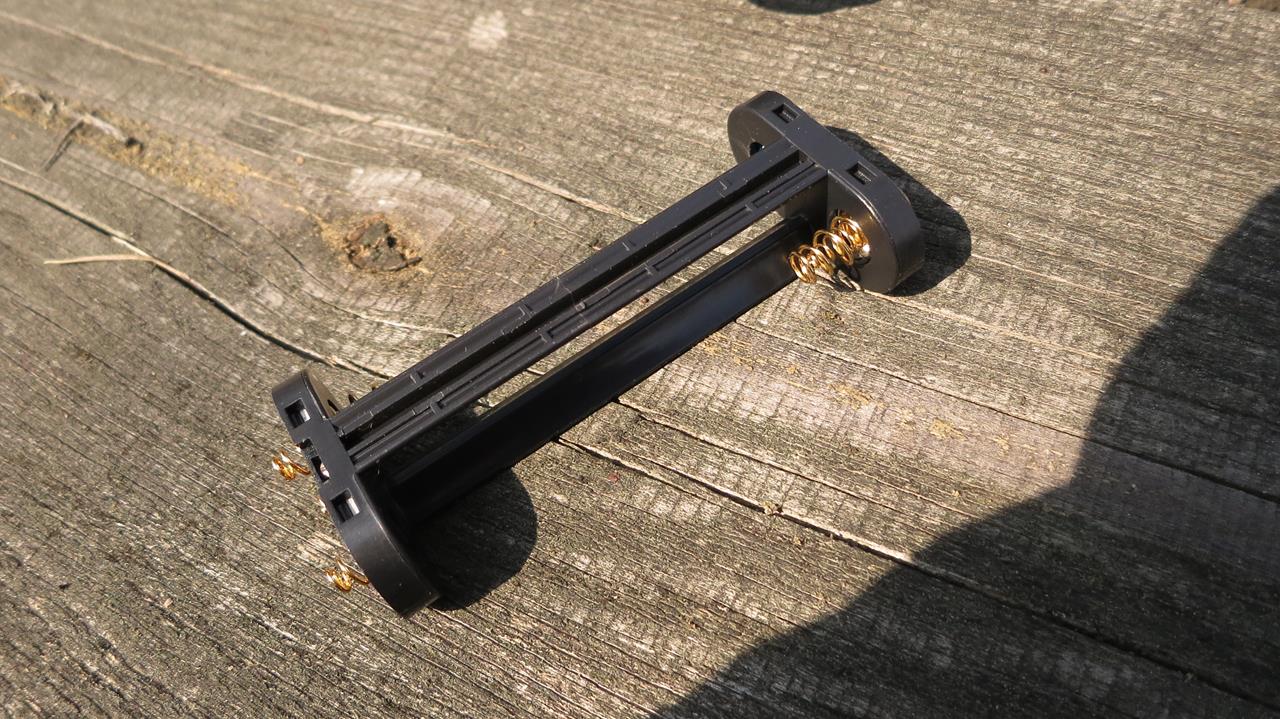
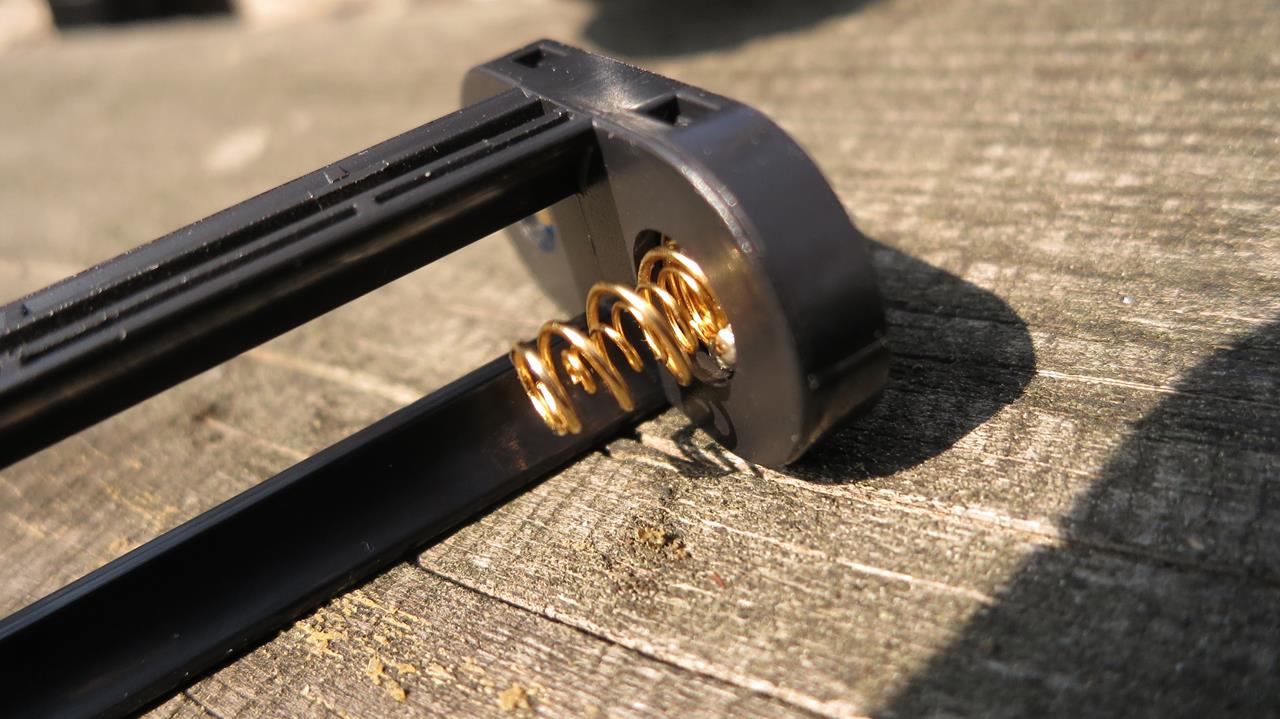
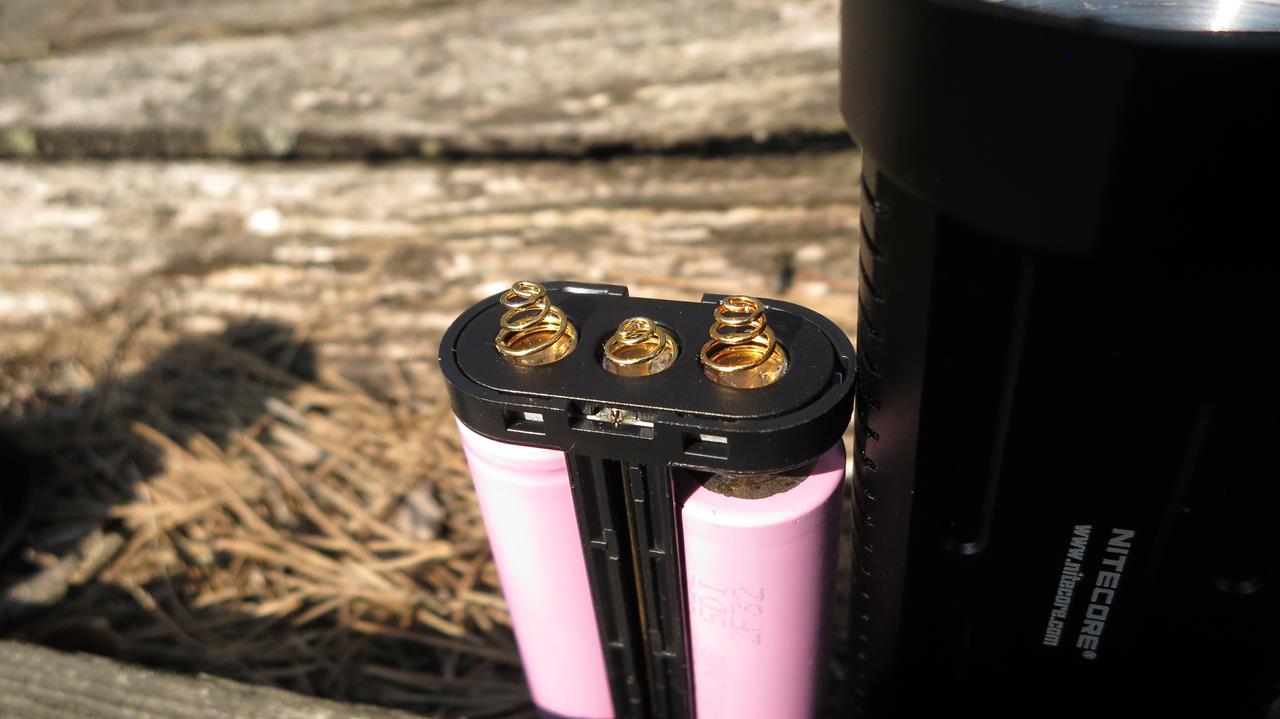
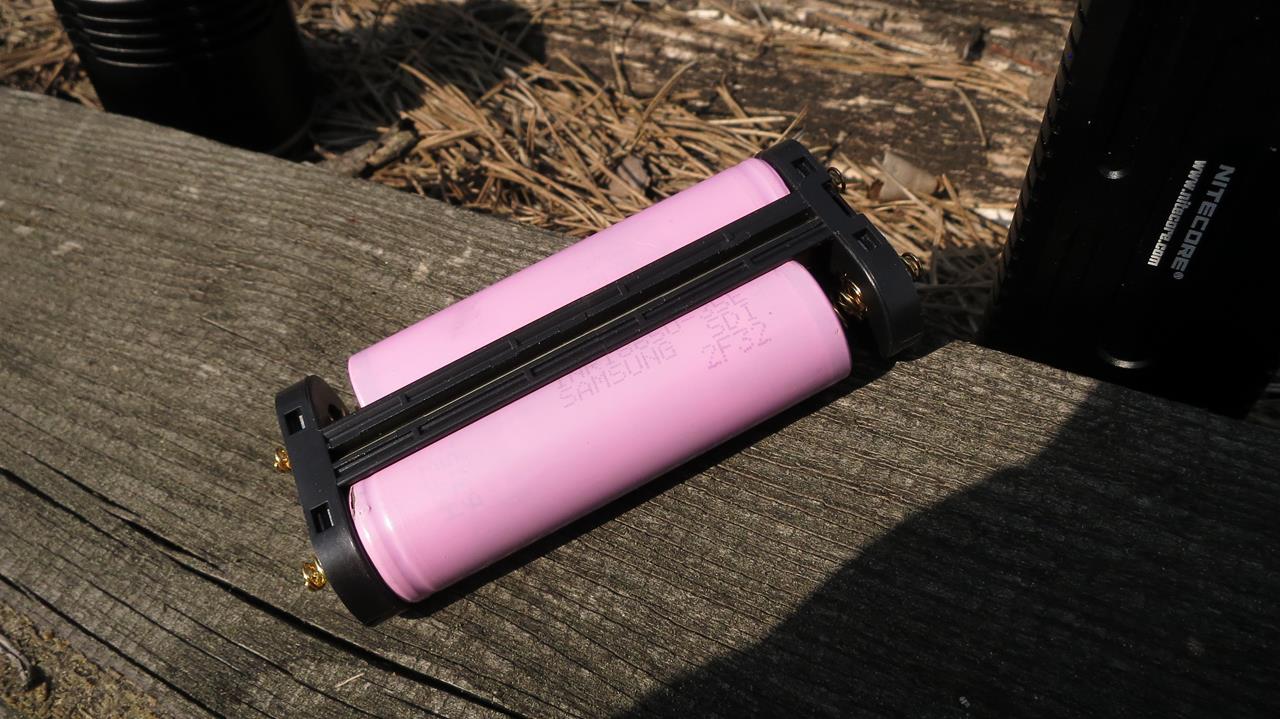
control:
After switching on the flashlight, turn the knob to change the modes. Fixed modes are up to 10, in succession:
2 Im; 20lm; 80lm; 210lm; 380lm; 600lm; 850lm; 1100lm; 1500lm; 2000lm. In the case of P36 it is difficult to say "too few modes", there will probably be those for which the lack of the 0.1lm mode crosses the entire flashlight ...
We have the hidden possibility of turning on the instant moon or TURBO from the position of the switched off flashlight.
We set the flashlight with the reflector away from us, and the back part to us, and the knob is at the top,
- one click to the left and quickly turning on the flashlight, it will start in TURBO
- one click to the right and quick switching on the flashlight - will start in the moon.
Strobo is still hidden. Clicking quickly when the flashlight is on we turn on Strobo fixed.
If the flashlight is off or on and hold the button, Strobo will flash as long as we keep the button. Simple and good solution.
There is also protection against too low voltage cells. The flashlight takes over the modes and informs us about the low charge status of the cells with red LEDs located in the back of the housing.
I also did brightness level tests in time using the "Lux Meter" application on android.
Nitecore SRT9 with Thrunite 3400mAh protected and Samsung INR18650-35E
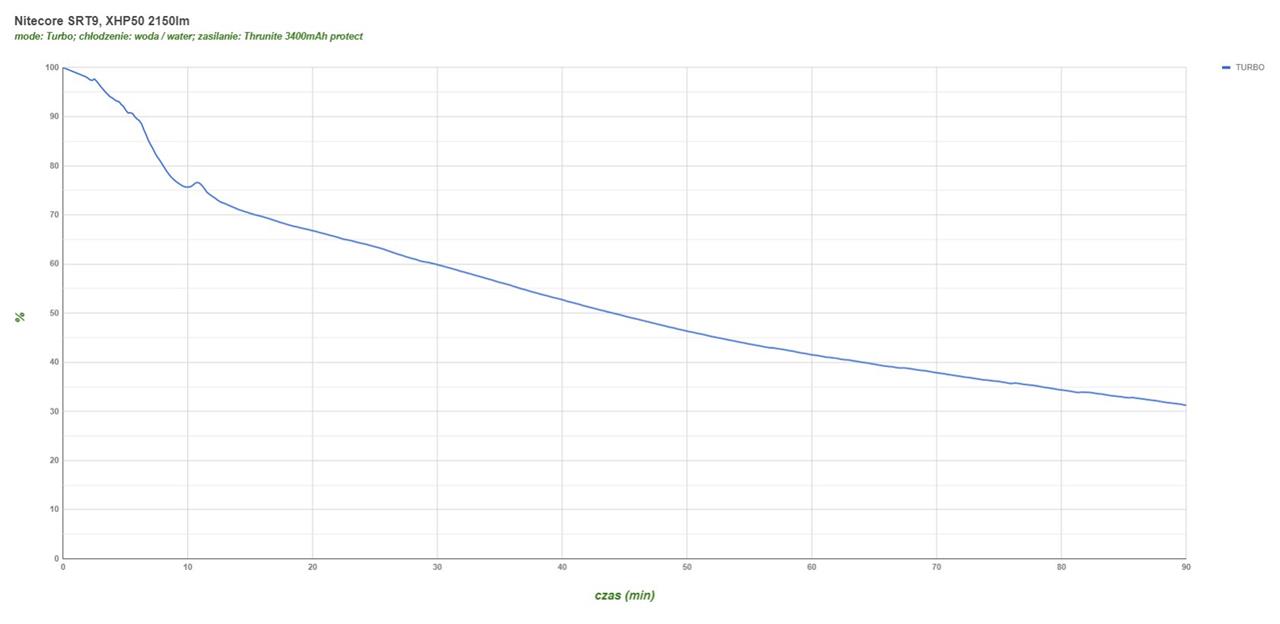
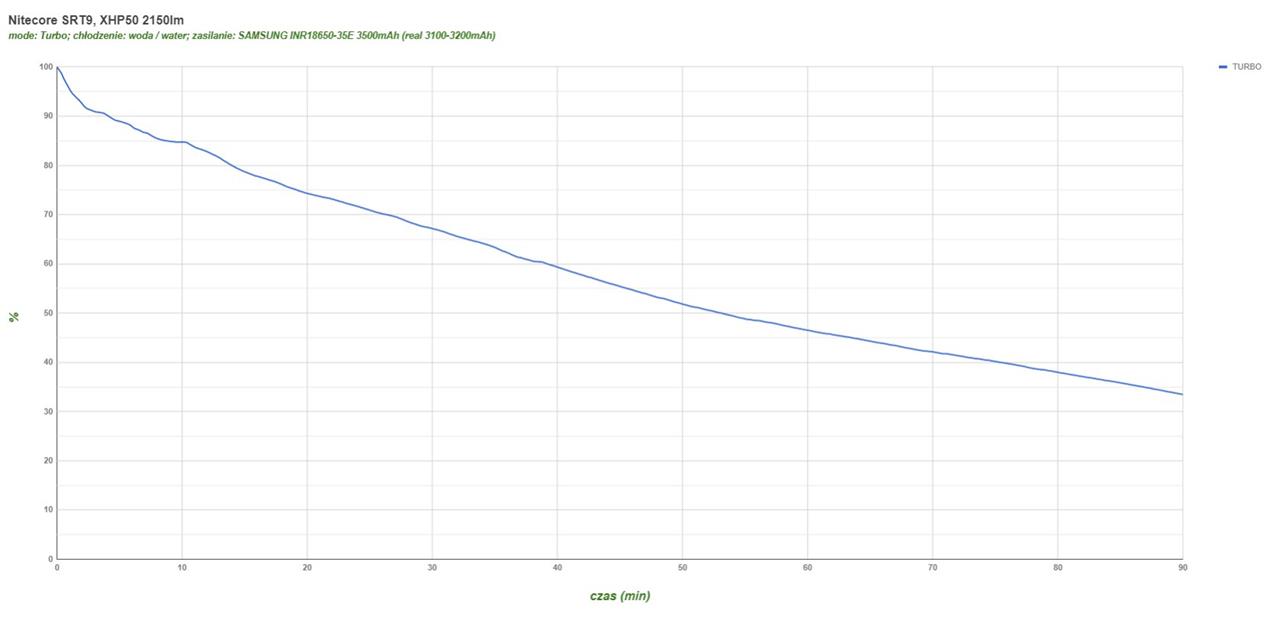
And P36, also with the same links
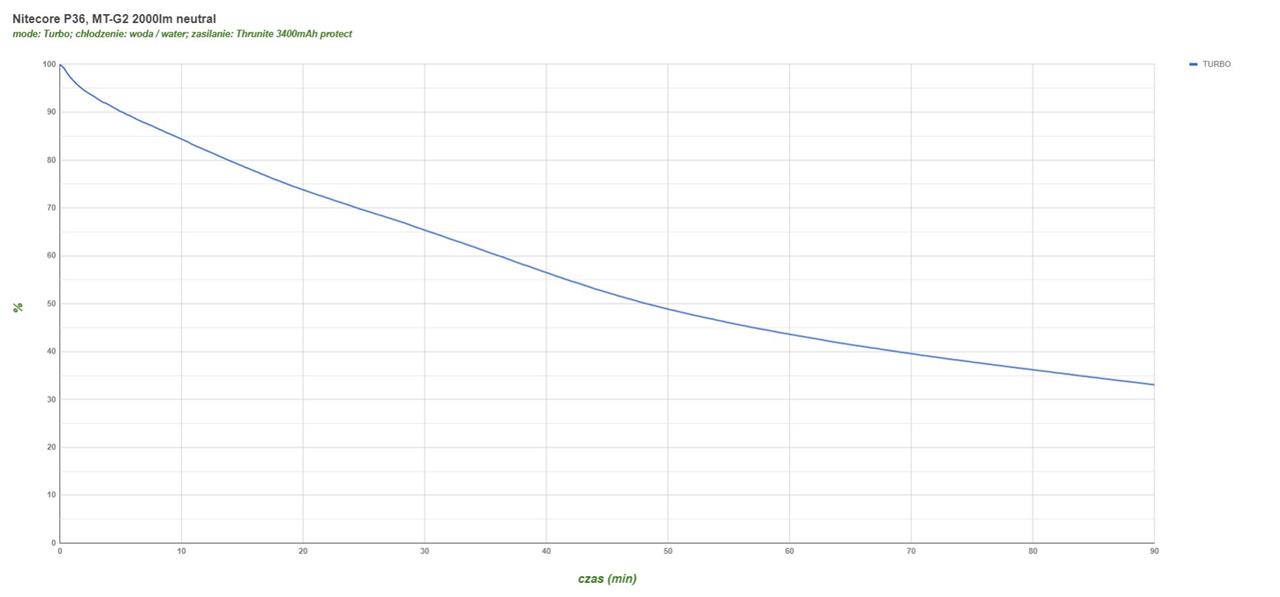
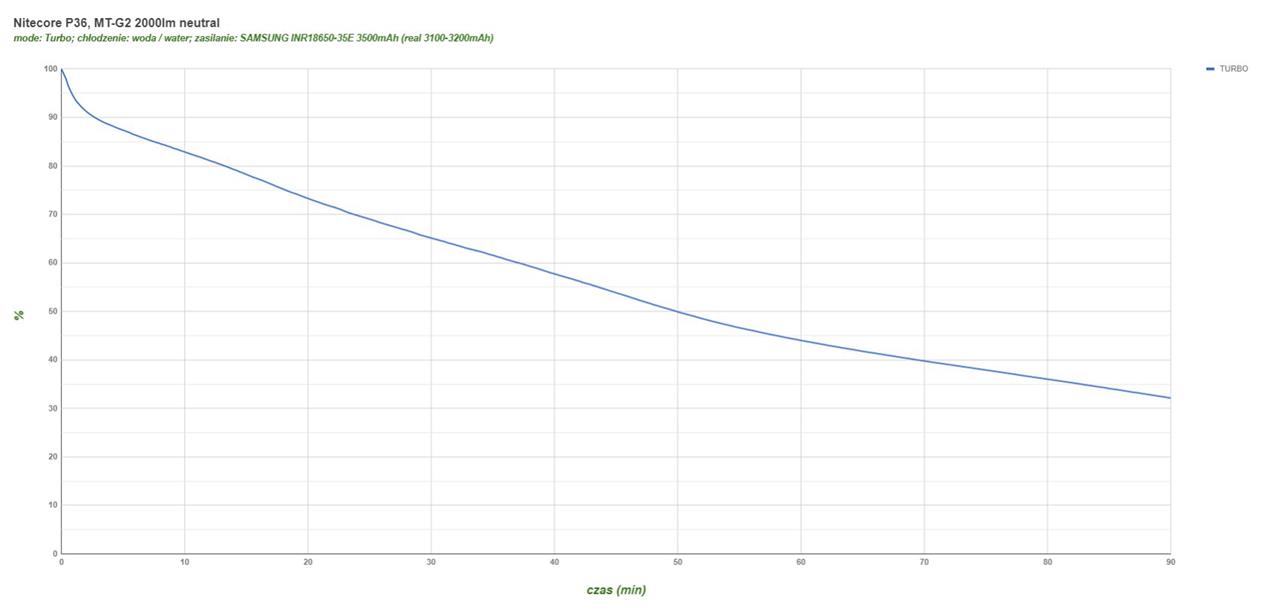
As you can see, it is not flat; (a pity, because with the 2 * 18650 power supply the manufacturer could better use the potential of flashlights.
Size comparison:
Nitecore P36, Nitecore SRT9 and Acebeam EC35. P36 noticeably the biggest in the entire stake.
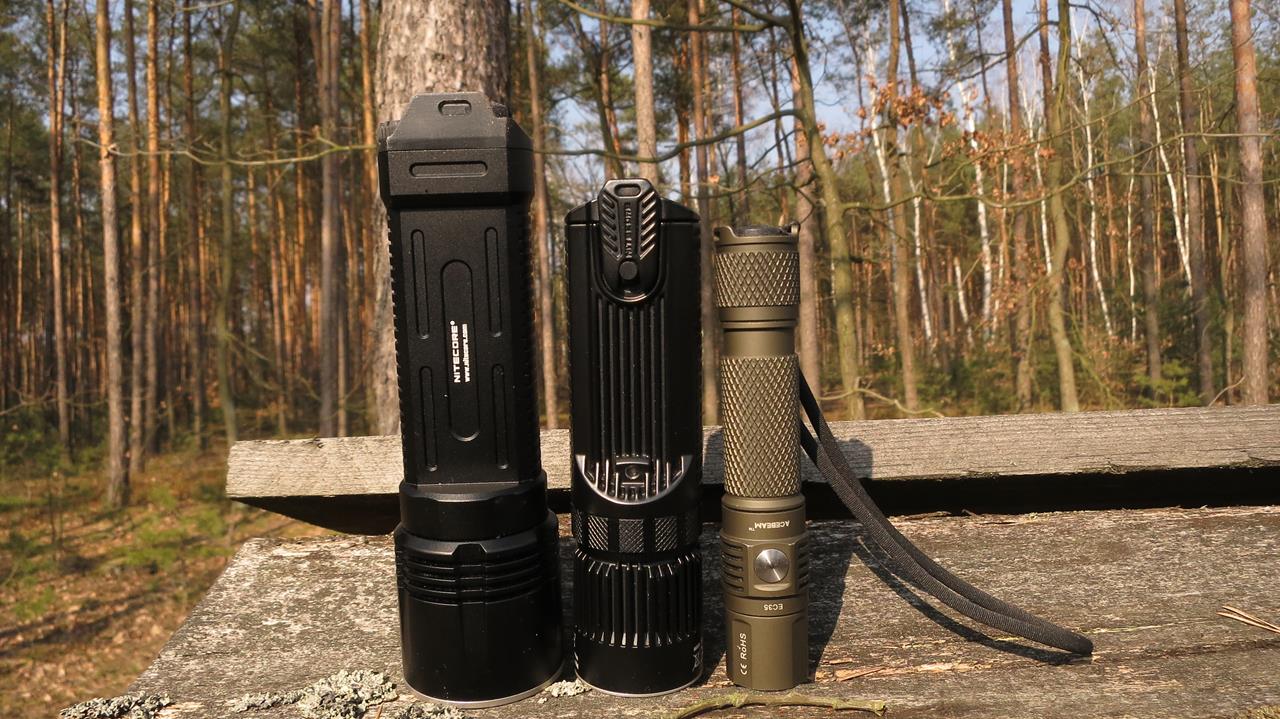
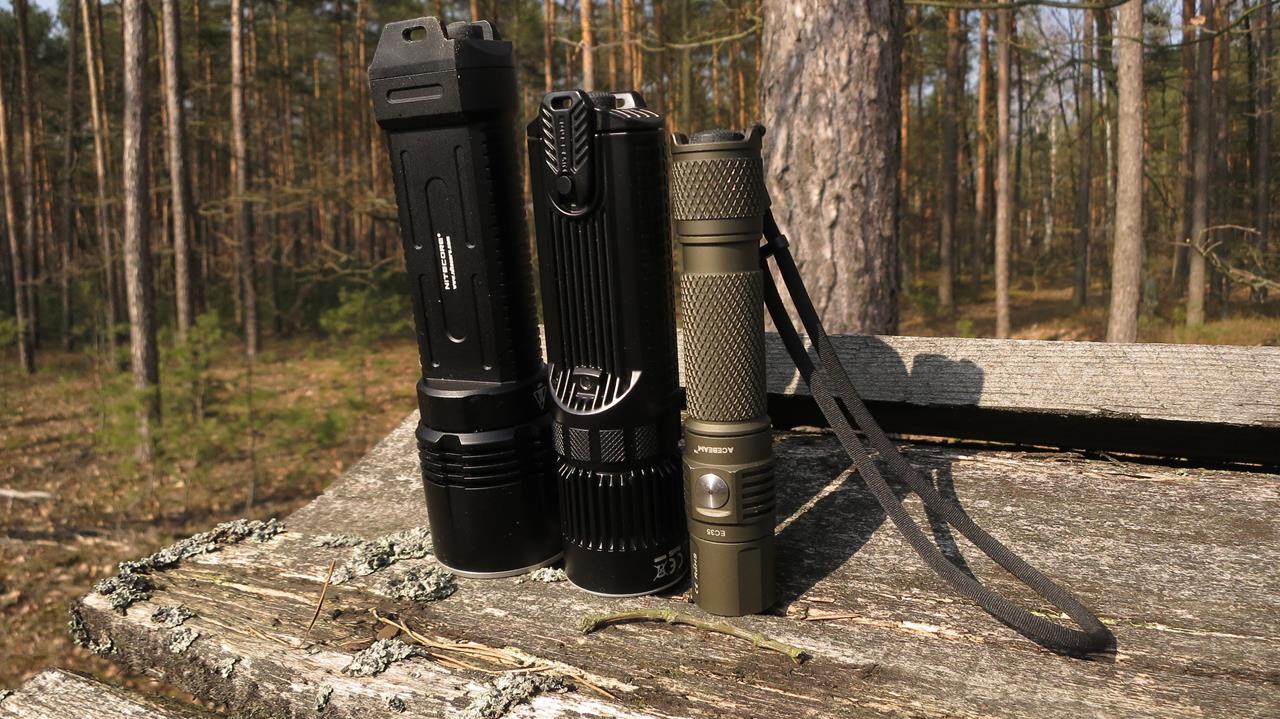
Nitecore SRT9, EC4 and P36
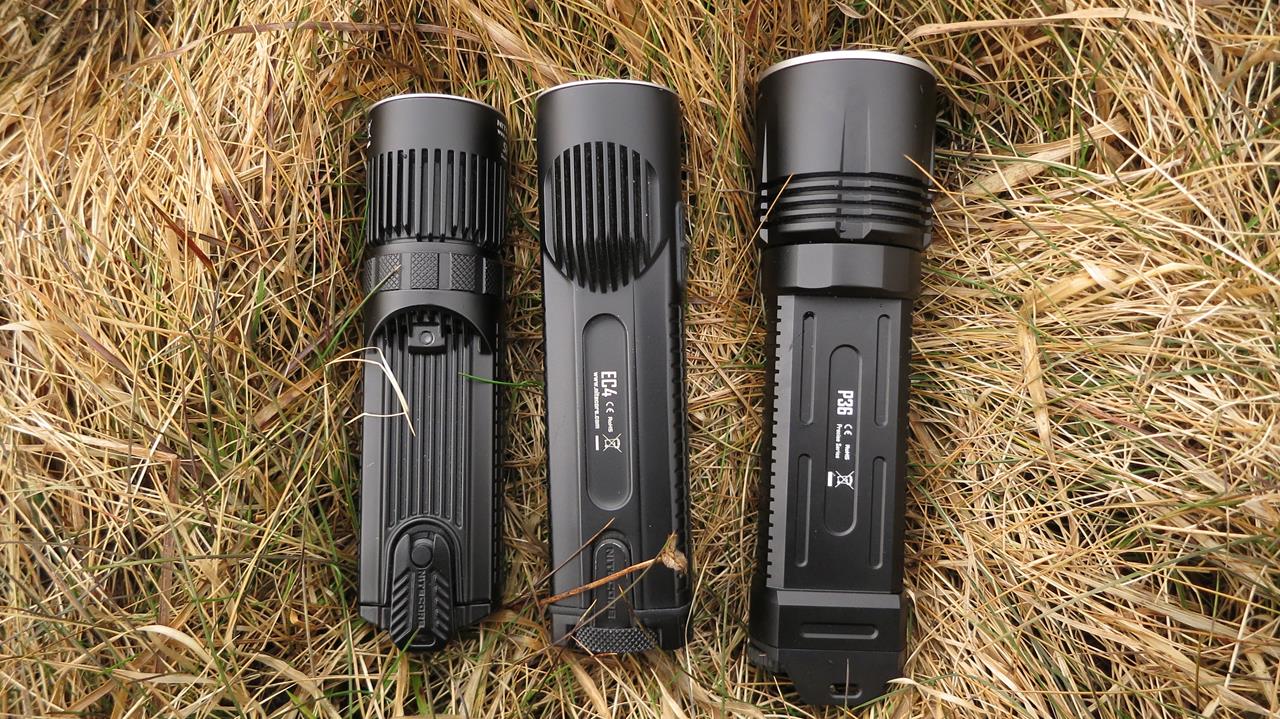
EC4 and SRT9 are similar in magnitude
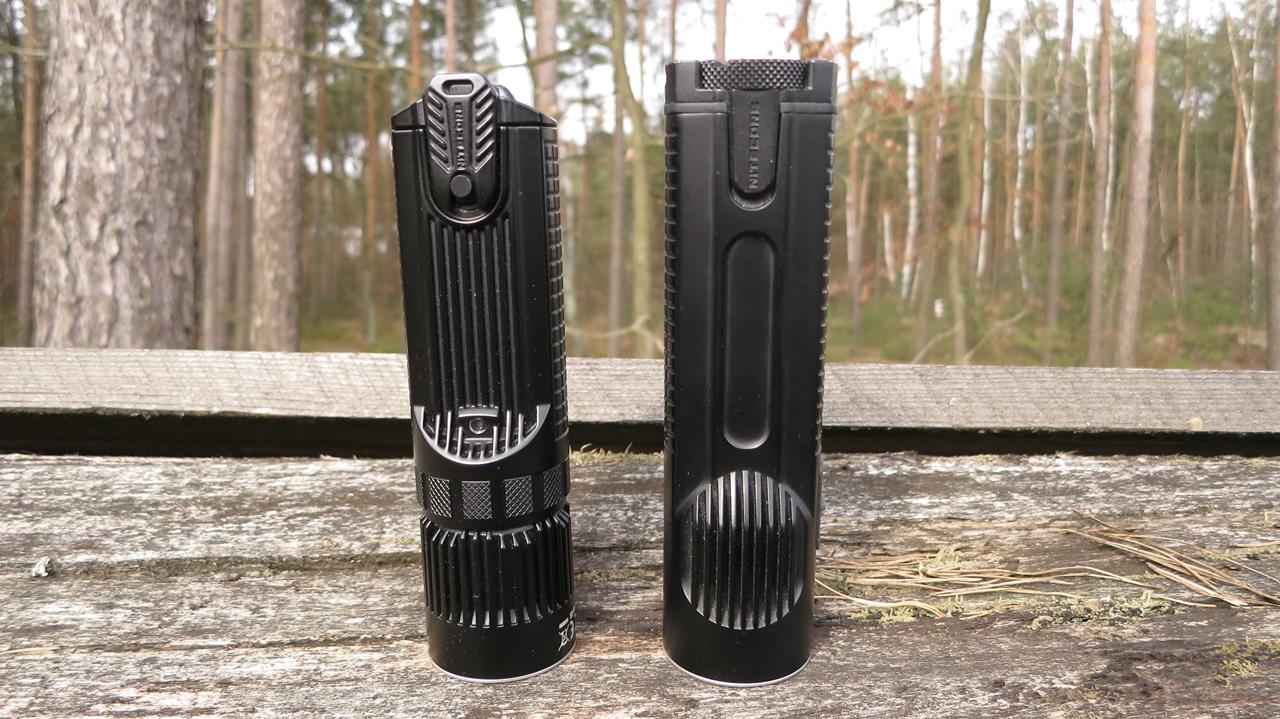
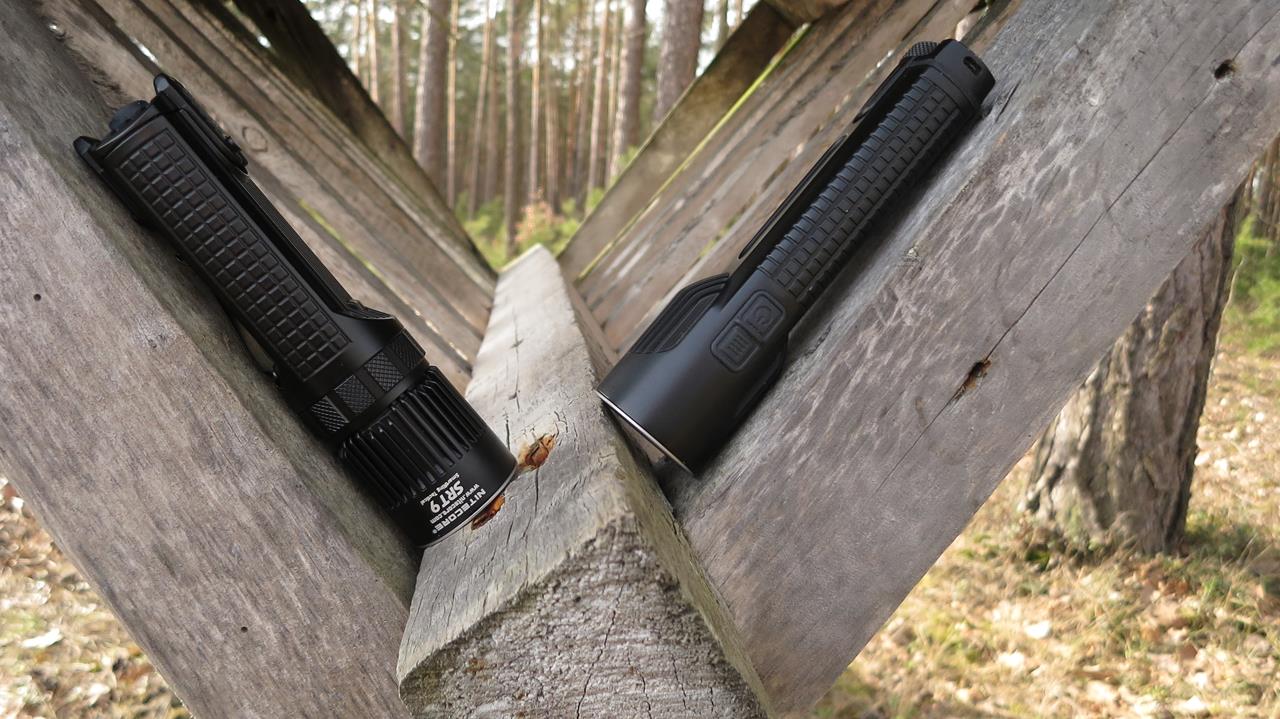
UV torch FiTorch MR35
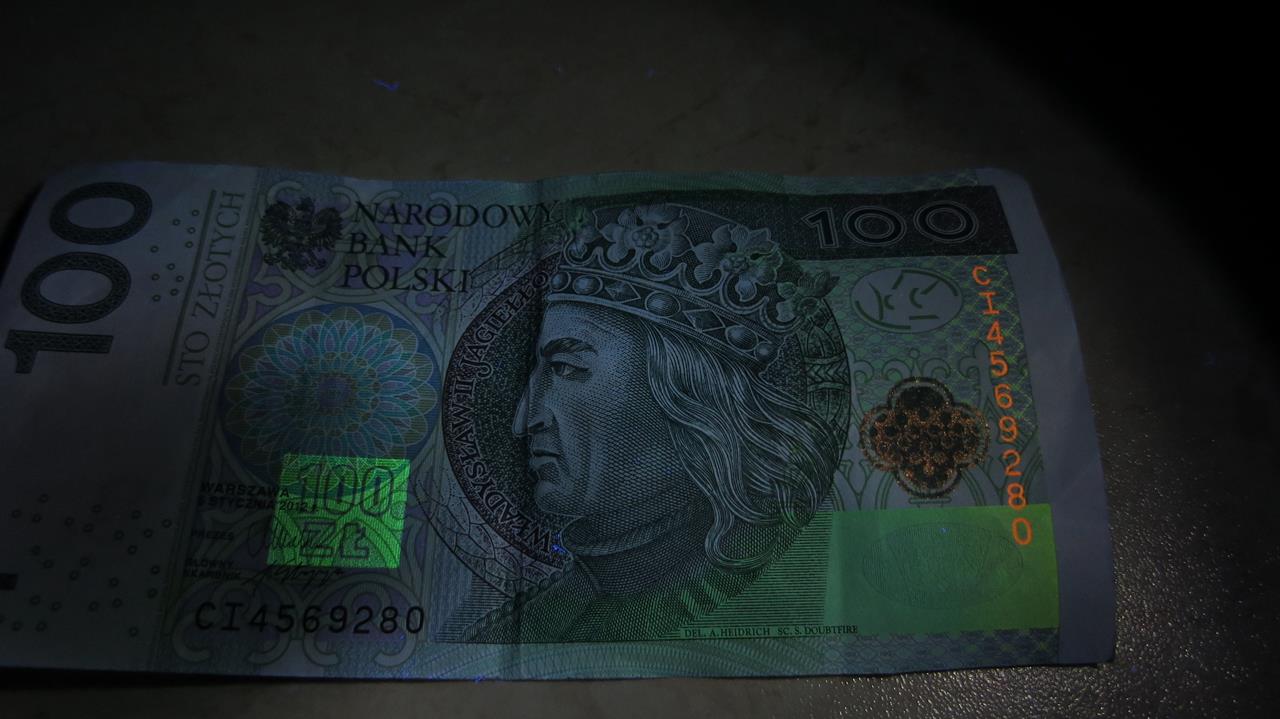
Nitecore SRT9 (I do not think I have to comment ...)

Weight with links:
SRT9 -323 grams
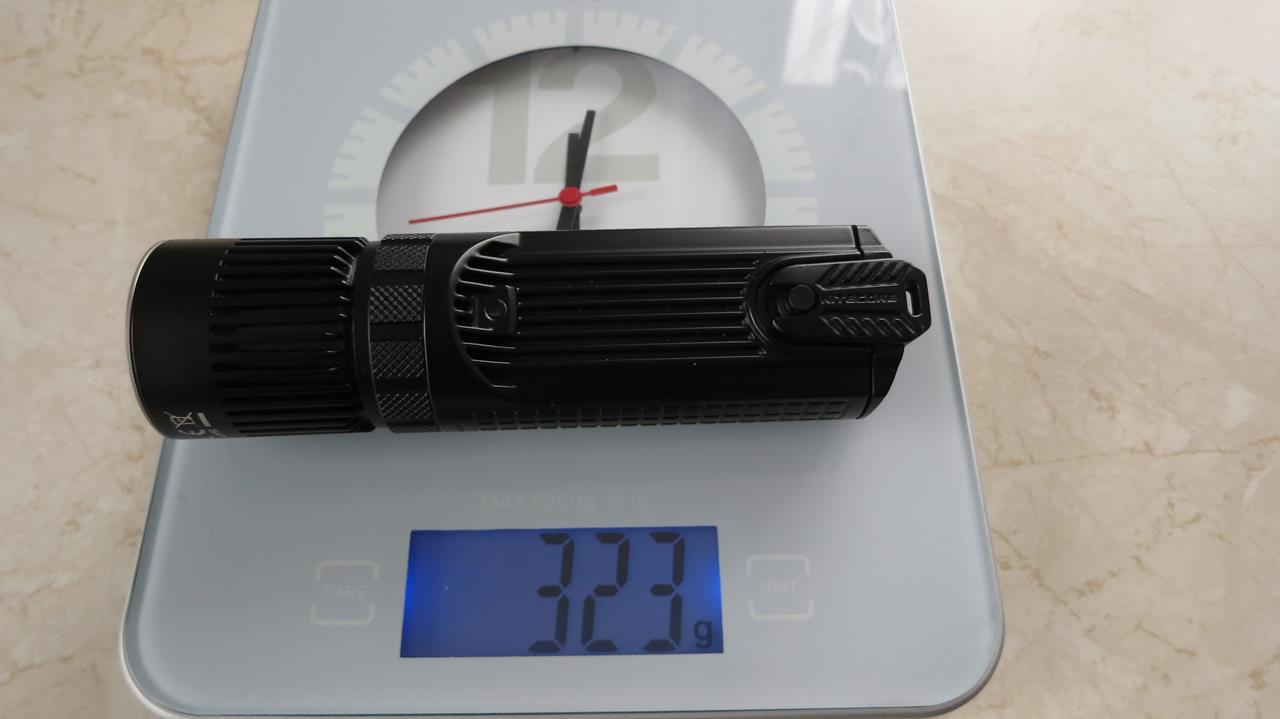
P36 - 346 grams
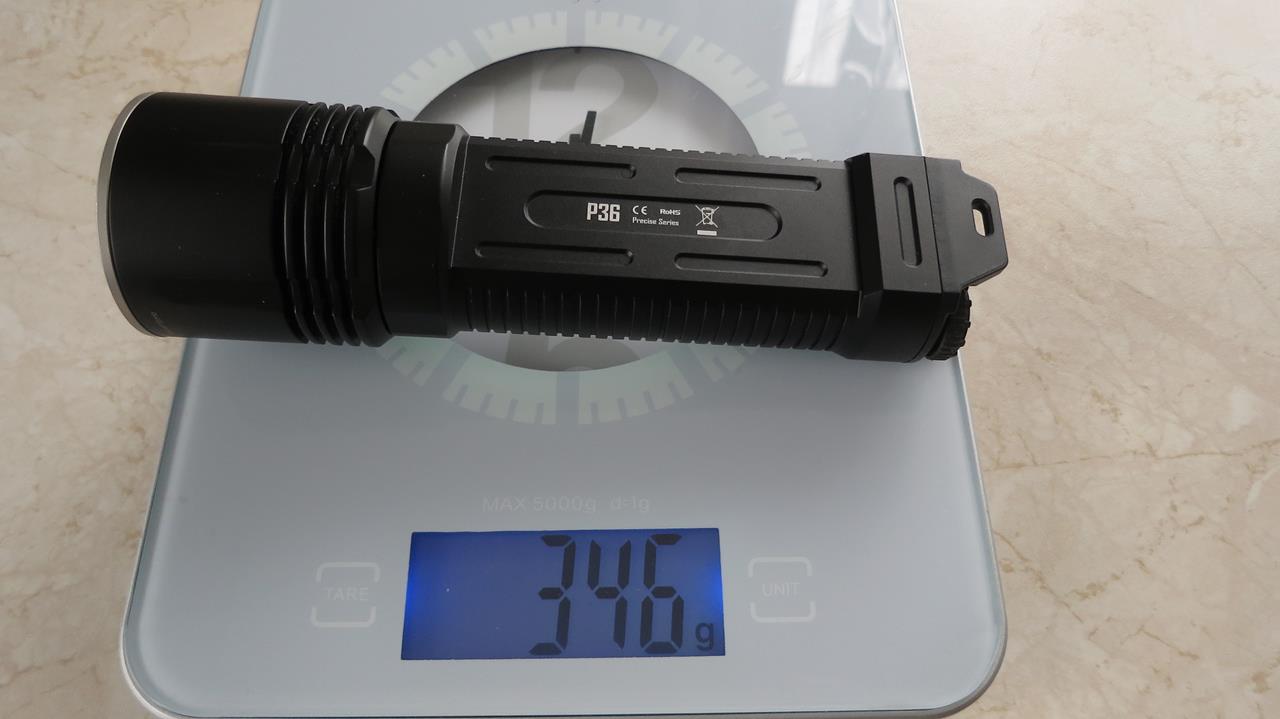
Nitecore EC4 - 265 grams
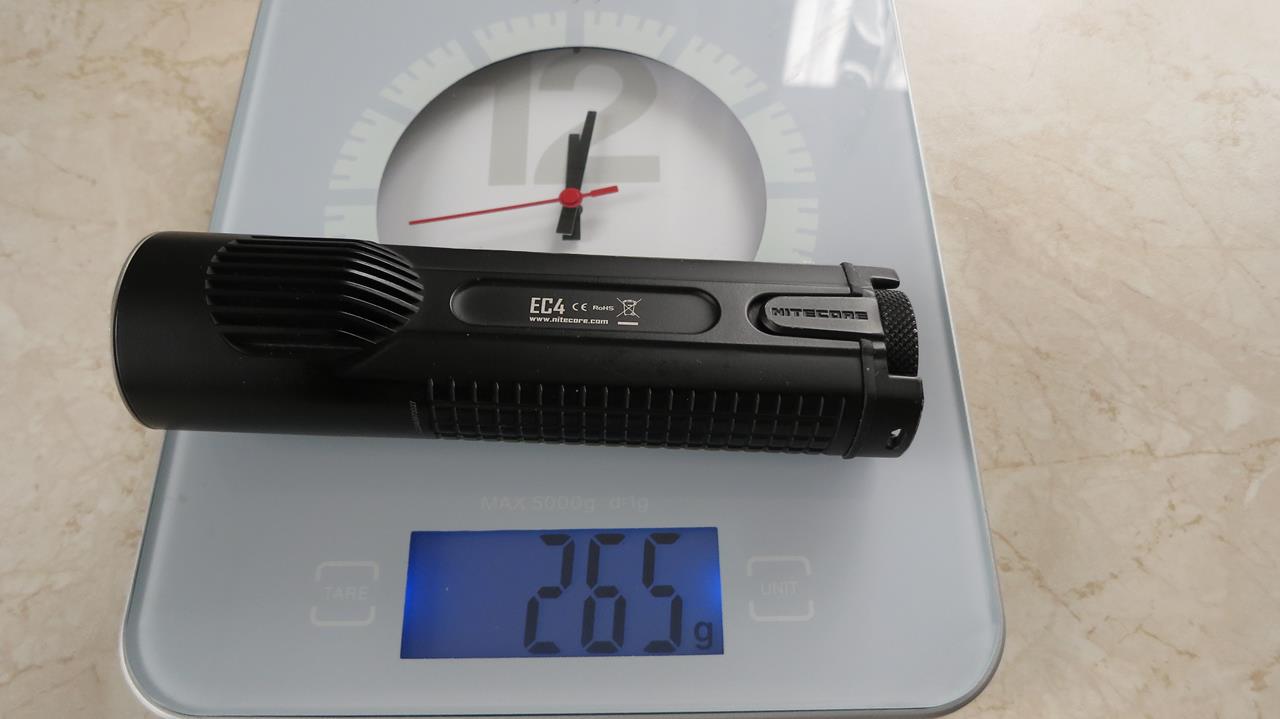
And you can ask yourself ... where did Nitecore make a mistake? ...
Field shots, camera settings ISO-200, f / 2, 1s, white balance - Fluorescent H
Nitecore P36 - modes from 10 to 5



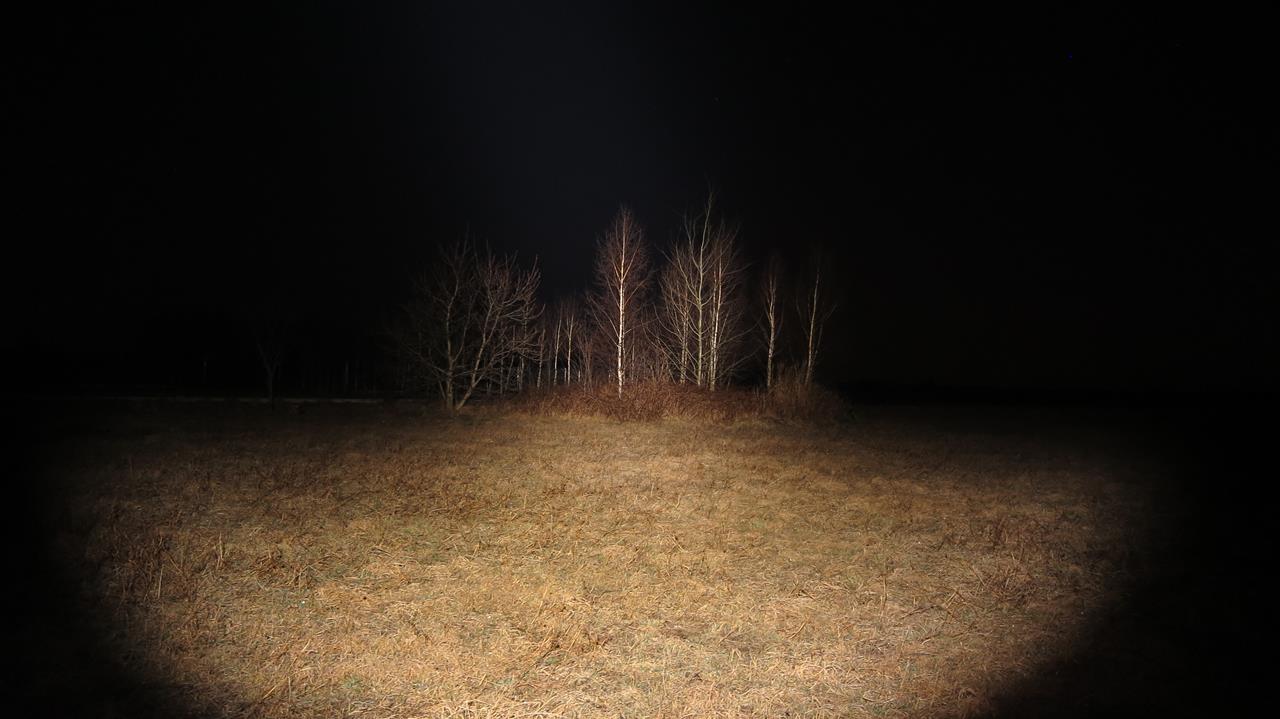
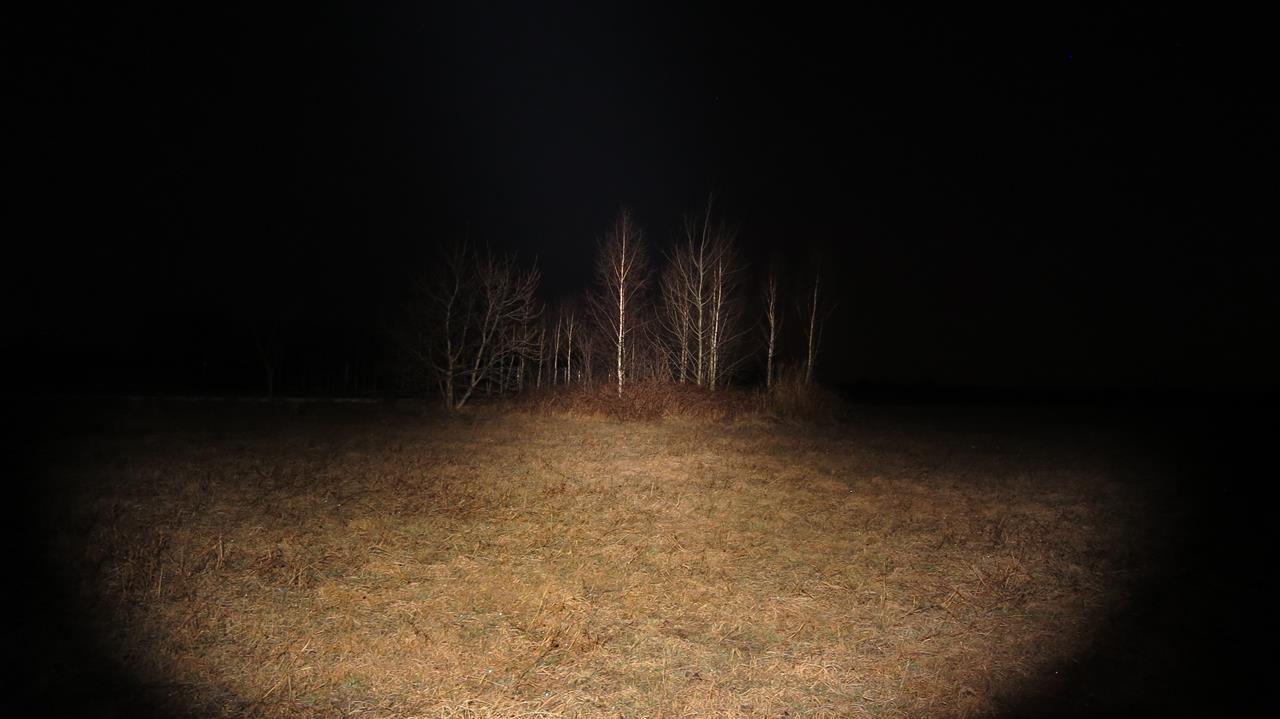
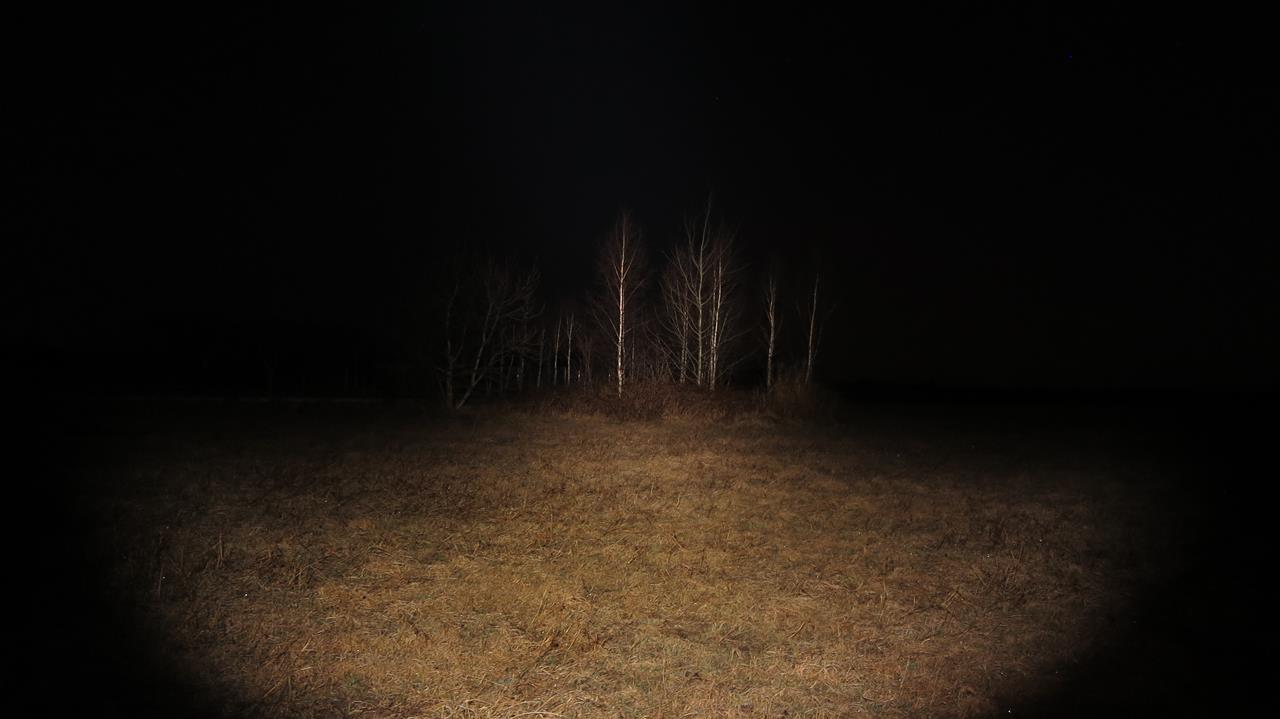
Nitecore SRT9
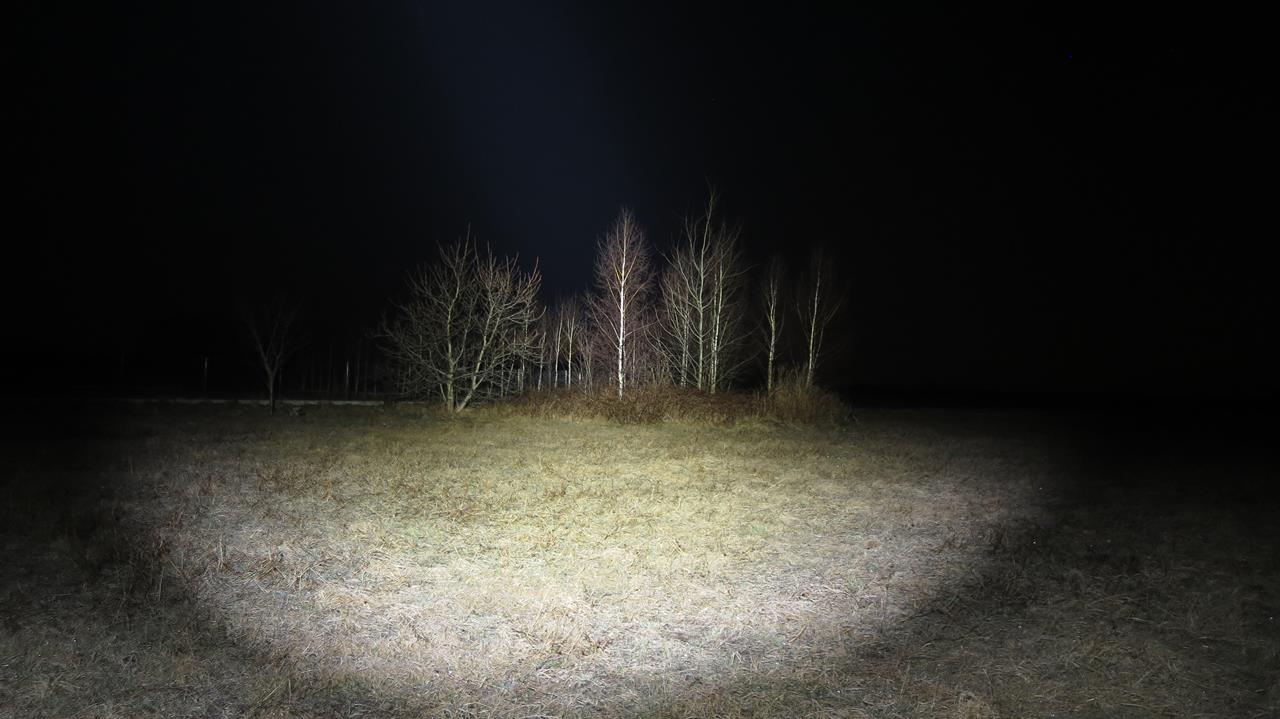
Nitecore EC4 (mod on XM-L2 U2 3C)
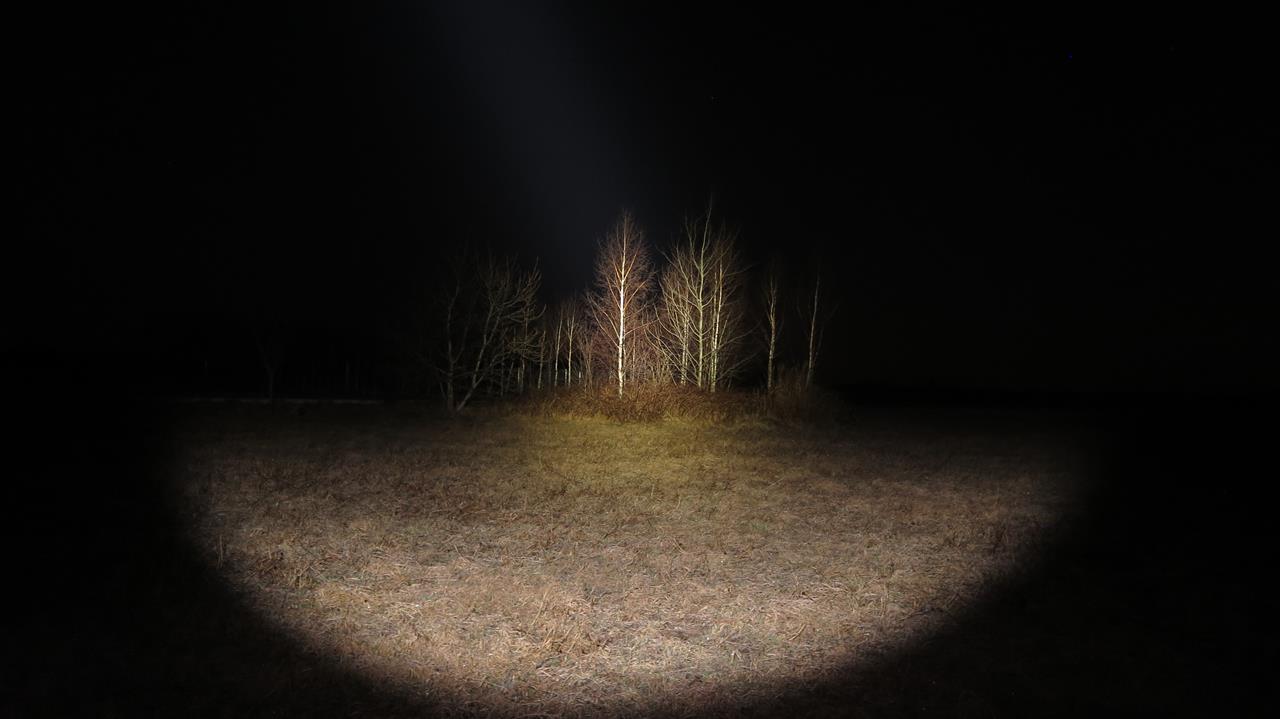
Klarus G20L
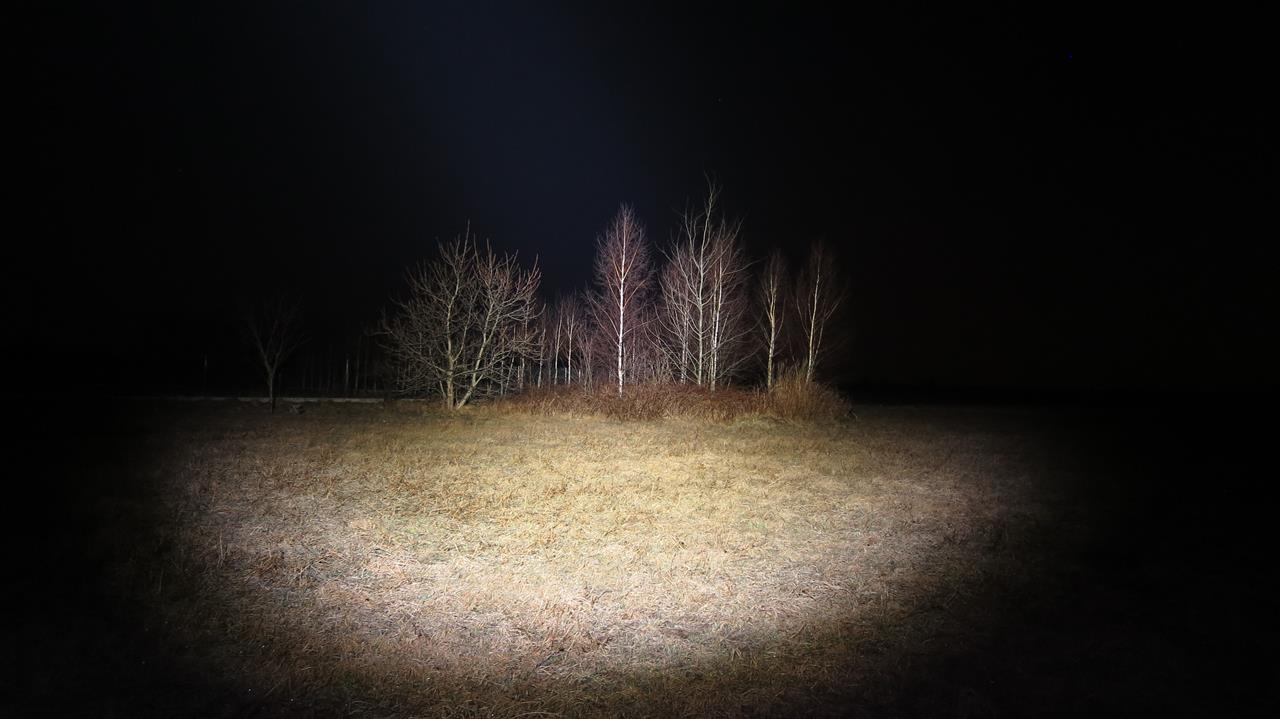
Nitecore P36
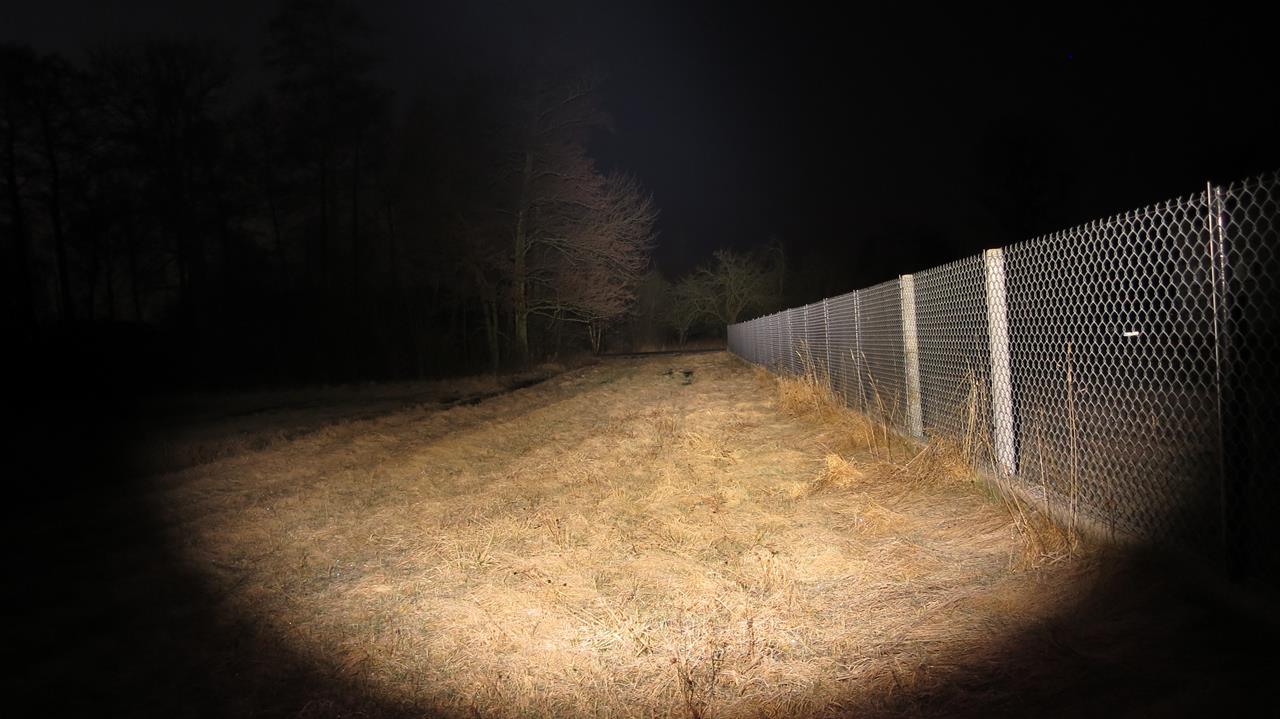
Nitecore EC4 (mod on XM-L2 U2 3C)
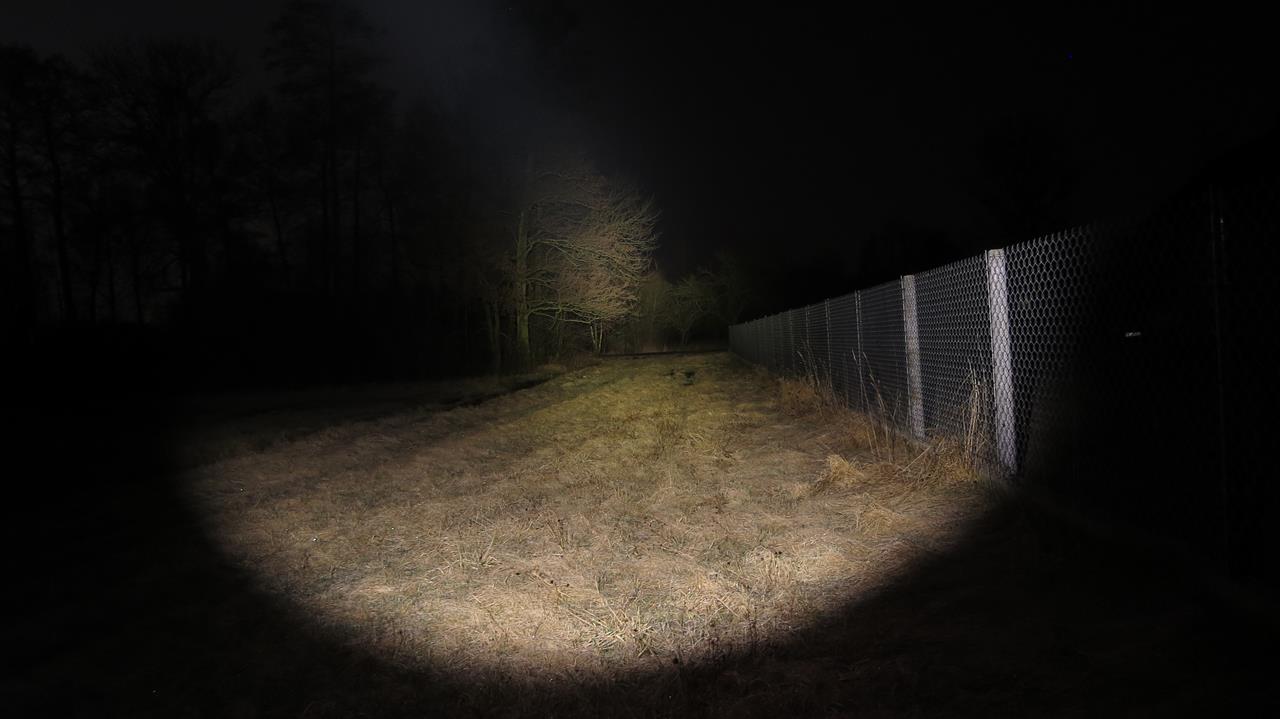
Klarus G20L
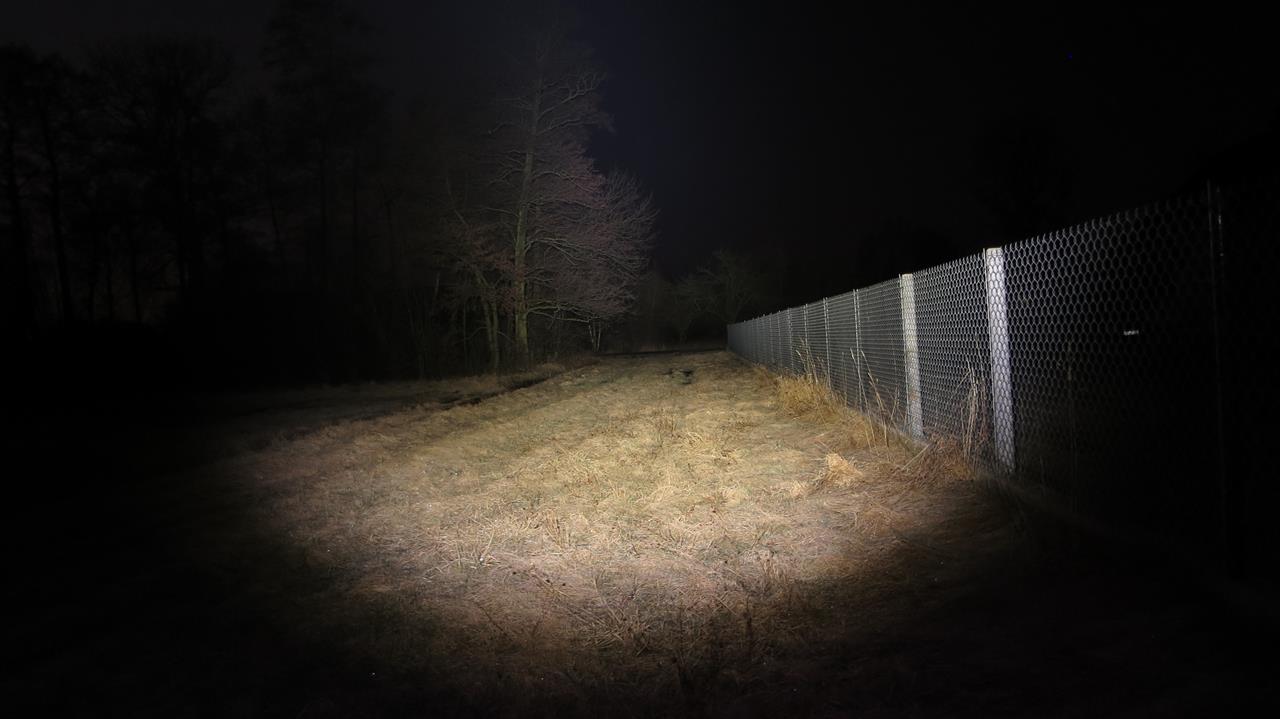
Nitecore P36
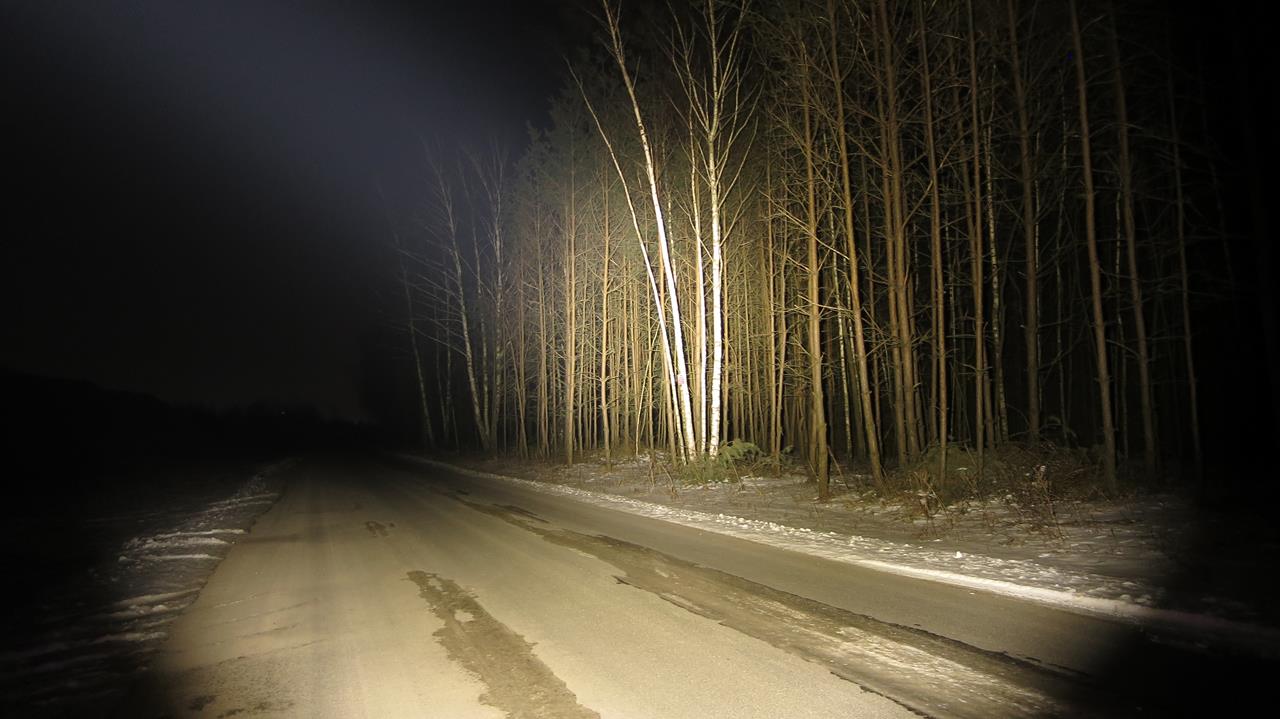
Nitecore SRT9
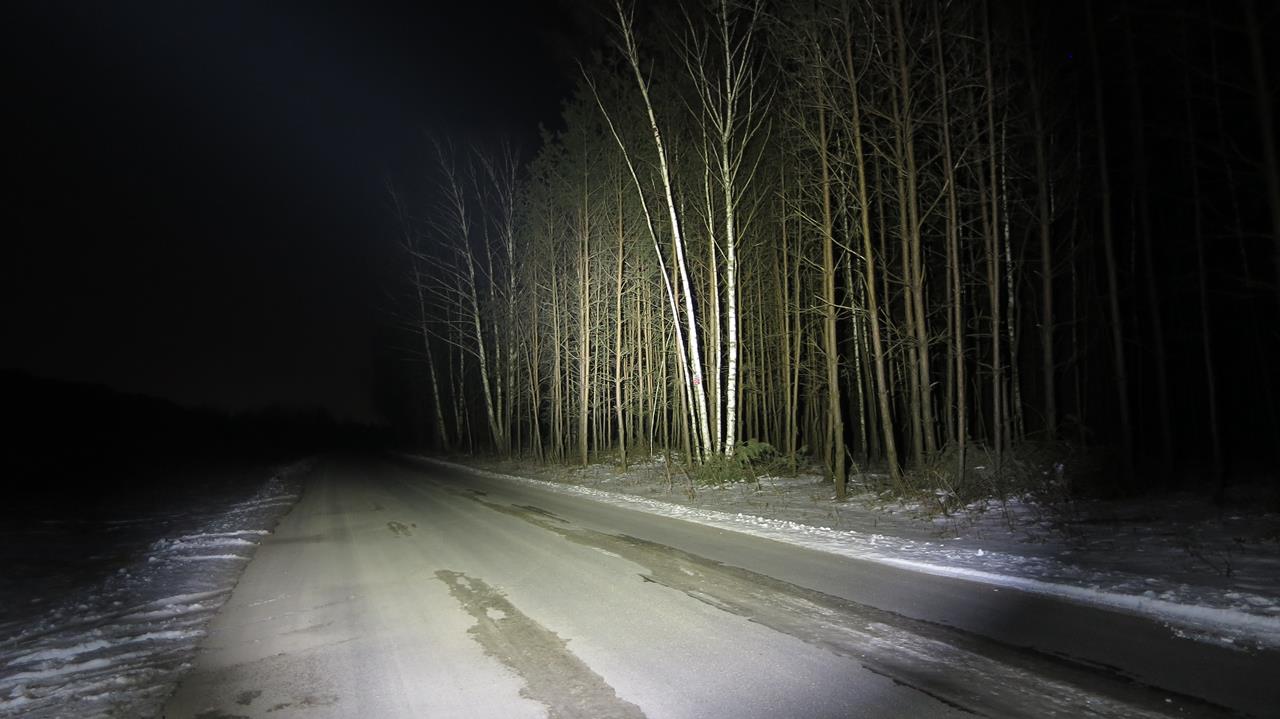
Nitecore EC4 (mod on XM-L2 U2 3C)
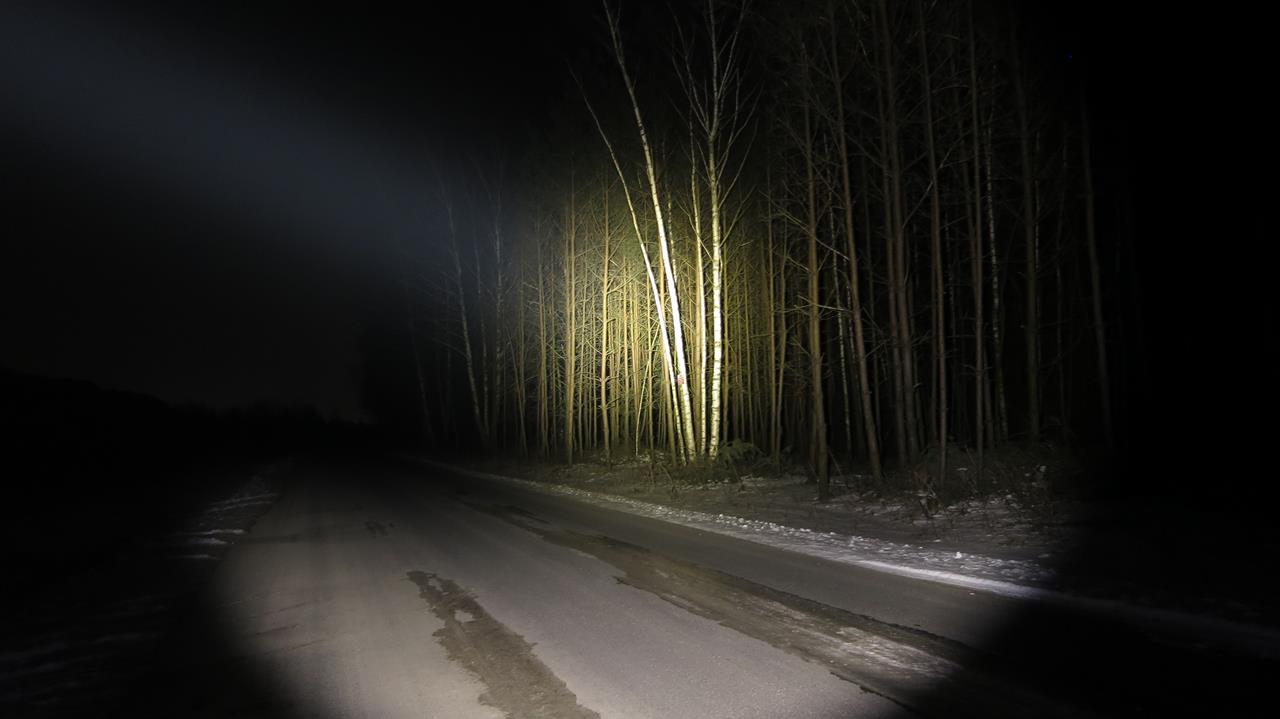
Klarus G20L
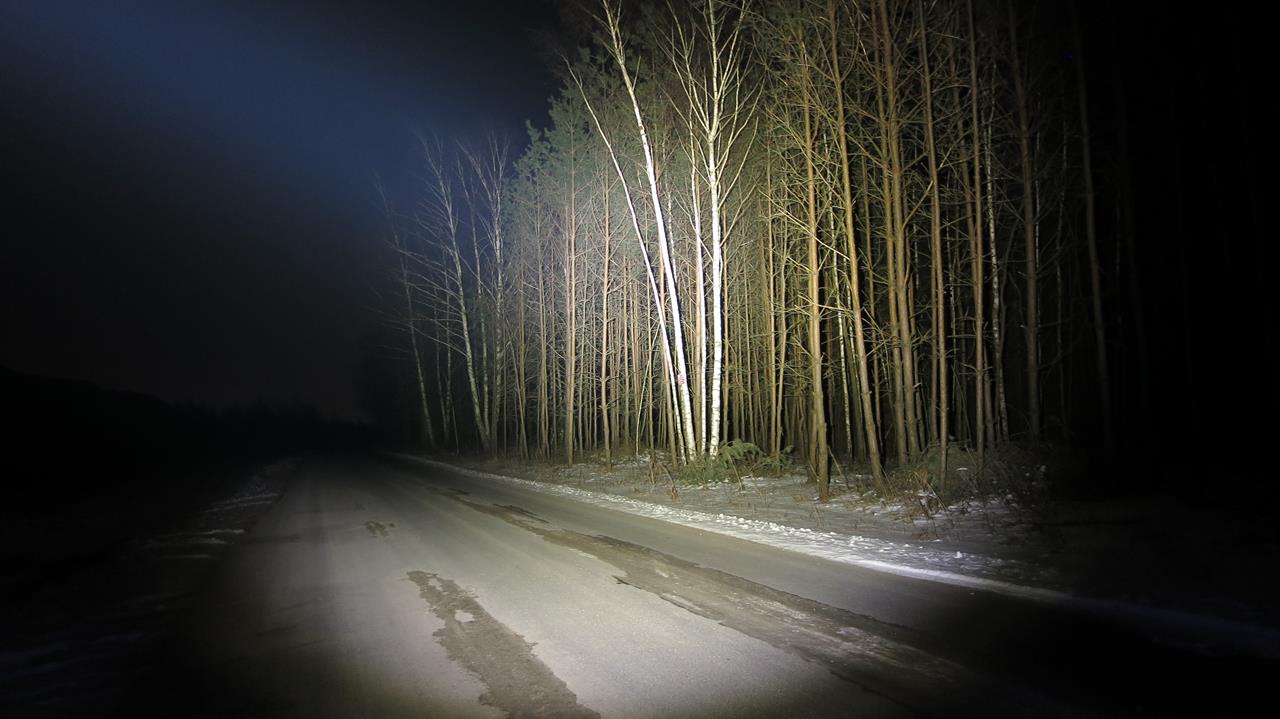
FiTorch P26R (neutral)
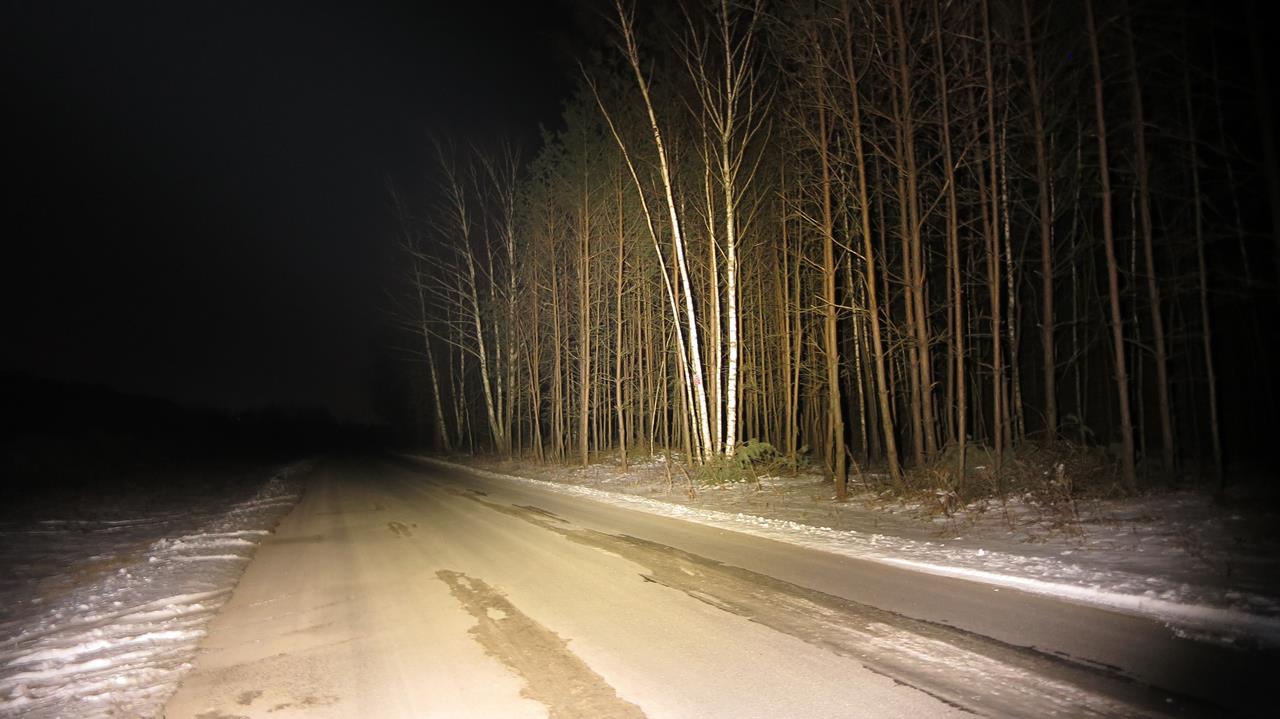
And finally, the test of discharged cells up to 3.45V
Nitecore P36
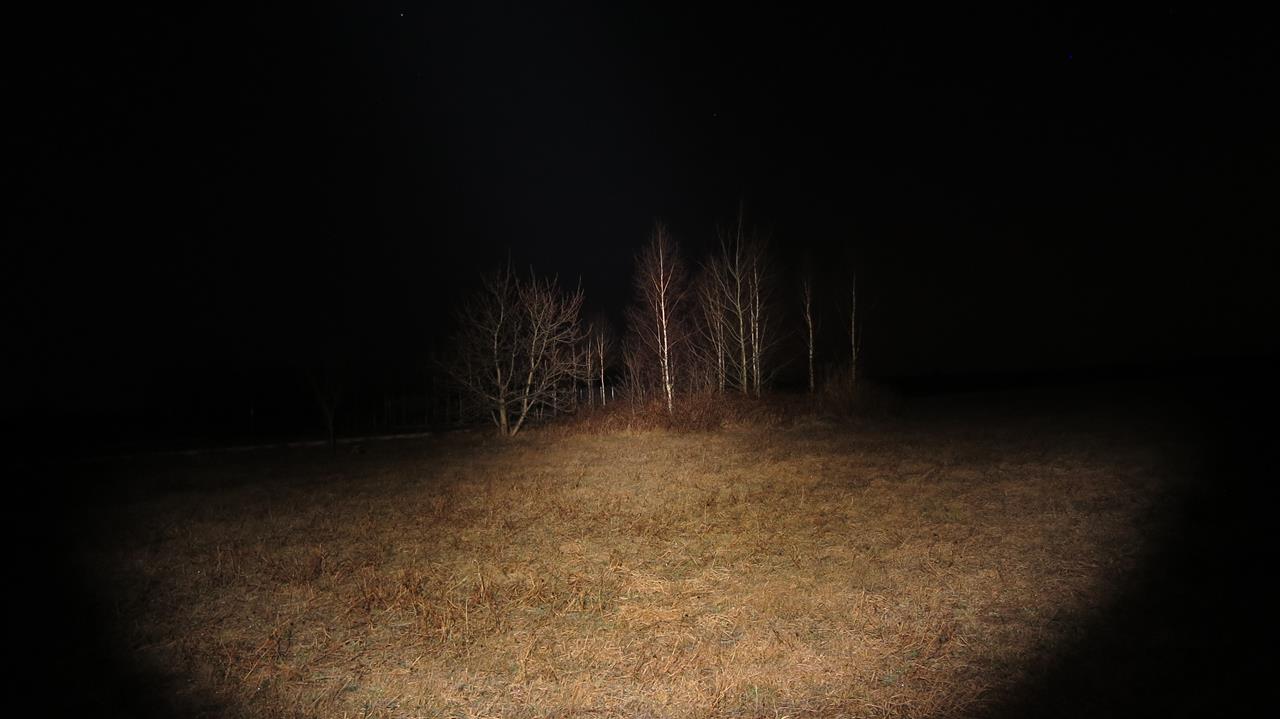
Nitecore SRT9
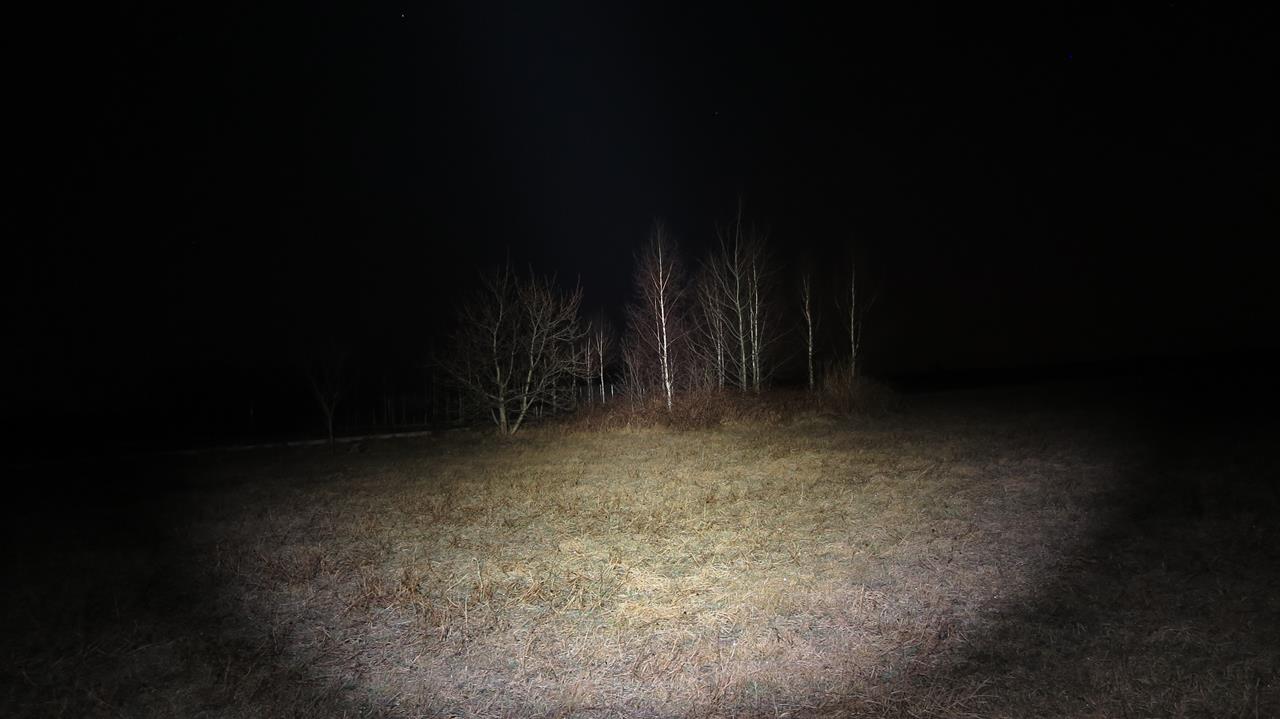
Nitecore SRT9, diodes: red, green, blue:

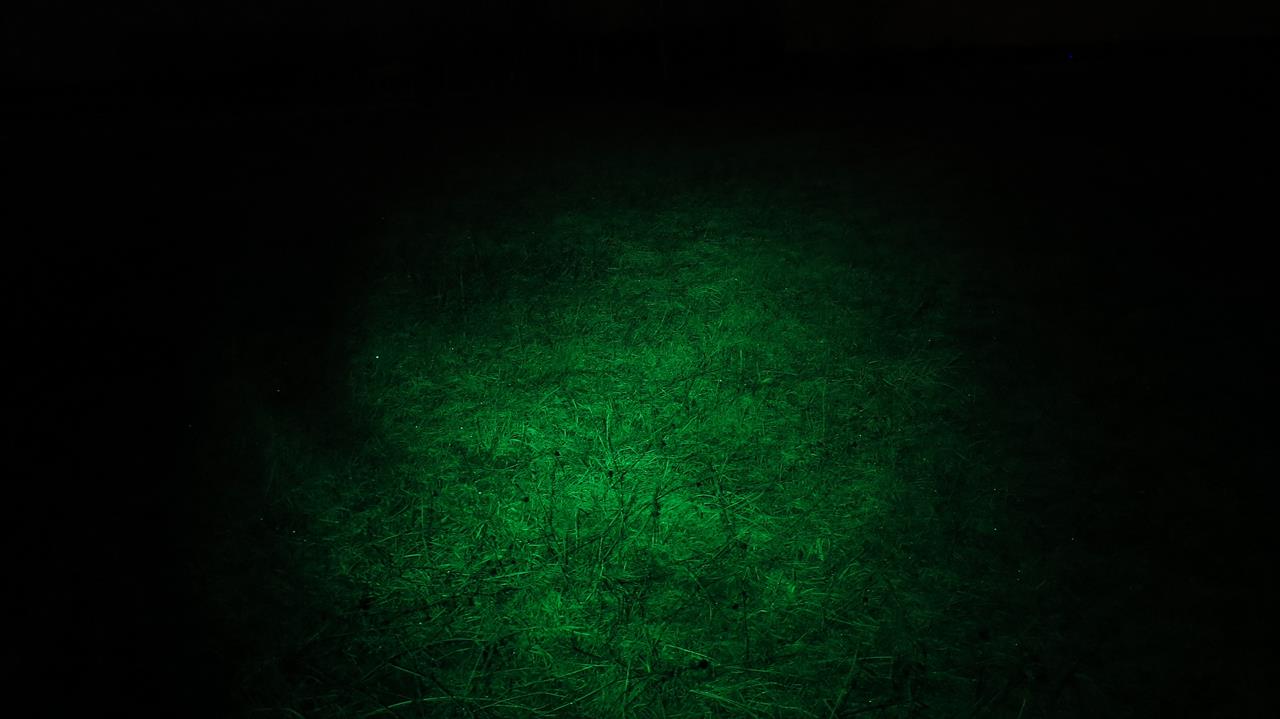
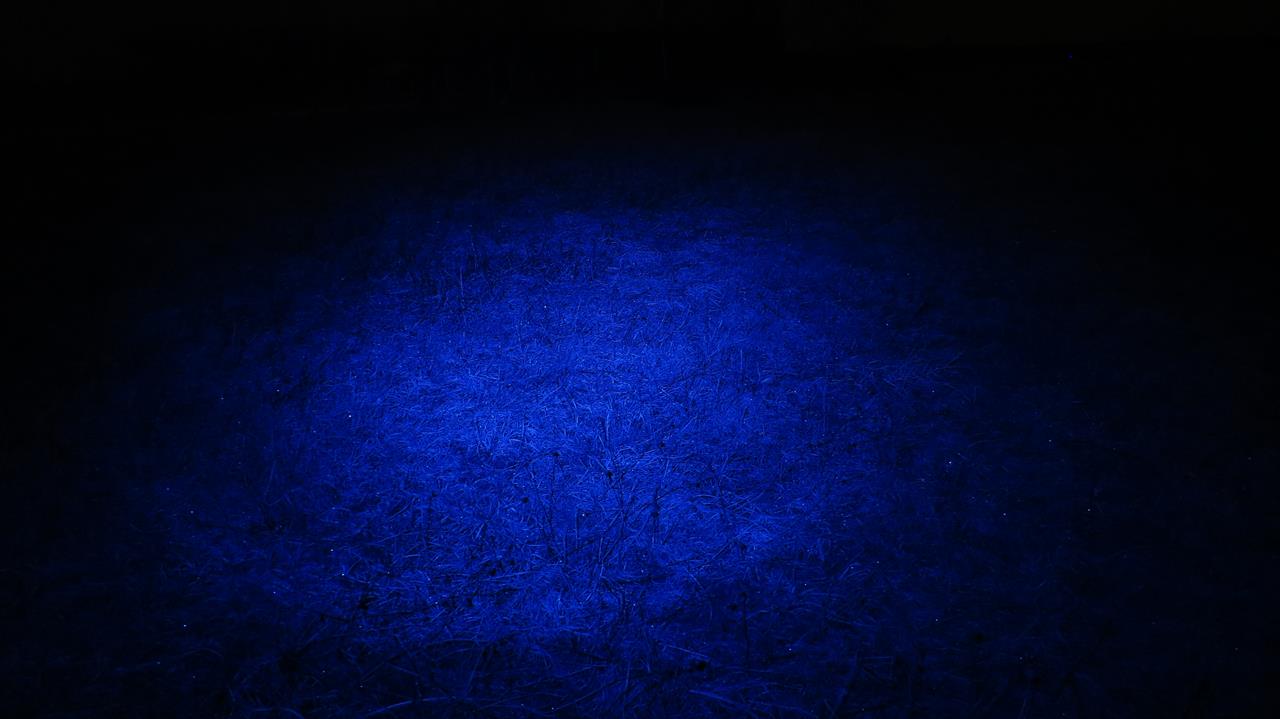
Full size photos:
https://drive.google.com/drive/folders/1mWWarIqbJV6niruCPGjfO_p3gWQbXVWC?usp=sharing
A few words of summary:
I will start with dimensions. Looking at SRT9 and P36 you can see a significant difference in dimensions, and in the case of P36 you can see the passage of time. Currently, most manufacturers tend towards the smallest size and the greatest "power". In terms of performance, I can not blame any of the flashlights. The P36 is matte, the SRT9 is more shiny .. pity, I like matte flashlights.
Control, here I think it's more a matter of taste, if I had to choose, definitely SRT9, I can change the mode with one hand, in P36 too, but it requires more commitment, although looking at the simplicity and ingenious (in my opinion) driver Nitecore EC4 , I would not choose any of the above.
The quality of light - here the P36 beats the SRT9 head. Of course, SRT9 has a UV diode and diodes: red, green, blue, but how many people are able to use these diodes? Not to mention the quality of the main diode in P36 and SRT9. In P36 it's a beautiful neutral diode, and SRT9? We can choose all ... on condition that it will be cold, ehh.
Both P36 and SRT9 are well-made torches, I like smaller flashlights (Nitecore EC4 is smaller, lighter, and in my opinion the maximum of a flashlight powered by two 18650 cells), with ordinary controls, so the opinion would not be completely objective, but if I had to choose something for myself, I would look for something smaller.
Regards
Eric
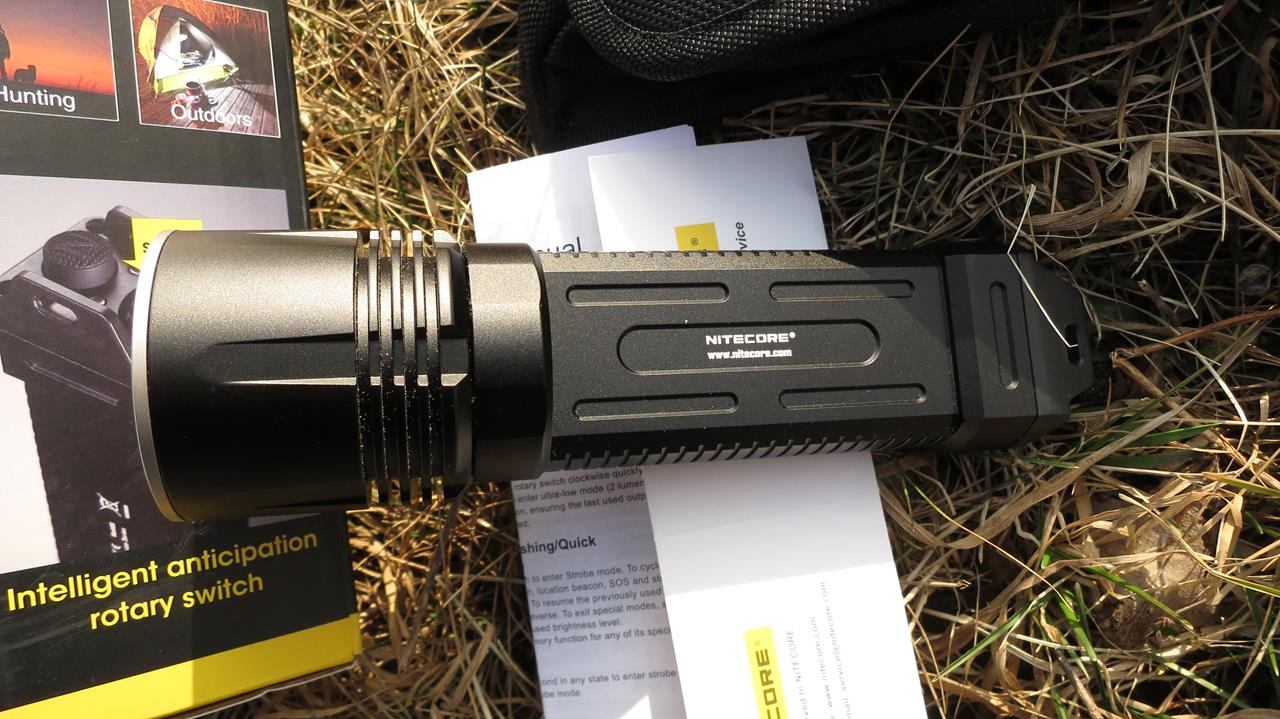
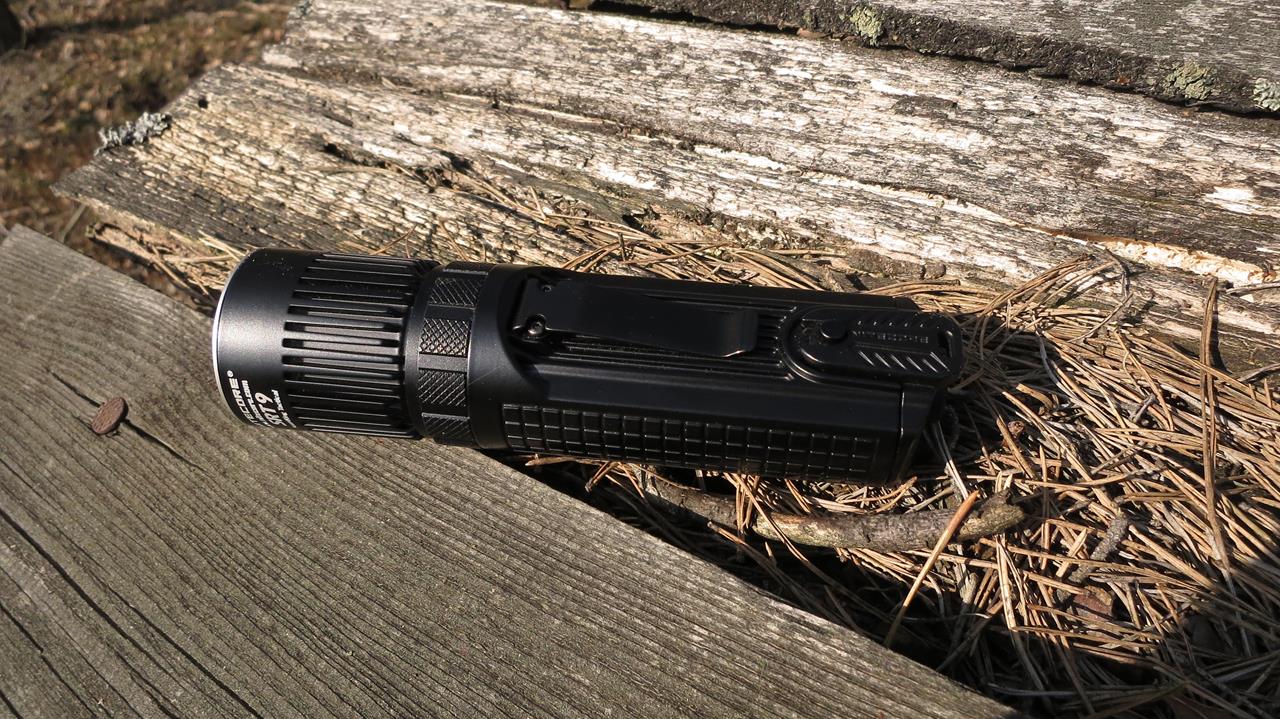
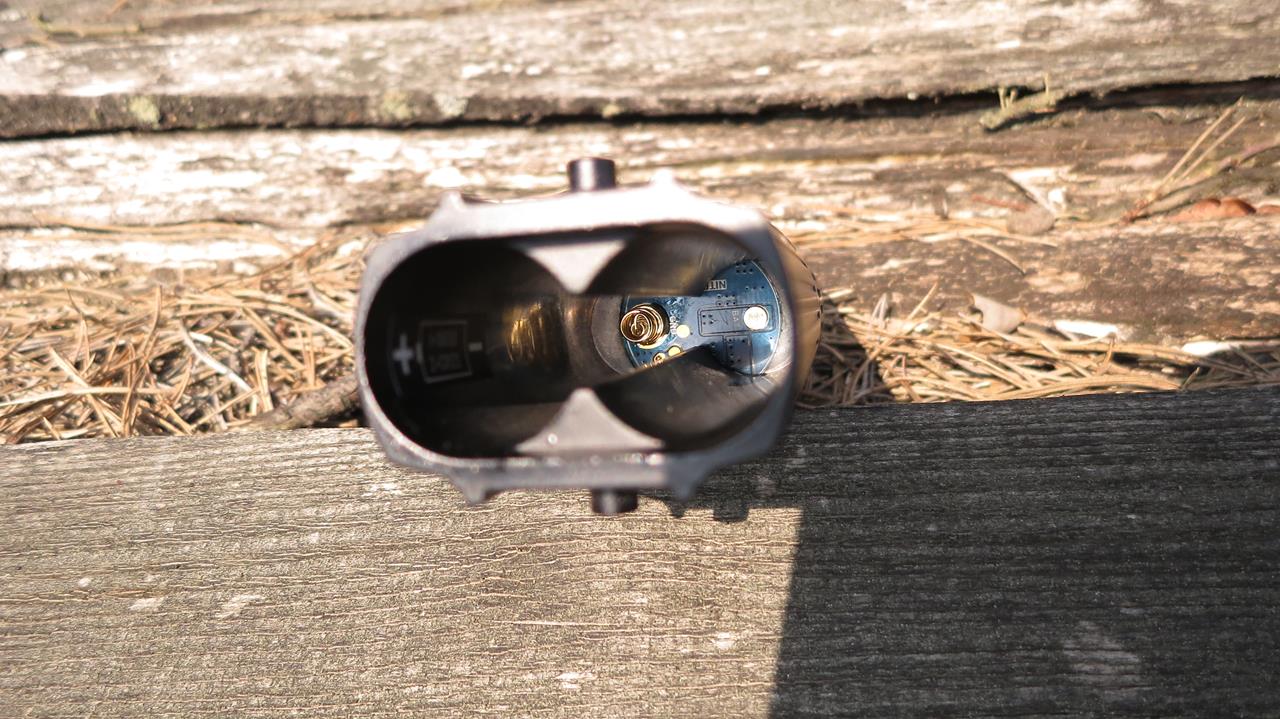
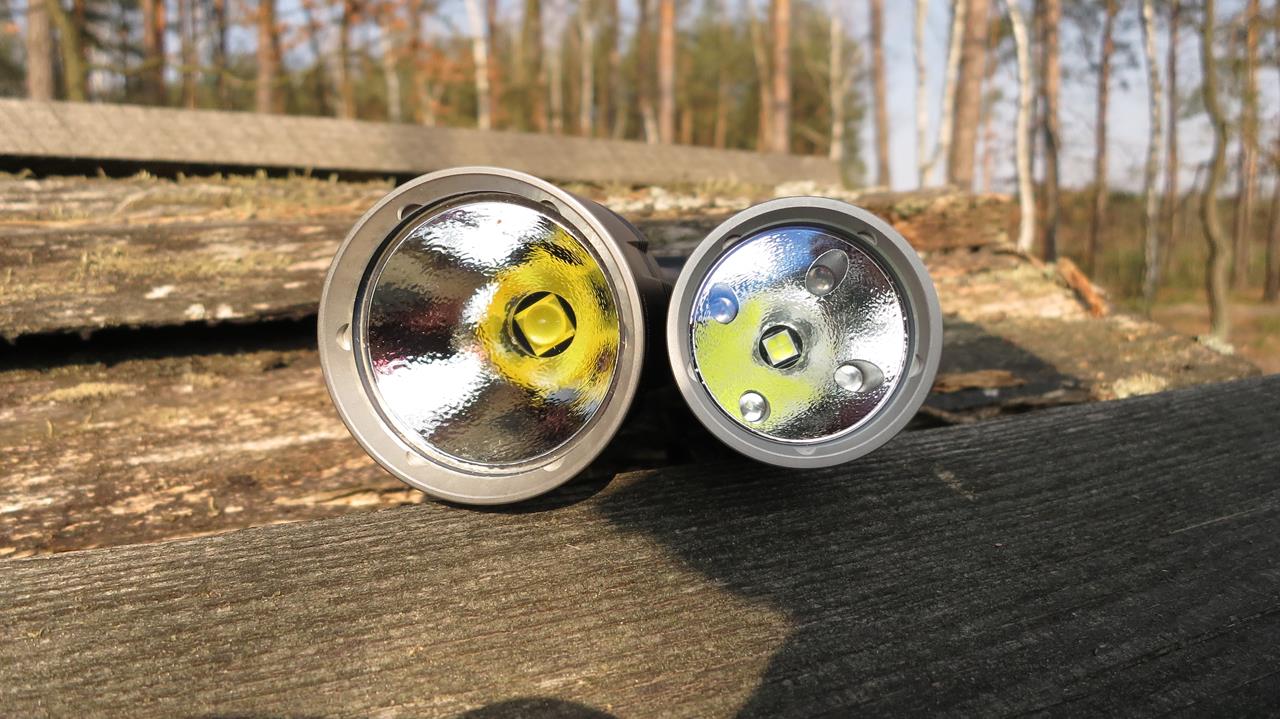
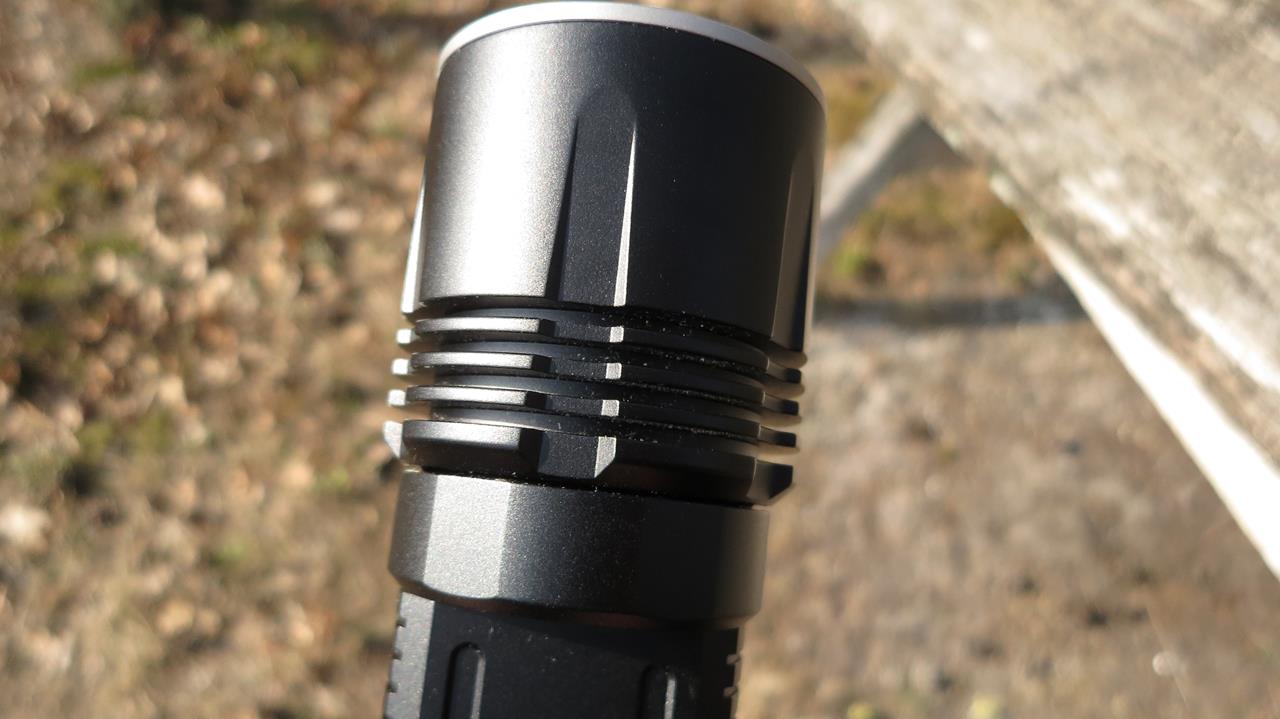
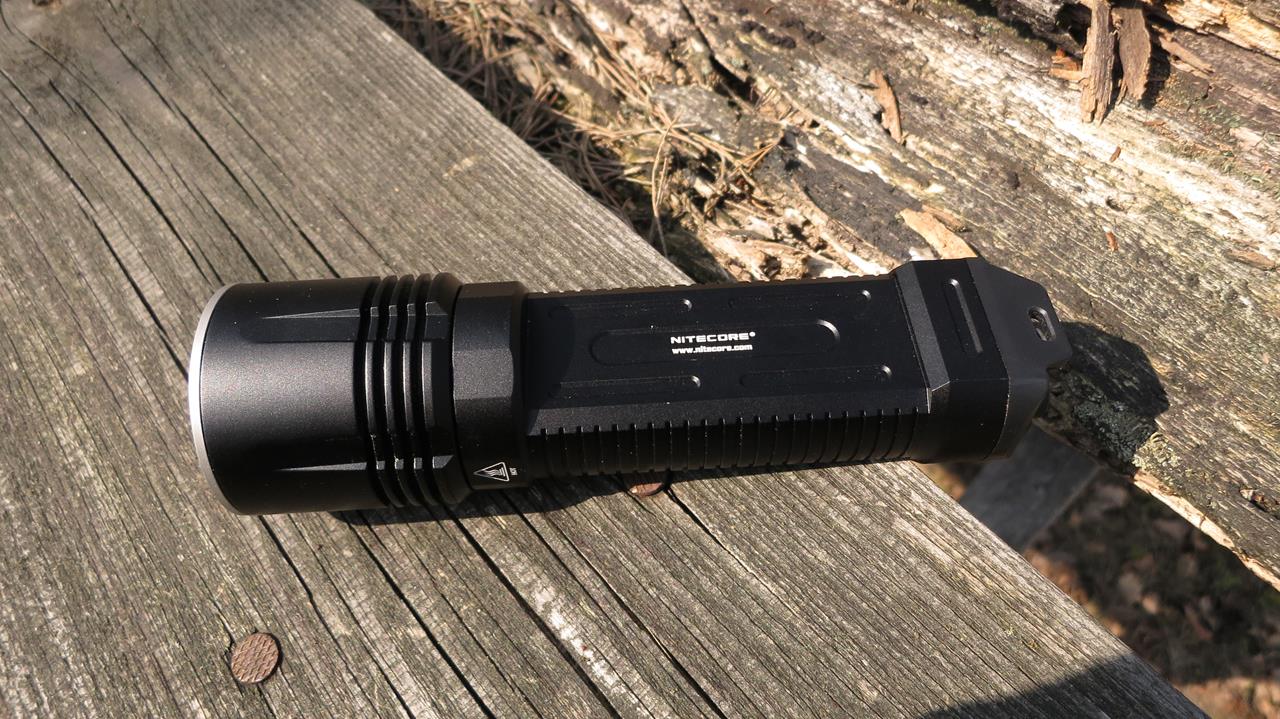
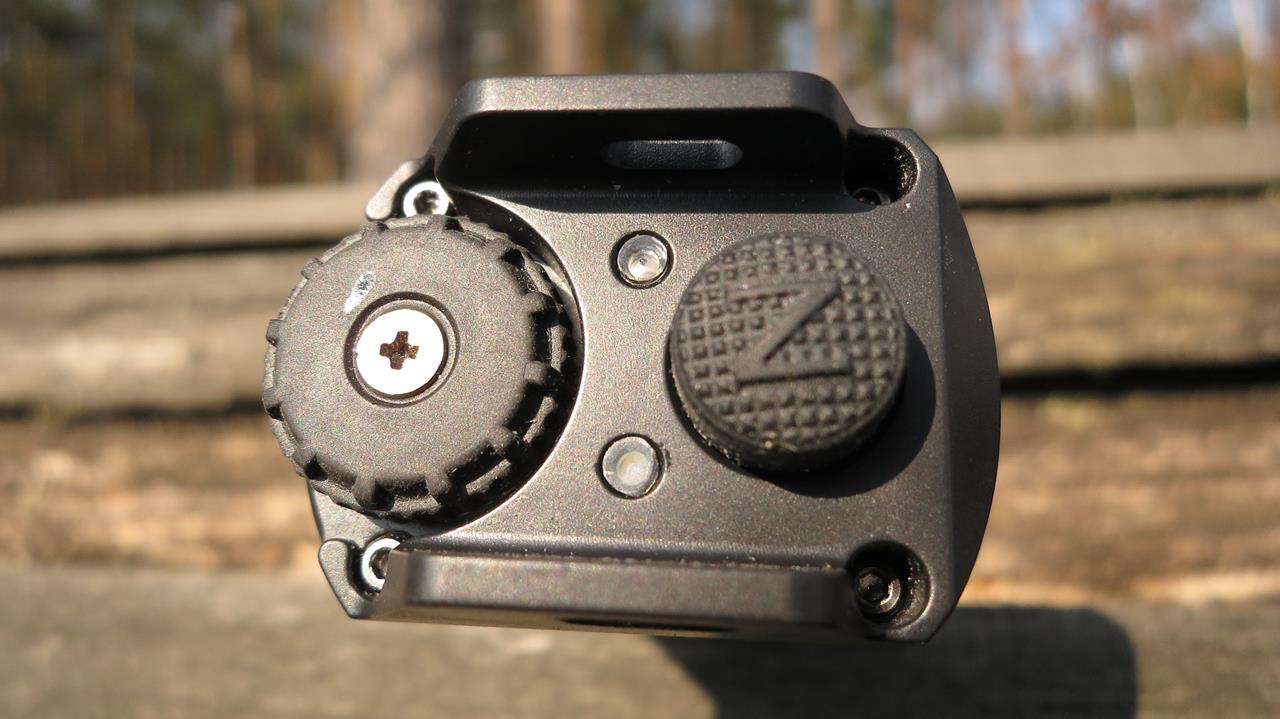
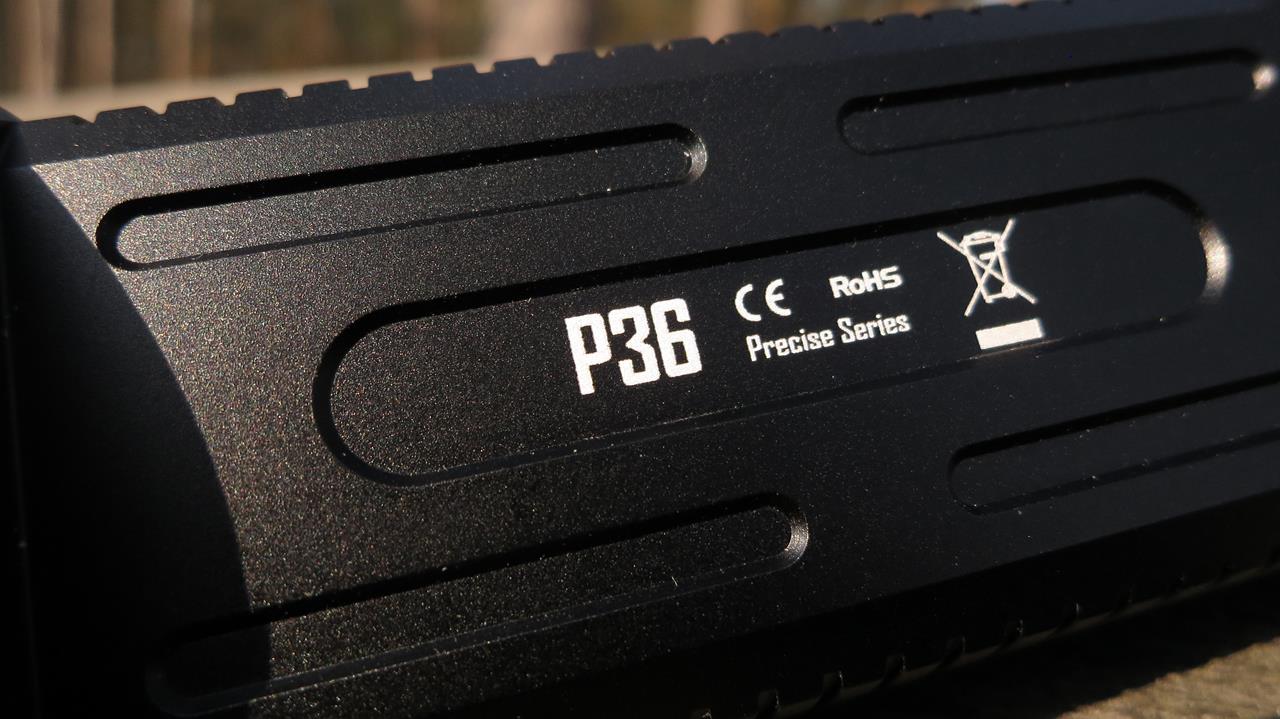
My name is Eryk. I am writing reviews in Polish.
Reviews I translate – google translator.

Some time ago, an old Nitecore model joined my collection, a torch with MT-G2 diode with a beautiful neutral color - Nitecore P36. A colleague from the forum and administrator Miotacze Fotonow - https://www.facebook.com/Miotacze.Fotonow/ , ie nobody else like @Krul-Mateusz lent me for Nitecore SRT9 tests and today we will try to compare the old and much younger model of one of the more well-known flashlight manufacturers.
Technical specification available on the Nitecore website:
P36 - http://flashlight.nitecore.com/product/p36
SRT9 - http://flashlight.nitecore.com/product/srt9
P36 and SRT9 are obtained in very similar packaging, Nitecore consistently does not change the appearance of packaging, it is obviously a better recognition of their products - pure marketing




The sets that we receive with the flashlight are very similar, even identical
SRT9:






P36:




Fast with AR coatings, frosted glass protecting rings (I've always liked it ...)


Nitecore SRT9 equipped with XHP50 diode, red, green, blue diodes and UV diode. OP headlamp without peels and other dirt, Nitecore quality



On the head a large inscription Nitecore SRT9, and the manufacturer's website and the development of the abbreviation SRT - SmartRing Tactical. Head with notches for better heat dissipation, and TURBO can warm up well.

In my opinion, one of the nicer Nitecore models

And the mentioned SRT ring, that is the ring for changing modes. Works the same as in SRT7GT, which I tested with considerable resistance, each mode change is marked with a characteristic click

Under the ring the diode, which serves as the flashlight locator (one of the SRT options), and flashes when the cells are discharged and need replacing

Comes with a clip. The middle tube with notches along, and the ankle on the sides, it's cool in the hand and looks great:


We do not have a classic cap here. The rear part of the housing is plugged. To do this, press the two protruding buttons to get to the links. To re-close the housing, press it again and push the back of the housing. I tested, a few hours spent in the water did not make a big impression on the torch.






As always with Nitecore, a double spraycar

On the back of the housing, a button to turn on the flashlight

The middle tube has a sticker, suggesting the direction of inserting the links,

The control is identical to the SRT7GT tested in the past
And the most important part, or the controller,
To turn on the flashlight we need to use a tactical switch located in the back part of the flashlight, to operate the controller we will use the "intelligent ring".
The controller has a memory of the last mode, but here the memory of the last mode works on the principle if we do not change the position of the ring to change modes until the next flashlight, protect against reverse polarity, too high temperature (the flashlight can really get solid), no it picks up modes even at high temperatures - my favorite, and has no protection against too low voltage, i.e. it does not cut off power, it only signals (description in advance).
controlling
We have no mark on the rotating ring, it's a pity, because without turning the ring we can not determine in which mode the flashlight will be turned on (assuming that we do not have to remember in which setting we left the flashlight).
The ring makes a characteristic, pleasant to the ear, quite quiet "click" at each change of the mode, so that it can be felt not only for the hand, but also signaled a change in sound.
Let's assume that the flashlight is set in "locator" mode, which means more or less in the middle (I mean setting the mode ring), so:
- locator, works on the principle that the diode placed in the head of the flashlight makes one flash every two seconds
- we turn the ring (top to the right) and we have a white light mode at the beginning, it works in the range of 0.1-2150
- move further to the right and we have the Strobe TURBO mode
We return to the position of the locator and shoot from top to left
- the first click is the UV mode
- the next mode is red (13lm)
- then green (19lm)
- blue (3lm)
- signaling of police lights (ie several times red, blue etc ...)
- at the end the lighthouse mode or "BEACON"
The simple driver and arrivals for the user. The most important element here will be control. Each mode change is signaled by a characteristic "click", if we want to set the torch to work in medium mode, the rotating ring works with appropriate resistance and this should not pose any problem.
From my point of view, if the control with a knob is quite pleasant, and you can get used to it, I prefer the traditional solution, or click-control.

Elder Nitecore or P36 is a larger size OP reflector, MT-G2 diode with a beautiful neutral color, without any artifacts, color changes, etc ...


Massive head, clear notches and ribbing, all this is to allow faster transfer of heat to the environment


The middle part in the middle part is very simple, while on the "sides", without knurling with the characteristic stripes.




The back part has a button to turn on the flashlight, and a mode dial. The knob is made of rubber, and even with wet hands there is no problem with the change of modes, and two red LEDs that start flashing when the cell voltage is approaching the need to replace them with a charged one




In P36, to get to the links we have to turn the head, and remove the cell basket from the inside. The threads are well made, and factory-well lubricated (standard nitecore). Unfortunately, the links fit only those with protruding plusik and preferably with security.








control:
After switching on the flashlight, turn the knob to change the modes. Fixed modes are up to 10, in succession:
2 Im; 20lm; 80lm; 210lm; 380lm; 600lm; 850lm; 1100lm; 1500lm; 2000lm. In the case of P36 it is difficult to say "too few modes", there will probably be those for which the lack of the 0.1lm mode crosses the entire flashlight ...
We have the hidden possibility of turning on the instant moon or TURBO from the position of the switched off flashlight.
We set the flashlight with the reflector away from us, and the back part to us, and the knob is at the top,
- one click to the left and quickly turning on the flashlight, it will start in TURBO
- one click to the right and quick switching on the flashlight - will start in the moon.
Strobo is still hidden. Clicking quickly when the flashlight is on we turn on Strobo fixed.
If the flashlight is off or on and hold the button, Strobo will flash as long as we keep the button. Simple and good solution.
There is also protection against too low voltage cells. The flashlight takes over the modes and informs us about the low charge status of the cells with red LEDs located in the back of the housing.
I also did brightness level tests in time using the "Lux Meter" application on android.
Nitecore SRT9 with Thrunite 3400mAh protected and Samsung INR18650-35E


And P36, also with the same links


As you can see, it is not flat; (a pity, because with the 2 * 18650 power supply the manufacturer could better use the potential of flashlights.
Size comparison:
Nitecore P36, Nitecore SRT9 and Acebeam EC35. P36 noticeably the biggest in the entire stake.


Nitecore SRT9, EC4 and P36

EC4 and SRT9 are similar in magnitude


UV torch FiTorch MR35

Nitecore SRT9 (I do not think I have to comment ...)

Weight with links:
SRT9 -323 grams

P36 - 346 grams

Nitecore EC4 - 265 grams

And you can ask yourself ... where did Nitecore make a mistake? ...
Field shots, camera settings ISO-200, f / 2, 1s, white balance - Fluorescent H
Nitecore P36 - modes from 10 to 5






Nitecore SRT9

Nitecore EC4 (mod on XM-L2 U2 3C)

Klarus G20L

Nitecore P36

Nitecore EC4 (mod on XM-L2 U2 3C)

Klarus G20L

Nitecore P36

Nitecore SRT9

Nitecore EC4 (mod on XM-L2 U2 3C)

Klarus G20L

FiTorch P26R (neutral)

And finally, the test of discharged cells up to 3.45V
Nitecore P36

Nitecore SRT9

Nitecore SRT9, diodes: red, green, blue:



Full size photos:
https://drive.google.com/drive/folders/1mWWarIqbJV6niruCPGjfO_p3gWQbXVWC?usp=sharing
A few words of summary:
I will start with dimensions. Looking at SRT9 and P36 you can see a significant difference in dimensions, and in the case of P36 you can see the passage of time. Currently, most manufacturers tend towards the smallest size and the greatest "power". In terms of performance, I can not blame any of the flashlights. The P36 is matte, the SRT9 is more shiny .. pity, I like matte flashlights.
Control, here I think it's more a matter of taste, if I had to choose, definitely SRT9, I can change the mode with one hand, in P36 too, but it requires more commitment, although looking at the simplicity and ingenious (in my opinion) driver Nitecore EC4 , I would not choose any of the above.
The quality of light - here the P36 beats the SRT9 head. Of course, SRT9 has a UV diode and diodes: red, green, blue, but how many people are able to use these diodes? Not to mention the quality of the main diode in P36 and SRT9. In P36 it's a beautiful neutral diode, and SRT9? We can choose all ... on condition that it will be cold, ehh.
Both P36 and SRT9 are well-made torches, I like smaller flashlights (Nitecore EC4 is smaller, lighter, and in my opinion the maximum of a flashlight powered by two 18650 cells), with ordinary controls, so the opinion would not be completely objective, but if I had to choose something for myself, I would look for something smaller.
Regards
Eric









